TheBetterVacation.com
Everything about tourist attractions

Kew Gardens – ticket, prices, discount, hours, entrance, explorer train

Kew Gardens has a rich history dating back to the 18th century when Queen Caroline established it as a royal estate.
Today, it is home to over 50,000 living plants, making it one of the world’s largest and most diverse collections.
Declared a UNESCO world heritage site, Kew Gardens houses the world’s most diverse and exotic collection of plants.
Kew Gardens is often described as a perfect place to escape the hustle and bustle of London, with its picturesque landscape and wondrous, gleeful attractions.
This botanical garden offers many attractions, including the iconic palm house with its exotic rainforest and The Princess of Wales Conservatory, where you can explore ten of the world’s climatic zones.
This article covers everything you must know before booking Kew Gardens tickets.
Table of contents
What to expect at kew gardens, where to book tickets, how do online tickets work, kew gardens ticket prices, kew gardens tickets, visiting kew gardens for free, how to reach kew gardens, victoria gate, elizabeth gate, brentford gate, the lion gate, kew gardens opening hours, best time to visit kew gardens, kew gardens, the palm house, the temperate glasshouse, the formal gardens, the treetop walk, minka house and bamboo forest, kew gardens explorer train, kew gardens map, faqs about the kew gardens.
Picture yourself strolling through the iconic Palm House, surrounded by lush tropical greenery that transports you to exotic landscapes.
Marvel at the grandeur of the Temperate House, where towering canopies of rare plants beckon you into a botanical haven.
The Waterlily House offers serenity, as colossal lily pads dance on reflective waters, while the Davies Alpine House showcases the resilience of alpine treasures.
Ascend the Treetop Walkway to satisfy the childlike yearning of gliding through treetops.
Explore the Princess of Wales Conservatory, a climactic voyage through ten diverse zones.
Engage in an interactive childlike dreamland designed for children at the Children’s Garden at Kew with towering treehouses, imaginative landscapes, climbing structures, and a classroom of wonders, which spark curiosity and creativity.
Indulge in a delicious feast and educational experience at the unique, almost surreal Family Kitchen and Shop, indulge in High afternoon tea at the Botanical Brasserie, or dine at any of the fine restaurants at Kew .
People visit Kew Gardens for its serene atmosphere and the beautiful events it orchestrates throughout the year, such as Christmas at Kew.
Top attractions you can explore at the Kew Gardens are:
- Queen Charlotte’s Cottage
- The Temperate Glasshouse
- Pagoda (closed until spring 2024)
- Xstrata Treetop Walkway
- Waterlily House
- Davies Alpine House
- The Princess of Wales Conservatory
Back to Top
Tickets for Kew Gardens are available online and at the attraction.
Online ticket prices tend to be cheaper than tickets at the attraction.
When you buy online, you can avoid the long queues at the ticket counters.
Because some attractions sell a limited number of tickets, booking early helps avoid last-minute disappointments.
Visit the booking page for K ew Gardens , select your travel date and the number of tickets, and make the booking.
Once you complete the booking process, the tickets will be mailed to you.
You do not need to carry printouts.
Show the e-ticket on your smartphone at the entrance and walk in. Carry a valid ID.
The tickets for the Kew Gardens cost £14 for adults between 30 and 64 years and £12 for those above 65 years.
Youth between 16 and 29 and students (with a valid ID) get a discount and pay only £7 for a ticket.
Tickets for children between four and 15 cost £4.
Kids under four years old can get in for free.
There are two family ticket options.
The first option with one adult and two children costs £29, and the second option with two adults and two children costs £48.
Seniors (64+ years) and disabled visitors get a fixed £2 reduction on the adult ticket’s cost.
This ticket is the cheapest way to explore Kew Gardens
Regular Kew Gardens and Kew Palace tickets offer entry at any four entrance gates.
With this ticket, you get access to the Art Galleries (Marianne North and Shirley Sherwood), Treetop Walkway, Greenhouses, and the Children’s Garden.
You also get admission to Kew Palace. However, the palace is closed in winter.
If you’re visiting between February and March, this ticket also grants you admission to the Orchid Festival.
Free guided walking tours are offered at least twice a day.
You’ll be provided with a map and guide to the highlights of the season.
You can claim a full refund if you cancel more than 24 hours from the day of your visit.
Ticket Prices
Adult Ticket (30 to 64 years): £14 Student Ticket (with a valid ID): £7 Youth Ticket (16 to 29 years): £7 Senior Ticket (60+ years): £12 Child Ticket (4 to 15 years): £4 Infant Ticket (up to 3 years): Free Family Ticket (1 adult & 2 children): £29 Family Ticket (2 adult & 2 children): £48

If you would love to learn more about flora and fauna at Kew Gardens, check out this ticket + audio guide combo .
Kids aged four years and below walk into Kew Gardens for free.
Registered blind and partially sighted visitors can enter Kew Gardens for free.
Caregivers of visitors with a disability can also enter for free.
However, if you are a local, the best way to ensure free entry into Kew Gardens is by becoming a Friend of Kew .
This is a value-for-money offer and can be yours for an affordable price. The membership stays active for the entire year.
The London Pass helps you enter more than 80 tourist attractions for free. Save time and money. Buy The London Pass
The Kew Gardens is in the London borough of Richmond upon Thames, just 30 minutes from Central London. Get Directions .
Kew Gardens has four main entrances, and the River Thames flows 500 meters (.31 mile) from the Elizabeth Gate.
The 300-acre stretch of exotic gardens in southwest greater London is a perfect relaxing place.
The nearest station to Kew Gardens is the aptly named Kew Gardens station .
The District line and London Overground serve it and lie in Zone 3.
Once you get down at the Station, you must walk half a km (one-third of a mile) to Victoria Gate of the Botanical Gardens.
If you’re taking the train, you must arrive at Kew Bridge station .
From Kew Bridge Station, Elizabeth Gate is the closest Kew Gardens entrance. You can reach it in 10 minutes.
South Western Trains run services from Waterloo via Vauxhall and Clapham Junction.
Buses are the most convenient and accessible method for traveling around the city.
To reach Kew Gardens by bus, you can use routes 65, 391, 237, or 267.
Route 65 stops near the Lion Gate , the Victoria Gate, and the Elizabeth Gate.
Route 391 will drop you near the Kew Gardens station and the Elizabeth gate.
Route 237 and Route 267 pass through the Kew Bridge station.
Note: Visitors can also use riverboat service from the Westminster Pier to the Kew Pier during summer. The Kew Pier is 500 meters (.31 mile) from Elizabeth Gate.
Kew Garden parking
Visitors can park their car at Ferry Lane near Brentford Gate or around Kew Gardens.
Parking motorcycles and mopeds are free.
Around Kew Gardens, only limited parking is available after 10 am.
If you are a Blue Badge holder, you must head for the Elizabeth Gate, which has three disabled-access parking bays and drop-off areas.
Bicycle racks are available at all four entrance gates and can be used for free.
Check out parking at Kew Gardens to know more.
Kew Gardens entrances
Kew Gardens has four major entrances.
Tourists with Kew Gardens tickets bought online can enter through any of these four entrances.

The Victoria G ate is nearest to the Palm House, the botanical, Marianne North, Shirley Sherwood galleries, the broad walk borders, and the Victoria Plaza cafe and shop.
The Kew Gardens station is the closest to the Victoria Gate.

The Elizabeth Gate is at the Western end of this attraction and is closest to the Kew Bridge Station .
The closest attractions to this gate are the orangery restaurant, the Princess of Wales Conservatory, the Kew Palace and Royal Kitchens, and the Hive.
Brentford Gate is situated next to Kew’s Ferry Lane car park.
The nearest attractions to the Brentford Gate are the white peaks cafe and Shop, climbers and Creepers, and the Treehouse Towers.
Richmond station is the nearest to the Lion Gate.
The Japanese Gateway and the Pavilion restaurant are the closest attractions to the Lion Gate.
Note: Bicycles, tricycles, roller skates, skateboards, and scooters are prohibited in the Gardens. There are locker services at the Victoria and Elizabeth Gate, so you don’t have to worry about your personal belongings.
When you buy Kew Gardens and Kensington Palace tickets together, you get a 10% discount code, which you can use (five times!) to get discounts on future purchases.
Kew Gardens opens at 10 am daily, but its closing times are seasonal and vary throughout the year.
The Gardens’ closing time ranges from 3 pm to 6 pm, depending on the season.
Closing time schedule
The last entry into the Kew Gardens is always one hour before closing.
*The dates usually remain the same every year. For a more updated timing, click here .
The best time to visit the Kew Gardens is as soon as they open at 10 am, for you get to see the flowers and the plants at their best and avoid the crowd.
We also recommend planning your visit during weekdays instead of weekends for a less crowded experience.
The Kew Gardens are at their best from late August to early September.
But since the botanical gardens have plants of all seasons, you can visit them in any season.
For instance, if you visit the Kew Gardens in Autumn, you will find the gardens filled with red and yellow foliage.
It is best to visit the Arboretum in Autumn.
Similarly, in winter, the Kew Gardens is prepared for the holiday season.
It is the best time to observe the orchids planted in the Princess of Wales Conservatory.
Spring is already known as the season of flowers, and visitors can see the Kew Gardens blooming with all the different kinds of flora.
The Waterlily House is at its best during this season, and the weather is perfect for spending the day outside.
Whatever the season, we recommend you add Kew Gardens to your holiday itinerary.
What to see at Kew Gardens
The Royal Botanical Gardens at Kew offers visitors several beautiful and exotic attractions, making it a highly-rated destination.
Some of these attractions include different glasshouses, galleries, unique eateries, formal gardens, sculptures, a pond, and the Treetop Walkway.
Here is our list of the must-see at Kew Gardens, London .
The most important attraction here is the Kew Gardens, which you can’t miss.
Kew offers 300 acres of colorful happiness, with flora and fauna of all kinds.

The Palm House has been one of the most popular attractions at the Kew Gardens. It is the most important Victorian iron and glass structure still surviving.
You will observe that the glasshouse is divided into world areas, and the specimens are attached with complete and detailed explanations. The Palm House also has some interactive activities for both children and adults.
The Temperate Glasshouse is home to a collection of the rarest and the most threatened temperate zone plants.
The temperate glasshouse takes care of plants on the verge of extinction.
It is considered the world’s largest Victorian glasshouse and was re-opened in 2018 after a five-year-long restoration.
The Formal Garden is a dedicated Japanese landscape that attracts tourists with its magnificent aura.
Professor Fukuhara of Osaka designed it after getting inspiration from the Momayama period.
The Treetop Walk is an 18-meter-high structure that offers a splendid view of the Royal Botanical Gardens.
It also offers a 200-meter walkway around the tree tips of lime, chestnut, and oaks.
The Minka house and the Bamboo forest are other places inspired by Japan.
The Minka house is a wooden house that keeps Japanese history and values intact.
Until the 20th century, the Minka house was used to move around in an emergency (like an earthquake) as they were not cemented houses.
Kew Palace is the country’s smallest palace. It was built in 1631 for silk merchant Samuel Fortrey.
King George II, Queen Caroline, and later, King George III sought refuge during his mental illness.
Queen Charlotte also lived there and passed away in the palace. It provides an intimate look into royal history.

The Kew Explorer land train is the perfect way to explore the massive gardens.
Visitors can get the Kew Explorer tickets once they are in the garden.
During the guided tour around the Gardens, visitors learn about Kew’s flora, fauna, and historic buildings within the complex.
The 40-minute train tour starts from Victoria Gate and ends at Elizabeth Gate.
Kew Gardens ticket holders can get on and off at any of the seven stops on the route.
Stop 1 – Victoria Gate
Victoria Plaza shop and cafe, Palm House, The Botanical cafe
Stop 2 – Temperate House
Marianne North Gallery, Shirley Sherwood Gallery of Botanical Art, Davies Exploration House, and Pavilion Restaurant.
Stop 3 – The Great Pagoda
Lion Gate and the Japanese Gateway.
Stop 4 – Natural Area and Woodland
Pinetum, Log Trail, Badger Sett, Stag Beetle Loggery, Queen Charlotte’s Cottage, Waterlily Pond, Lake, and Sackler Crossing.
Stop 5 – Rhododendron Dell
Bamboo Garden, Rhododendron Dell, Minka House, Riverside Walk, and Oak collection.
Stop 6 – Brentford Gate and car park .
Stop 7 – Elizabeth Gate/Orangery
Orangery restaurant, White Peaks café and shop, Children’s Garden, Climbers and Creepers, Queen’s Garden, and Kew Palace.
Visitors may have to skip a train and wait for their turn for the next one during peak times.
Download the route map of the Explorer train
Navigating Kew Gardens can be a little challenging if you are a tourist.
There is help all around, but the place is so huge that extra help won’t hurt, primarily because the attractions are spread all around.
A map of the Kew Gardens can help you navigate the attraction easily.
It especially comes in handy if you visit with kids or older people.
Here are some frequently asked questions bout the Kew Gardens in London.
You can buy your tickets both online and at the location, but we suggest you book your tour online to skip the hassle of waiting in queue.
Kew Gardens offers a discount of £2 for senior citizens and disabled visitors, £8 for students, and £10 for children between 4 and 15. There are special group rates and family packages, too.
No, you do not get explorer train access with this ticket. However, you can buy it once you are inside the Gardens.
While it’s generally not required, you must carry a valid ID if you’ve purchased a ticket that includes a discount for students, seniors, or residents.
Yes, Kew Gardens is committed to being fully accessible to all visitors. Wheelchairs are available for free hire, and there are accessible toilets and eating areas. Most buildings, gardens, and attractions are wheelchair-friendly.
Yes, Kew Gardens has several dining options ranging from cafes and restaurants to smaller kiosks. These offer a variety of meals, snacks, and drinks.
Visitors to the Kew Gardens can purchase various plants at the plant center, with the selection varying by season in the shop. Its opening times are from Monday to Saturday from 10 am to 5 pm. On Sundays, it stays open from 11 am to 5 pm.
Sources # Kew.org # Wikipedia.org # Britannica.com # Whc.unesco.org The travel specialists at TheBetterVacation.com use only high-quality sources while researching & writing their articles. We make every attempt to keep our content current, reliable and trustworthy .
Popular attractions in London
How useful was this post?
Click on a star to rate it!
Check out all the things to do in London
This article was researched & written by
Vrinda Bhatia
She loves to explore new destinations and places at every opportunity available, but she loves to do so with proper planning and according to set schedules. She doesn’t prefer well-known destinations and clichéd touristy activities. Once back, she regales her friends with exciting stories from far off destinations. During her travels, she loves to dress up like the locals. Favorite Cities: Quebec City, Nice, Dodoma, Marrakech
Edited by Rekha Rajan & fact checked by Jamshed V Rajan
1 thought on “Kew Gardens – ticket, prices, discount, hours, entrance, explorer train”
I was interested in purchasing a ticket for a year several years ago I used a yearly ticket
Leave a Comment Cancel reply
Save my name, email, and website in this browser for the next time I comment.
FireStorm Internet runs this website to provide the most accurate and up-to-day information about tourist attractions.
Our Address
FireStorm Internet, 203, 30C, Bollineni Hillside, Perumbakkam Main Road, Nookampalayam, Chennai, India. Pin Code: 600126
About Us The Team Contact Us Affiliate Disclaimer Content Policy HTML Sitemap Privacy Policy Terms of Service
Helicopter Tours Food Tours Ghost Tours Stadium Tours Hop On Hop Off Tours Zoo Tickets Madame Tussauds Linq High Roller Summit One Vanderbilt
© 2024 FireStorm Internet
Kew Gardens Visitor Information
mitakag / Getty Images
The Royal Botanic Gardens, Kew was awarded UNESCO World Heritage Site status in July 2003 due to its work on history and development of garden landscapes and its role in science and plant research.
Quick Facts
Size of the gardens.
The Gardens are 300 acres. To get an idea of walking times between landmarks see the Kew Gardens map (pdf). If you are visiting with small children be prepared to double walking times.
How Much Time?
It is suggested that most people take around three hours to explore the whole of the length of the Gardens. (It is about one mile across and takes about 40 minutes to walk across.) We usually stay the whole day and still never see everything. If you have time, spend the whole day at Kew. Don't rush it; stay longer, have lunch, and enjoy your visit.
Overhead Noise
Kew Gardens is on the Heathrow Airport flight path. Noisy planes go overhead every few minutes. Initially this is distracting but, honestly, you soon get used to it and stop noticing them.
Photographer's Paradise
Kew is a photographer's paradise. You will see lots of people with cameras ranging from the cheap disposables to amazing long lenses on professional equipment. Most people walk around holding their camera and a map so if your camera has a neck strap do use it. As with any photo opportunity make sure you have all you need for a day away from the shops: extra batteries, film (if not digital), and an empty memory card or lots of space (for digital).
Exhibitions
Kew has a history of outdoor sculpture exhibitions and some of the best have been David Nash at Kew and Moore at Kew.
Getting to Kew
Use Journey Planner to plan your route by public transport.
By London Underground
Nearest Tube Station : Kew Gardens. Take the District Line towards Richmond.
Approx. Travel Times: 15 minutes from Earl's Court and 30 minutes from Westminster on the District Line to Kew Gardens Station (Zone 3).
Top Tip: If steps are a problem for you, for example, if you are traveling with a child in a buggy, go to Richmond station (it's only one more stop) and come back on the Eastbound train to Kew Gardens. This way you can avoid the steps and bridge over the train tracks.It's a ten-minute walk from Kew Gardens Station to Kew Gardens Victoria Gate.
Train services (South West Trains) from Waterloo, via Vauxhall and Clapham Junction, stop at Kew Bridge station.
Planning Your Trip to Kew Gardens
Kew is open 363 days of the year (closed for Christmas ) so you can visit all year round. The plants vary throughout the seasons but that is what makes more than one visit so interesting. Before you visit you can get lots of useful information from the Kew Gardens website, such as the Parent's Survival Guide.
Wear a jacket that is easy to remove when inside the glasshouses as these buildings are hot and humid. Wear flat shoes as narrow heels will go through the holes in the grated floor in the Palm House.
You will be given a free Visitor's Guide when you arrive. This includes a map and information on facilities. The Visitor's Guide is updated regularly due to the seasonal changes at Kew Gardens and is usually only valid for three months as the botanical world changes so fast.
Toilets Upon Arrival at Victoria Gate
Toilets are the other side of Victoria Plaza (go through and come out the other side). There are more toilets and another baby changing station around the corner along the side of the lake (less than a minute away).
Kew Explorer Bus Tours
If you really are short of time you can see Kew in under an hour on the Kew Explorer. There is an additional charge for this hop on-hop off tour of Kew with 8 stops. Tours are daily and run every hour from Victoria Plaza. I haven't tried this tour but it looks like fun. It includes a running commentary of the sights.
Walking Tours
There are daily walking tours, usually two a day, lasting 60 minutes. You need to register at the Guide Desk just inside Victoria Plaza at least 15 minutes before the start of the tour. There are also often other seasonal tours available so check at the Guide Desk for information.
Kew Gardens Rules
- no climbing trees
- no ball games
- no bikes and scooters
- guide dogs only
Kew Gardens Opening Times
- Open Daily, Closed 24 and 25 December only.
- Closing times vary throughout the year
- Dates are approximate. Check Kew Gardens website for exact dates this year.
Fire Alarm Tip
All public indoor areas have regular fire alarm testing. Check doors to indoor areas for fire alarm testing notices.
More Tea for Your Money
A paper cup of tea in the Victoria Plaza is the same price as a pot of tea (2 cups) in the Pavilion Restaurant.
Ramp Access to Temperate House
Disabled access is available at the back of the Temperate House.
Best Picnic Spots
- Next to the River Thames , near the Badger Sett, marked as a View Point on the free map. There are bench seats available and plenty of space to laze on the grass.
- In front of Queen Charlotte's Cottage is a good quiet picnic spot, as it has even ground and some shaded areas, although the nearest toilets are about 10 minutes walk away, near the Waterlily Pond.
- Near the Waterlily Pond is another good spot with bench seating.
Kew Gardens Ticket Information
- Visit this attraction for free with a London Pass
- Buy the London Pass now (Buy Direct).
There are different Winter and Summer ticket prices. Children (under 17) go free. For the latest prices see the Kew Gardens website. You can also buy Kew Gardens tickets through Viator. Concessions are available for 60+, students 17+ in full-time education, long-term disabled, unemployed.
Kew Gardens Shopping and Eating
- Victoria Plaza Shops:
- Garden Shop - plants and objects for your garden
- Book Shop - botanical and garden-related books
- Cook Shop - exclusive sweets, teas, coffees and condiments
- Gift Shop - wide range of unique mementos
- White Peaks Children's Shop - pocket money toys, fun games and small toys
All purchases from Kew Gardens shops help to support Kew's vital science-based conservation work throughout the world.
- Victoria Terrace Café: This is right next to the Victoria Gate which is the entrance/exit you use when traveling by tube or train. It serves tea, sandwiches, cakes, and snacks and is open the longest of all the cafes. Top Tip: A paper cup of tea in the Victoria Plaza is the same price as a proper pot of tea (2 cups) in the Pavilion Restaurant.
- Pavilion Restaurant: This would be my first choice for lunch or a snack as it has a wide choice of well-priced hot and cold meals, a lovely choice of cakes, and that pot of tea. It's located near the Temperate House and the Pagoda, so in the southern part of the Gardens, and has a large outdoor seating area. This venue is most popular with regular visitors. Note there are extra toilets nearby on the edge of the Gardens).
- White Peaks Café: The menu here has improved dramatically and I've seen hot carved roast in a bap as well as children's lunch boxes.
- The Orangery Restaurant: Enjoy seasonal dishes in this elegant Grade 1 listed building, built in 1761.
Visiting Kew Gardens With Children
The best news is children under 17 go FREE to Kew Gardens! The Gardens are 300 acres. To get an idea of walking times between landmarks see the Kew Gardens map. It's suggested a five-year-old will take 15 minutes to walk from the Victoria Gate to the Xstrata Treetop Walkway.
Buggy Access
Kew's landscape has many paths and most buildings have ramped access. The only areas that are not accessible with buggies are:
- Xstrata Treetop Walkway (there's a buggy park at the bottom)
- Galleries in both the Temperate House and the Palm House
- The Waterlily House
- The Aquatic Display in the Palm House (no problem in the Princess of Wales Conservatory)
- Queen Charlotte's Cottage
Check the Kid's page of the Kew Gardens website for events and activities. Here are some tips and fun ideas:
- Climbers and Creepers: Kew's interactive play area. Amazing fun for 3- to 9-year-olds. Explore the Gardens first as once the kids get here they won't want to leave! Don't start your visit with Climbers and Creepers, though, or you'll never get to see the gardens!
- Treehouse Towers: Kew's outdoor play area, next to Climbers and Creepers.
- Aerial walkways in the Palm House and the Temperate House.
- King William's Temple (behind the Palm House). Great for echo practice!
- Evolution House: Beware of the wet floor from the noisy waterfall. This area is meant for kids so they can learn about plant evolution.
- Stag Beetle Loggery: Not much to see.
- Giant Badger Sett: You can walk through the underground tunnels.
Kew Gardens Highlights
- Xstrata Treetop Walkway: Xstrata Treetop Walkway is 18 meters high and offers the chance to explore the tree canopy and views across London.
- The Palm House: Palm House is the stunning glass house near to the Victoria Gate entrance. At one end you can see the world's oldest pot plant, a Cyrad, and at the other end look at the sealing wax plant which turns red at the top. The Palm House is very humid - look up for the high steam jets. The plants are divided into areas of the world. Beware of overhanging plants on the walkways. Use the ornate wrought iron spiral staircase up to the gallery and down to the aquatic display.
- Princess of Wales Conservatory: Opened by Princess of Wales on 28 July 1987, the design now seems rather '80s and dated. There's an aquatic display on the lower level. Buggy access via sloped walkways with wide low steps – not wheelchair-friendly. ( Top Tip: the Aquatic Display in the Palm House is better.)
- Temperate House: The world's largest surviving Victorian glass structure. It took 38 years to build. As you enter the Main Block there is a 'wow factor'. It has a stunning high ceiling and the plants are huge. It is not uncomfortably hot, like the Palm House. In the center, you can see the world's tallest indoor plant, a Chilean Wine Palm.
- Queen Charlotte's Cottage: Queen Charlotte (1744-1818) used this as her summerhouse to picnic with her family. The surrounding 37 acres were known as the 'Queen's Cottage Grounds' and was a game reserve.
- Kew Palace: Kew Palace is the smallest and most intimate of the royal palaces. There is an additional charge to visit.
- The Davies Alpine House: Bizarre glass structure, reminiscent of the new Wembley Stadium .
- Pagoda Tree: This is a bit surreal as it's grown sideways. From China, it is grown in Buddhist Temple grounds
Xstrata Treetop Walkway at Kew Gardens
The Xstrata Treetop Walkway at Kew Gardens opened in May 2008 and at 18 meters high, it offers visitors the chance to explore the tree canopy and see magnificent views across London including the London Eye , which was designed by the same architects (Marks Barfield Architects). No extra ticket is required once you have paid your entrance to Kew Gardens. (Remember, under 17s go free.)
There is no other treetop walkway that starts underground but it makes sense to learn about the roots of trees before winding your way up to the treetops. The roots are the most important part of a tree but they couldn't be exposed so you can see interesting animatronics and a wonderful bronze sculpture of tree roots. This area is open all the time and it is expected that wildlife will go in at night so all exhibits have been built to withstand the elements.
Unfortunately, the lift has never worked so you will have to climb the steps up to the 200-meter long treetop walkway. There is a classroom platform which would be a fabulous place for a lesson!
The structure is made from weathered steel and will be maintenance free for 100 years and is expected to last 500 years! The Xstrata Treetop Walkway can accommodate 3,000 visitors a day and is a major highlight when you visit.
Stay Cheaper By Staying Close to - Not in - London
Charlotte Guide: Planning Your Trip
Sightseeing on the Number 11 London Bus
New York Botanical Garden: The Complete Guide
How to Travel From London to Birmingham by Train, Bus, and Car
20 Best Things to Do in London When It Rains
How to Enjoy a Quick Layover in London on a Budget
Westminster Abbey
17 Best Romantic Things to Do in the United Kingdom
London's Best Toddler-Friendly Attractions
What to Do and See During One Week in London
A Visitor's Guide to Hampton Court Palace in London
Visitor's Guide to the Luxembourg Gardens in Paris
26 Free Things to Do in London, England with Kids
London's Best Afternoon Tea Venues
The Top 20 Things to Do in London

- Czech Republic
- Northern Ireland
- United Kingdom
- El Salvador
- South Africa
- Work with me
- Cookie Policy
- Privacy policy
Everything you need to know about visiting Kew Gardens in London
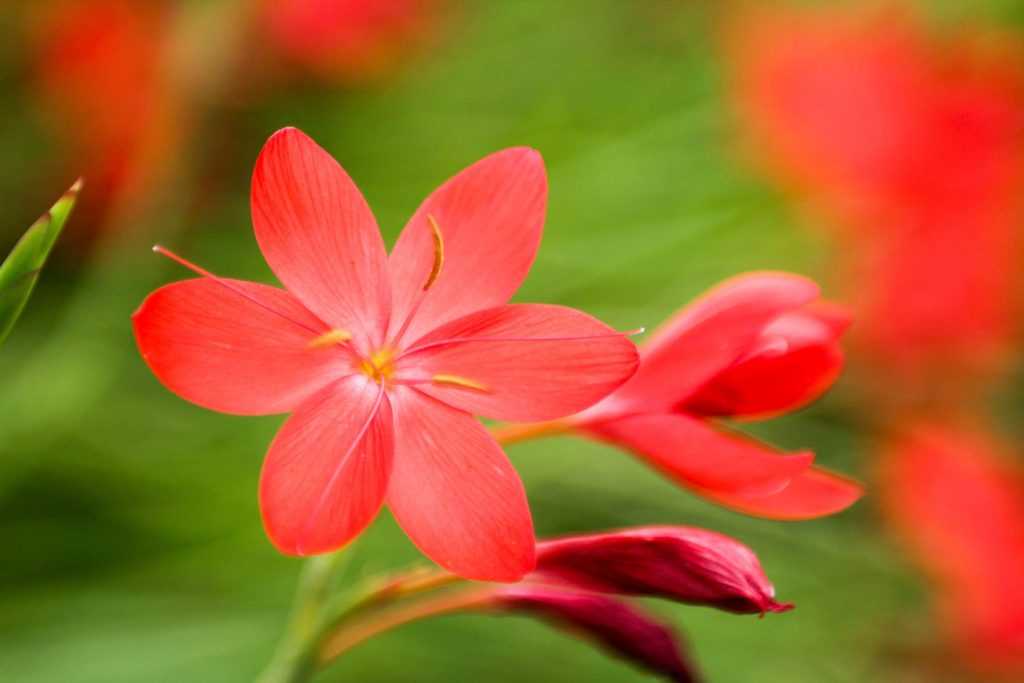
Updated: October 2019
If you are looking for a getaway from the busy London or just want to spend a day out in nature with your family, then a visit to Kew Gardens is the perfect answer. I have created for you the perfect guide with all the attractions of the Royal Botanical Gardens and everything you need to know about where to buy your ticket from and how to get there, to make your visit easier.
Where is Kew Gardens
Kew Gardens is situated in the South West of London, in the beautiful neighbourhood of Richmond upon Thames. Being the largest UNESCO world heritage site in London and more than 250 years old, Kew Gardens is the home of the Millennial Seed Bank, the biggest wild plant seed bank in the world. The Kew Estate occupies an area of 121 hectares home to over 30,000 plants. You can find here large flower and vegetables gardens, woodlands, lakes and ponds, conservatories, natural reserves and wildlife.
When is the best time to visit Kew Gardens
Kew Gardens is open every day from 10am until 6pm (from the end of March until the end of October). For the rest of the closing times (due to the shorter days), you can check the schedule here . Kew Gardens is great to visit in any season, including in winter, when they have some amazing light shows. During the year there are several exhibitions and events that transform completely Kew Gardens. You can see a list with what’s on this season here .
How long to spend at Kew Gardens? I would say a day is not enough and you would want to return if you want to see the entire Kew Gardens and palace.
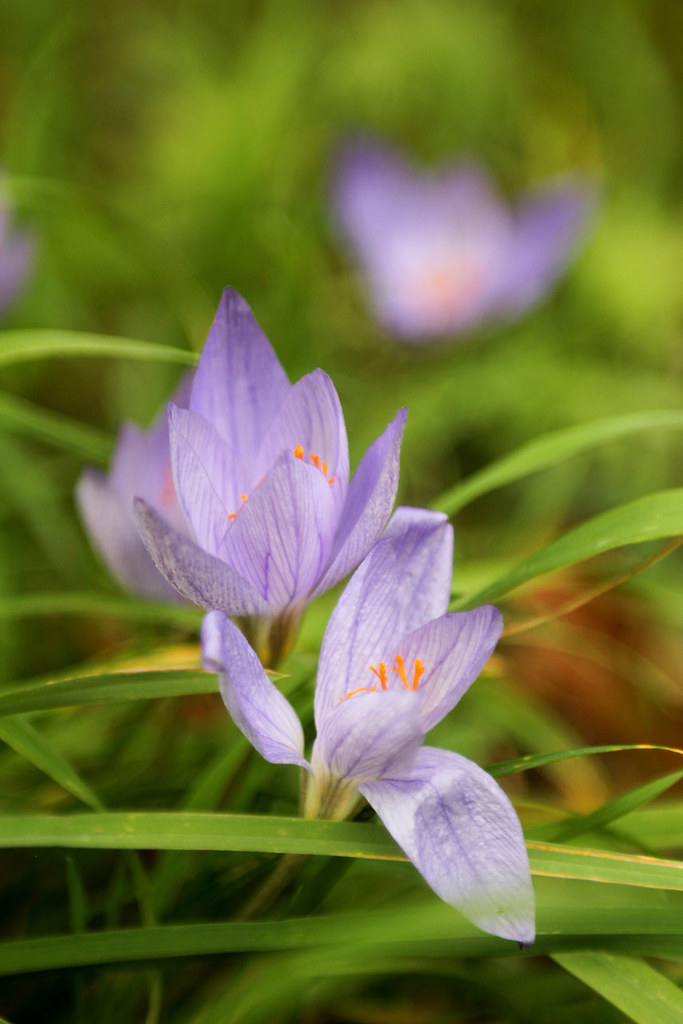
How to get to Kew Gardens
You can reach Kew Gardens very easy from central London by tube, the overground, bus or train. If you plan on traveling by tube, Kew Gardens is on the District line, in zone 3 (£3.30 one way with an Oyster or contactless card). The station is 500 meters from Victoria Gate.
If you choose to travel by train, South West Trains run services from Waterloo station via Clapham Junction and Vauxhall (£4.40 for a one-way ticket). The train station is 800 meters away from Elizabeth Gate.
Buses 65 (Ealing Broadway), 391 (Fulham), 267 (Fullwell) and 237 (White City) connect different parts of London to Kew Gardens as well.
In summer, there is a boat service that runs from Westminster Pier to Kew Pier (500 meters from Elizabeth Gate).
Parking at Kew Gardens: If you arrive by car, there is a parking at Kew Gardens, on Ferry Lane, near Brentford Gate – TW9 3AF. Parking at Kew Gardens costs £7/day for cars and it is free for mopeds and motorcycles. There are some limited free parking spaces on Kew Road after 10AM and keep in mind that restrictions do apply for most residential roads around the area. If you arrive by bicycle, there are bike racks at all four gates.
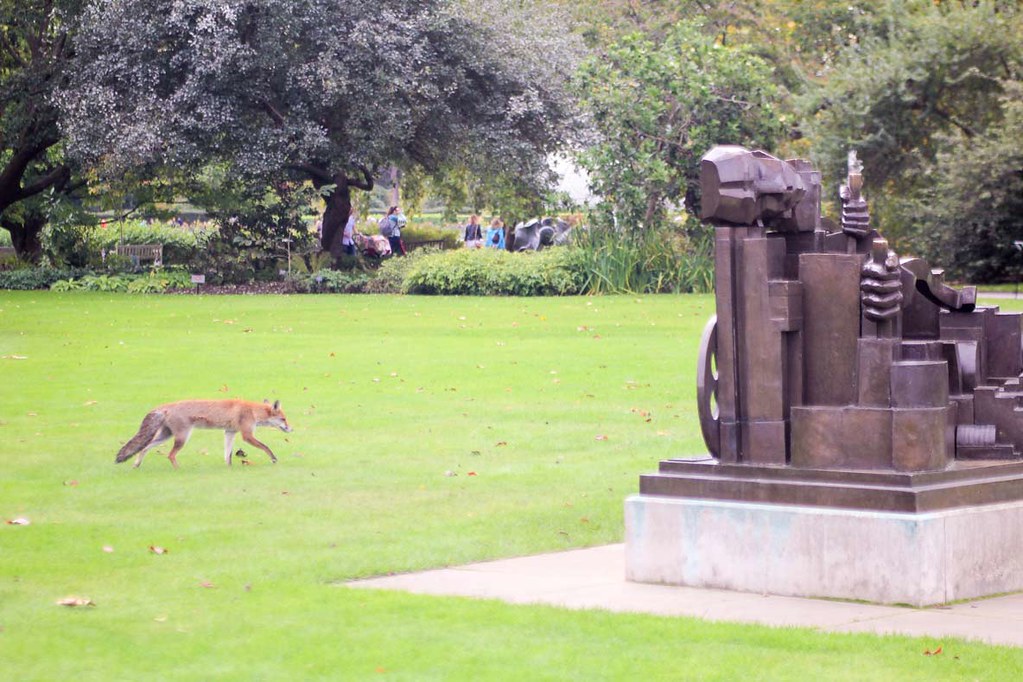
Where to buy your ticket for Kew Gardens
The Kew Gardens entrance fee is £13.50 when you buy it online, from the official Kew Gardens account from Get Your Guide . Note that you can’t buy tickets on the Kew Garden’s website directly. The cheapest place to buy your Kew Gardens and Palace ticket is online, where you can save up to 27% off the gate price. Not only that it’s cheaper but you will also skip the line at the gate, which in summer and during the weekends can get quite long. Click here to buy your ticket online.
In order to skip the queue make sure to print your ticket. For mobile tickets you will need to pass by the till, and the queue can be long during summer weekends. I know that many people are searching on Google if there is a Kew Gardens free entry and the answer in no, in order to visit Kew Gardens you do need to purchase a ticket.
How to plan your visit at Kew Gardens
Even if you are looking just to spend a day out in nature, planning is essential when visiting Kew Gardens because of the big number of attractions and the large area it occupies. You will receive a map of the gardens together with your ticket, but to make things easier, you can also download it from here .
It is hard to say how long to spend at Kew Gardens because it is such a big place. Depending on the purpose of your visit, you will find some suggested routes on the map. However, I will tell you all about the attractions at Kew and how to organise your time so that you can make the most out of your visit. I have started my visit to Kew Gardens from Victoria Gate and headed to the attractions from the East, finishing in the West hours later. I did take my time and enjoyed the strolls through the different gardens and conservatories, chased butterflies (for photos) or gazed at the carnivore plants have their hourly “shower”. I’ve even met some of the permanent residents: a courageous fox, a few curious ducks, a mamma squirrel with 2 baby squirrels behind her and a lonely peacock.
There are a few cafes and restaurants inside Kew Gardens but you are always welcomed to bring your own food if you prefer a picnic under the trees.
The Hive is probably Kew Garden’s most ambitious project, a masterpiece of scientific research resulting in an incredible visual and sound experience. Stepping inside The Hive is like experiencing the inside of a real beehive, with all the sounds and lights triggered by the actual honeybee activity inside the Kew. This makes every moment inside The Hive different.
The Hive was first built for the UK’s pavilion at the 2015 Milan Expo, by Wolfgang Buttress. It is 17 meters tall, it weighs 40 tonnes and it is built from 170,000 of aluminium parts with 1000 led lights.
Because it’s such a popular attraction, I would recommend making your way to The Hive as soon as you arrive at Kew Gardens (the earlier the better). It is a truly fascinating experience.
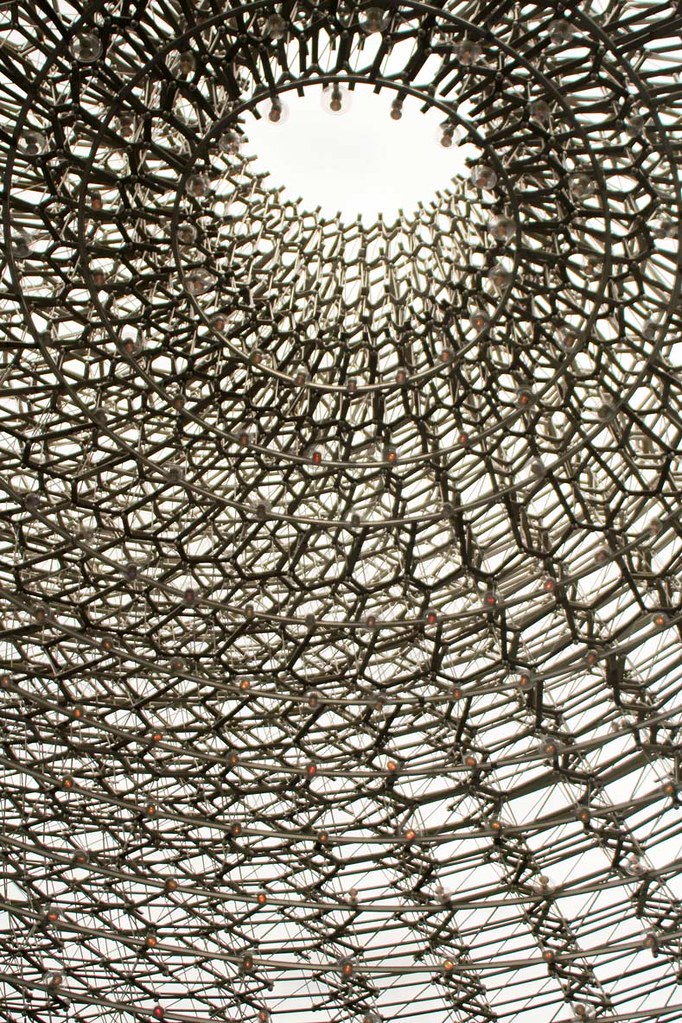
The Treetop Walkway
The Treetop Walkway is a very exciting “climb” for the entire family, especially for children. The metal structure is 18 meters above the ground, 200 meters long and sways in the wind. The views from up there are pretty awesome, over the forest canopy. Some parts of the walkway pass through the branches of the chestnut and oak trees, on which you can observe different birds and insects.

The structure of the walkway was made in such a way that the rust made it look like it blends perfectly with the environment next to it. At the bottom you will find the Rhizotron, an underground laboratory where visitors can learn about how trees grow.
There are 118 steps up to the walkway.
The Palm House
Inside the Palm House you will discover a world of rare and even extinct plants (in the wild) that are growing here due to the efforts of the Kew scientists.

You will find here trees that are at the base of many products that we consume every day: the rubber tree, the Cocoa tree, the Pepper tree (I didn’t even know that pepper grew in a tree!), the sugar cane, the African oil palm or the coffee tree.
The building itself dates from 1844 and it’s an iconic Victorian building made from glass and iron, resembling the hull of a ship. This is because the architects have used techniques from the ship building industry when they designed the glass house.
Davies Alpine House
The Alpine House is quite the masterpiece of architecture if we take in consideration that it was built in such a way that 90% of the ultraviolet light of the sun passes through to the plants, in has an automatic system of blinds that go down when the temperature is too high outside and the air is cooled down though a system of pipes underneath the building.
There are over 200 alpine plants here, which is the wild are usually growing at altitudes of 2000+ meters.
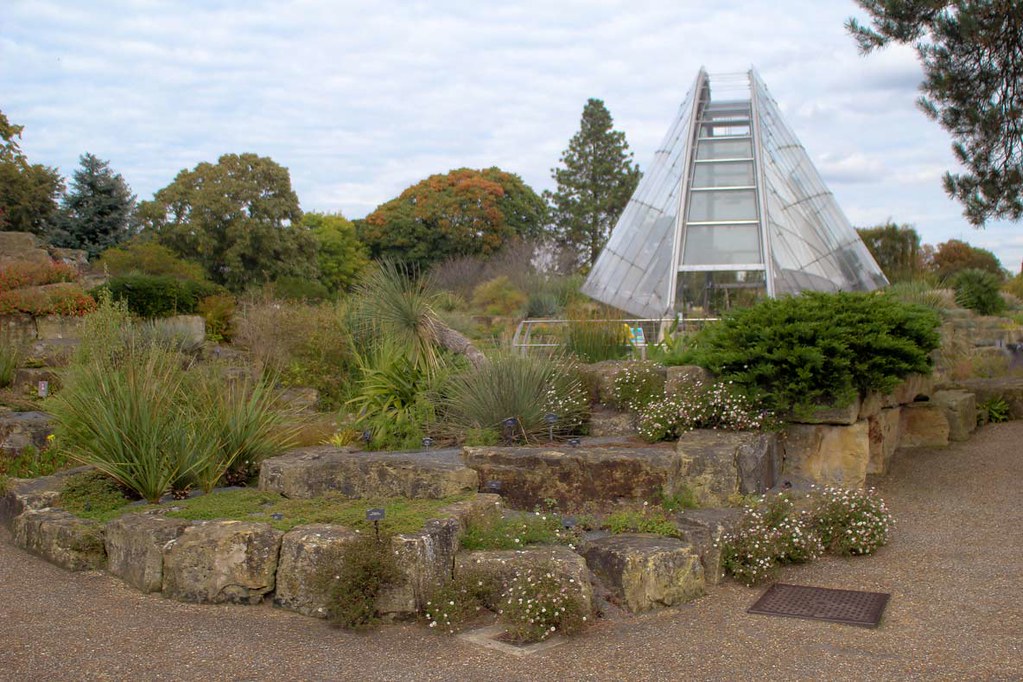
The Temperate House
The Temperate House is currently closed for restauration and it will be opened sometimes next year, after 5 years of works. Inside the Temperate House there are collections of very rare and threatened species of plants. Some of the plants you will see here have been extinct in the wild and only live at Kew. Such a plant is the Encephalartos woodii (The South African cycad).
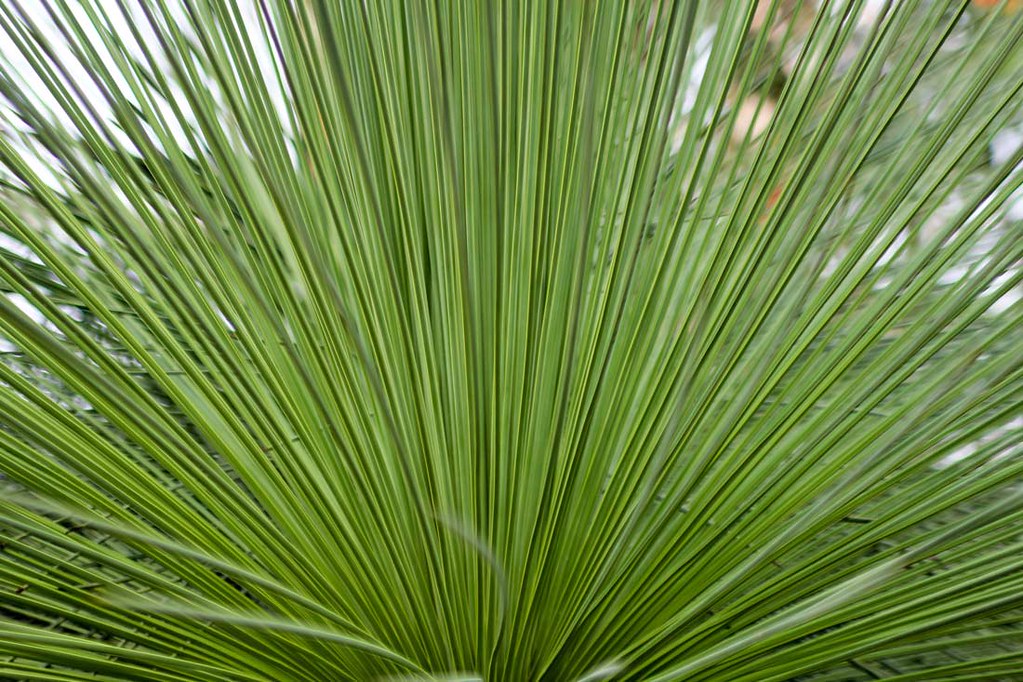
The Waterlily House
Have you ever seen a giant waterlily? Me neither, before visiting Kew Gardens. The Waterlily house is the most humid greenhouse from Kew Gardens and is the home of many heat loving plants. It was interesting to learn how the waterlilies from Amazon can grow so big that they can support a child’s weight. Of course, it is not recommended (or allowed) to let your child jump on them, but still it’s amazing how much strength these plants hold on their leaves.
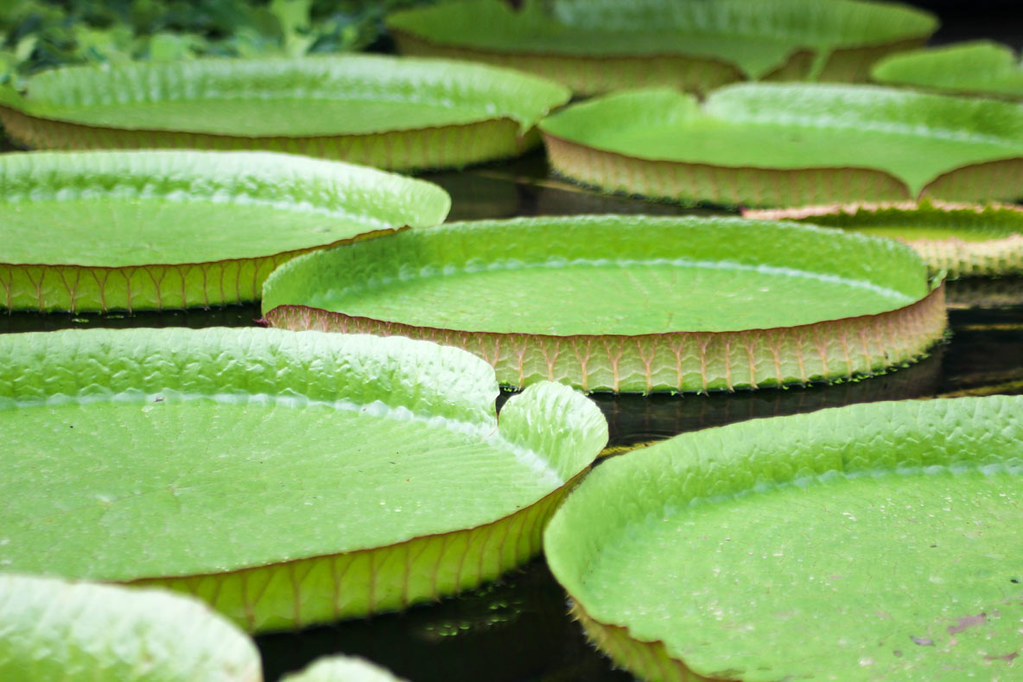
The Princess of Wales Conservatory
Stepping into the Princess of Wales Conservatory is like entering the jungle from an exotic destination, like Malaysia or Indonesia. The first thing you notice is the high humidity and the warm temperature. But no wonder, this conservatory is home to many tropical plants, cacti and orchids. You will also find here a large collection of carnivore plants, out of which I recognised the Venus Fly Trap, which I once tried to grow in my own apartment.
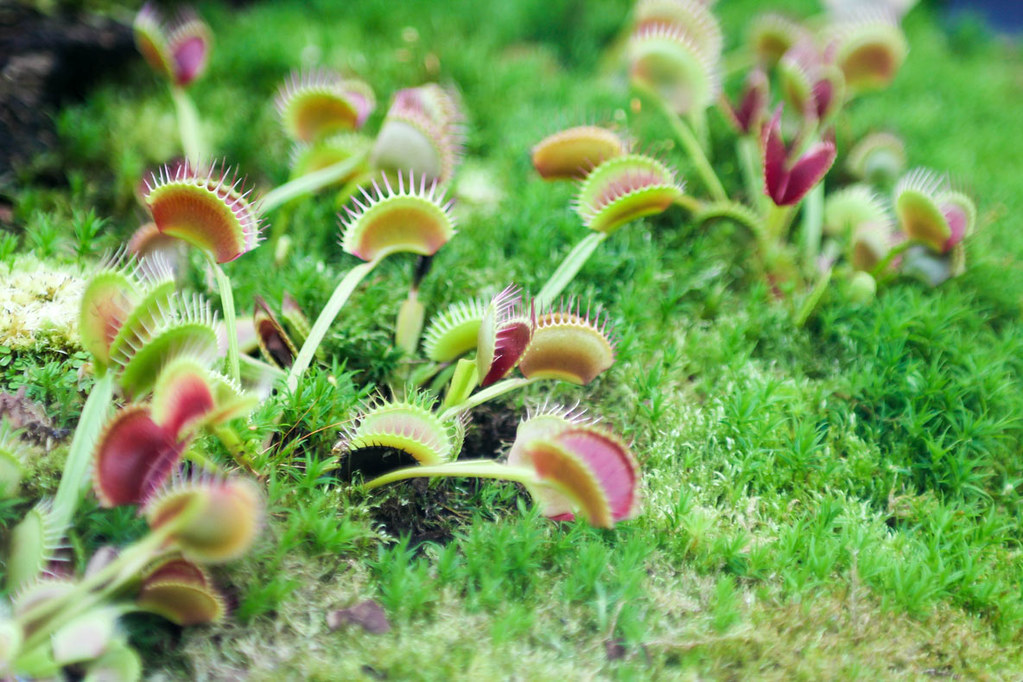
An interesting fact is that below the conservatory there is a time capsule buried by Sir David Attenborough, with seeds of basic crops, endangered plant species but also a few books on conservation. The capsule will be opened in 2085.
The Arboretum
One fantastic fact about Kew Gardens is that the trees planted here are cleaning the air in London, with over 8.6 tonnes of carbon dioxide absorbed each year. There are around 14,000 trees in the Royal Botanical Gardens, some of them as old as the garden itself, dating all the way back from the 18 th century. The trees are planted in groups according to their species (over 2,000), with some very rare and ancient ones. The tallest tree at Kew Gardens is a coastal redwood, measuring 39,3 meters high, while the oldest ones are the Japanese pagoda tree (around 250 years old), the Lucombe Oak and the black locust tree.

Strolling inside the oak forest made me feel that I was in a different place, not in London but Canada or somewhere in North America.
The Plant Family Beds and the Kitchen Garden
This was one of my favourite parts of the garden to walk in. Even if it was autumn when I visited and not many species were still blooming, I enjoyed all the colours and the pretty butterflies flying from one flower to another.
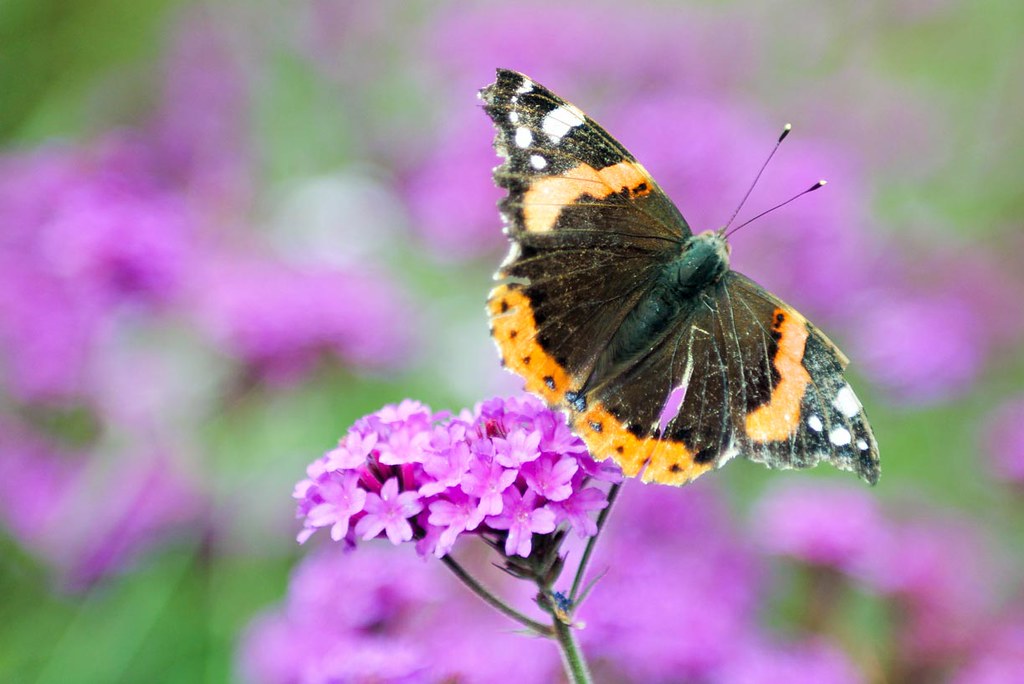
The plant family beds are found in any botanical garden in the world and represent the arrangement of plants according to their relationship with each other. The scientists at Kew have been researching about the way plants relate to each other through their DNA and molecular characteristics.
Next to the Plant Family Beds is the Kitchen Garden, an area where fruits and vegetables have been grown all the way back since 1759, for King George III. Today there are over 250 different fruits and vegetables growing in the garden. I was delighted to see apples, pumpkins, a few giant cabbages and some turnips.
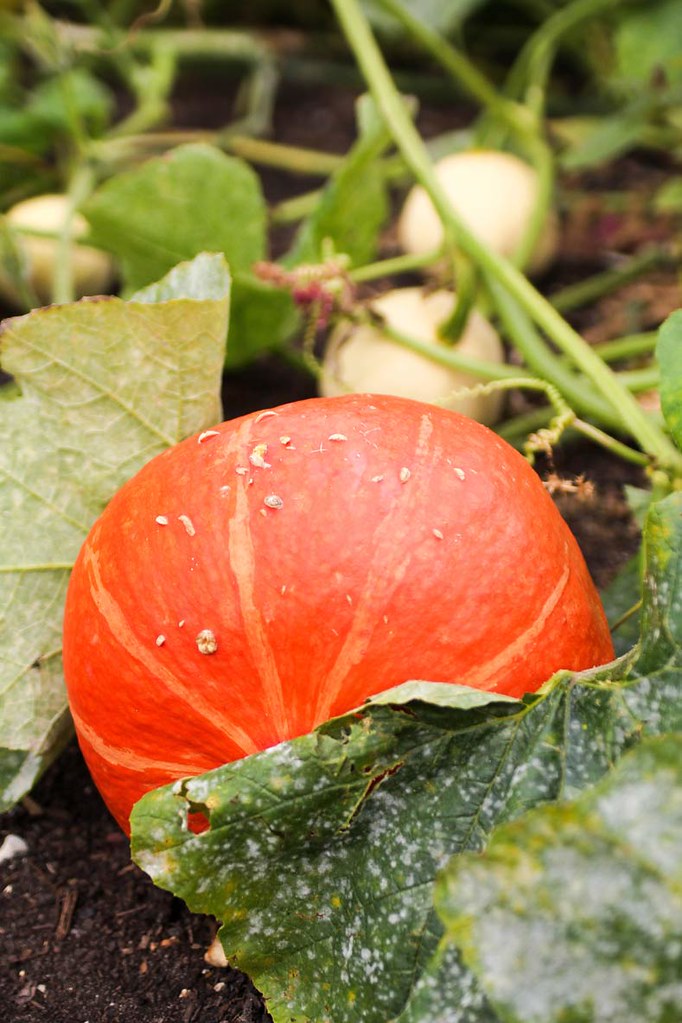
The Rock Garden
I didn’t really know what to expect from the Rock Garden until I found myself going downhill, through a path surrounded by colourful plants growing on high sandstones. The rock garden is a representation of the Pyrenean mountain habitat, a 150 meters valley with the path passing through simulating the course of a river. The rock garden is the home of over 3,000 alpine plants originally from Europe, South and North America, Asia, Africa and the Mediterranean climate, Australia and North America.

The Kew Palace and the Queen’s Garden
Kew Palace is the smallest British royal Palace and it is best known as the temporary “refuge” of King George III, the place where he was locked during his “madness” period. Beforehand however, the palace was used by the King and his family as a summer residence.

The Palace was built in 1631 but a Dutch Architect and this is why it looks like a piece of Netherlands on UK soil. If you look closely over the front door, you will notice a lover’s knot with the initials C and S on it. They stand for Samuel Fortrey, the Flemish merchant who built the palace and his wife, Catherine de Latfeur. The symbol of their love stands there even 400 years after their death!
Currently the Palace is closed for winter.
In the rear of the Kew Palace you will find a charming little garden with plants that used to grow in the 17 th century. Most of them are medicinal plants and on the label next to them you will find what they were used for and a quote from an herbal book.
Queen Charlotte’s Cottage
King George III has built this cottage for his wife, Charlotte, in the 18 th century. The cottage was used as a resting place during their walk and had a small menagerie in the back where exotic animals like kangaroos or black swans were held.
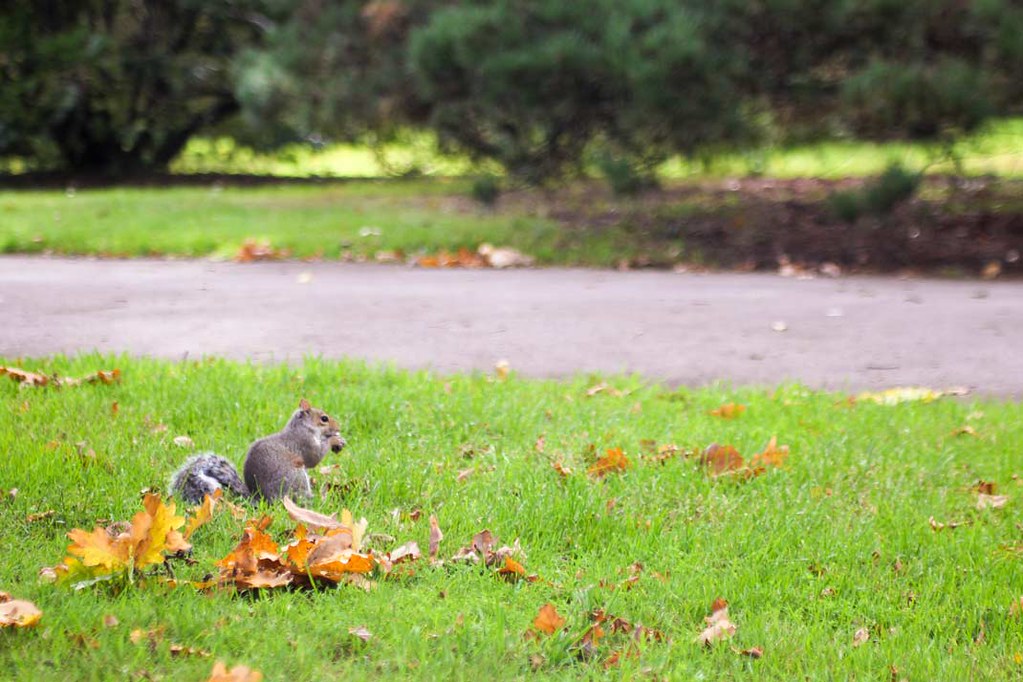
The Minka House and the Bamboo Garden
Towards the back of Kew Gardens, after walking through the beautiful quiet forests, in the middle of the bamboo garden you will find the Minka House, an original traditional Japanese farmhouse. The house dates from the early 19 th century and it was used by Yonezu family from Okazaki City, in central Japan. It was donated to Kew Gardens after the last member of the family died.
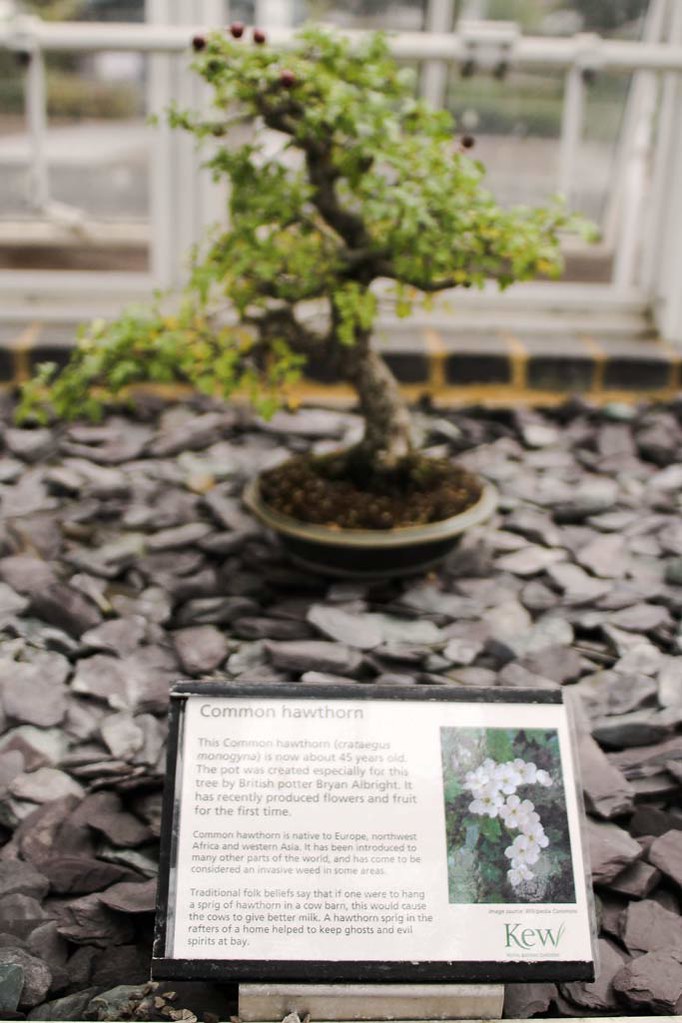
The Minka houses were used by farmers, merchants or artisans and they were built with a low roof to protect them from rain and snow but also to keep them shade from the hot summers. They were divided into 2 areas: the floor of compacted earth and a raised platform for sleeping, with a built-in hearth for cooking and heating.
The Bamboo Garden is one of the UK’s largest collection, with around 1200 species growing around the Minka House.
The Great Pagoda
Unfortunately, the Pagoda was still under renovation when I visited Kew Gardens but rumours say that it’s supposed to open again to the public next year.
The Pagoda has been built in 1762 as a copy of the Chinese Ta. Back then it was such an unusual building in Europe that people didn’t believe it would stand up for long. However, it did and now the 10-storey high tower is one of the garden’s landmarks.
The pagoda is decorated with 80 wooden dragons and covered in ceramic tiles. A local tale says that the dragons used to be made from gold but have been sold by Kind George IV to cover his debt. Historians say that this is not true, the dragons were carved in wood from the beginning but overtime, they have rotten.
The Japanese Garden
Next to the Grand Pagoda you will find the beautiful and peaceful Japanese Garden, split into three areas: The Garden of Peace, The Garden of Activity and The Garden of Harmony. All three are leading up towards the Chokushi-Mon, a four-fifths scale replica of the gate from Kyoto’s Nishi Hongan-ji temple.

The Garden of Peace is created to resemble a traditional Japanese garden, with stone lanterns and a dripping water basin. The Garden of Activity symbolises the world, with elements reminding us of the sea, the mountains and the waterfalls. Between them stands the Garden of Harmony, linking them through shrubs and tocks representing the mountains of Japan.
The Sackler Crossing
Crossing the Sackler bridge I couldn’t not notice the beautiful reflections of the autumnal colours of the trees, in the water. It looked like the two entities are blending into each other, not knowing anymore which is the lake and which is the land. This is because the trees surrounding the lake are Chinese tupelo, known for their dramatic colour change in autumn.

The Slacker Crossing is made out of black granite, with bronze posts which from a distance give the impression of a solid wall. The bridge crosses the lake in an S shape, mimicking the rounded banks of the lake.

Rhododendron Dell
If you are wondering what a rhododendron is, you are not alone. I was asking myself the same thing while looking at the map of Kew Gardens and wondering if I should make my way all the way to the other side or now. To answer the question, yes, do make your way up there because rhododendrons are beautiful woody flower shrubs which grow up high in the mountains. The most common of them is the azalea, a flower we all know.
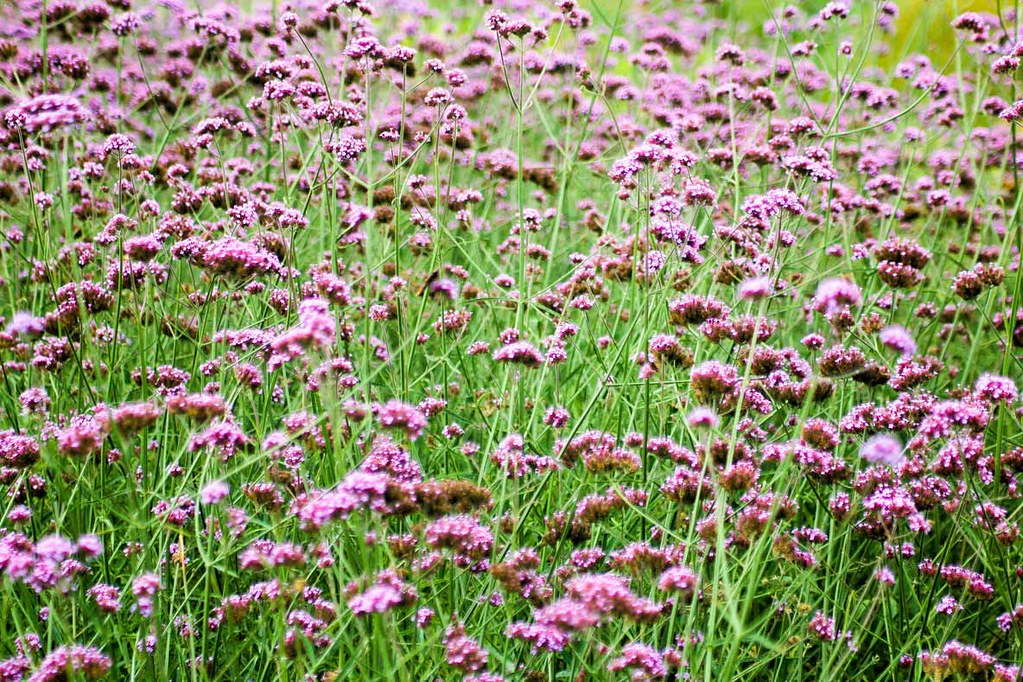
The rhododendron represents over 1000 different species of plants, out of which you can find hundreds at Kew Gardens. They are best seen in late spring, when they are all in full bloom.
The Woodland Garden and the temple of Aeolus
The original temple of Aeolus was built out of wood on an artificial mound, offering beautiful views over the gardens. However, by the middle of the 18 th century it has been rebuilt in stone because the wood had rotten. The temple was dedicated to the Greek God of Winds.
The temple is surrounded today by oaks and maple trees and led to by a path through a carpet of primulas and blue poppies.
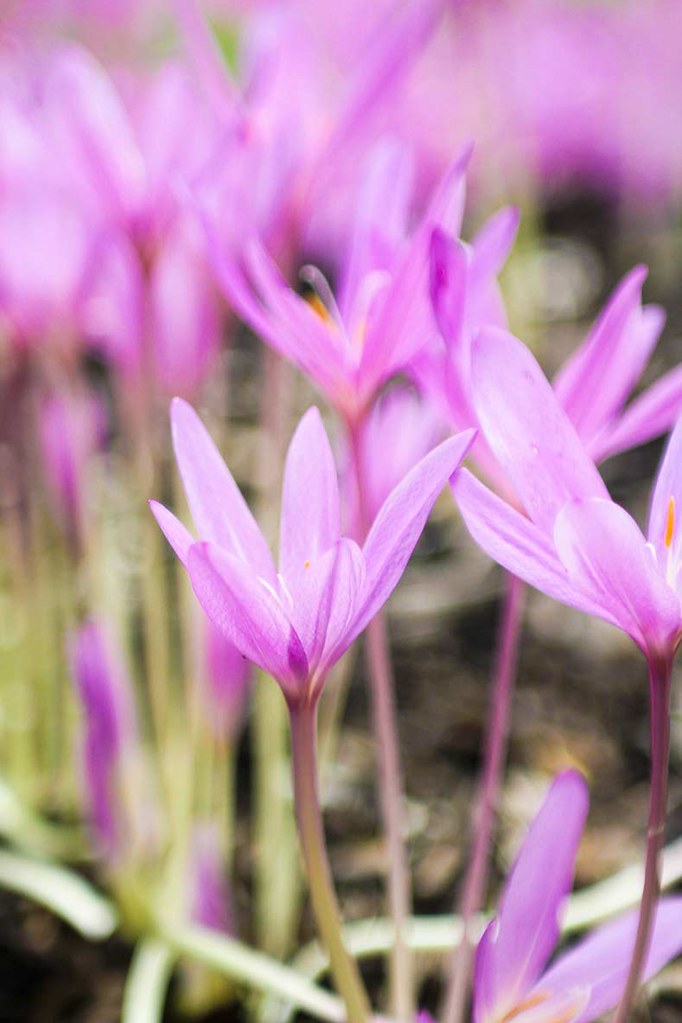
The Marianne North Gallery
This gallery is dedicated to Marianne North, the daughter of an MP who travelled alone in South America, Asia, South Africa and America to paint plants. Back in her days it was very unusual for a woman to travel alone. The gallery has 832 paintings, all belonging to Marianne North.
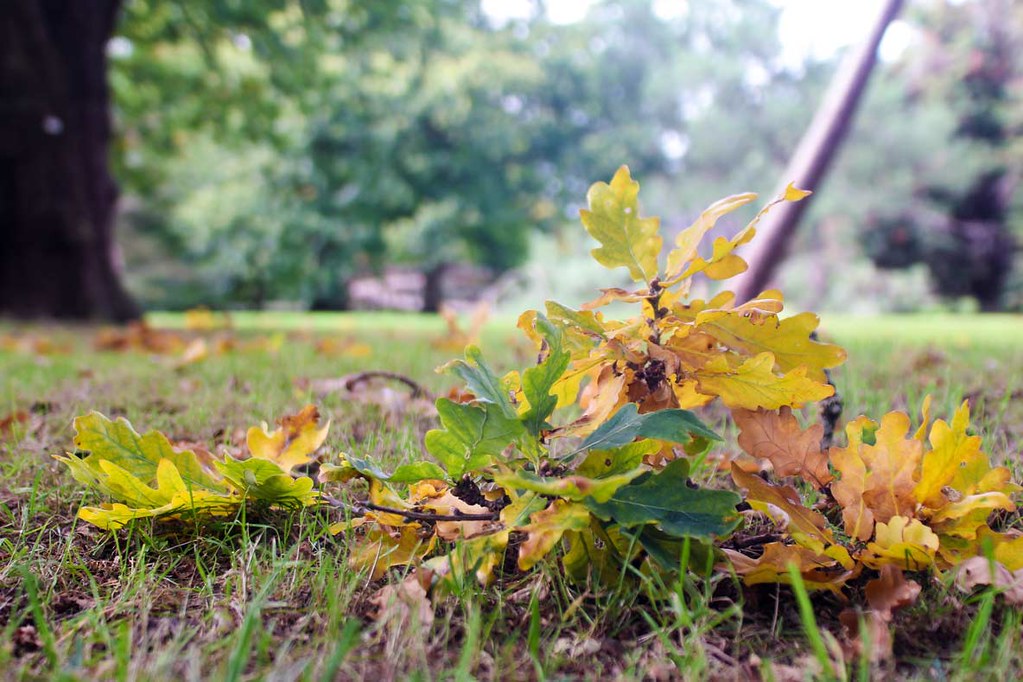
The Shirley Sherwood Gallery
Next to the Marianne North Gallery you will find the Shirley Sherwood collection of botanical art, one of the largest in the world. The oldest piece is in the museum dates from 512 and represents an illustrated copy of the Dioscorides’ de Materia Medica, a book written between 50AD and 70AD by a Greek physician from the Roman army, Pedanius Dioscorides.
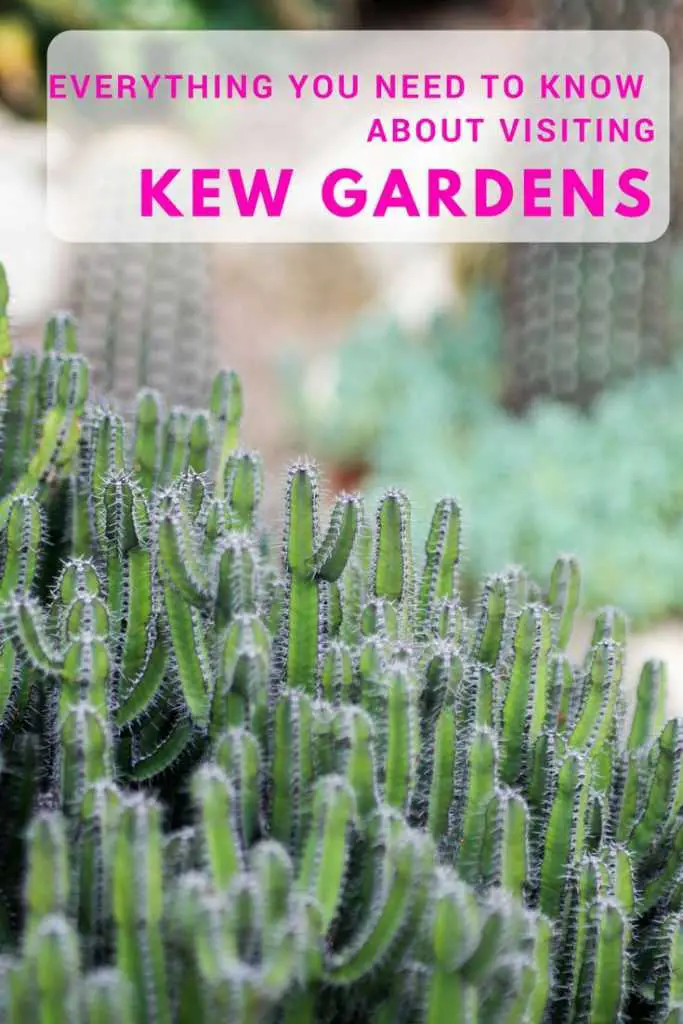
Disclaimer: This post has been written in collaboration with Attraction Tix .
Some of the links on this website are “affiliate links.” This means that if you click on the link and do a purchase, I will receive an affiliate commission at no extra cost for you. This helps me keep my website running and continue to share my traveling knowledge with you. I thank you for booking your flights or hotels using the links on my website. Regardless, I only recommend products or services I use personally and believe will add value to my readers.
Related Posts:

Traveler. Dreamer. Cat lover. Wondering around the world with my backpack and my camera. Contributing to make the world a better place.
110 thoughts on “ Everything you need to know about visiting Kew Gardens in London ”
I live just a few miles up the road from Kew Gardens and haven’t been since I was a young child and barely remember it (entrance cost 1p back then!), however we are visiting this weekend and very much looking forward to it. I’d forgotten just how enormous it is. My late aunt worked there pressing flowers which she loved. Your guide has been useful in deciding what to see during our visit (basically as much as possible but definitely The Hive, treetop walk, Pagoda, Palace etc etc). Think we could do with two whole days! Your pictures are wonderful and I’m sure I will be taking many this weekend. Anyone wanting a lovely lunch or proper afternoon tea whilst visiting the gardens, there is a gorgeous olde worlde tea room across the main road called Newens (Maids of Honour) that I highly recommend. It gets very busy though as it’s so popular with tourists and locals alike. By the way, anyone thinking Kew is amidst the hustle and bustle of central London, it isn’t, it’s on the outskirts, in suburbia ;). There are many beautiful, open green spaces in London and its suburbs.
Wow, as a Northener, I had no idea that there was so much to do and see at Kew Gardens. It looks wonderful and I really want to visit after reading your guide and looking at your beautiful photographs. It’s definitely going to be on my must-see list of places x
Oh wow, this is such an informative guide – you have covered so much! The photos are beautiful. I have always wanted to go to Kew but so far not made it. Hopefully one day! X
I’m so glad that I found this! I am visiting London on December and I will definitely go to Kew Gardens. I am putting it to a list of places I must visit in London. 🙂
This looks like a beautiful place to visit. If I am ever in London I will have to stop by.
Its so nice to visit some places like this. Peaceful and relaxing. London is on our bucketlist and we will definitely find this place there.
Leave a Reply Cancel reply
Your email address will not be published. Required fields are marked *
This site uses Akismet to reduce spam. Learn how your comment data is processed .
Kew Gardens In London – A Complete Guide
Posted on Last updated: 23 March 2024
Categories England , London
Beautiful Kew Gardens, London’s largest World Heritage Site, is not just home to an enormous collection of plants. Here’s a guide to visiting.
Table of Contents
How To Get To Kew Gardens
Kew Gardens is located on the outskirts of the city of London in the Borough of Richmond Upon Thames.
Parking is limited, so it’s recommended that you use public transport to get there.
From central London, Route 65 stops close to the following Kew Garden entrances – Lion Gate, Elizabeth Gate and Victoria Gate.
Route 110 stops near Kew Gardens station and Elizabeth Gate. Routes 237 and 267 stop at Kew Bridge station.
All single bus routes are presently £2 and the journey time varies depending on traffic.
It takes approximately half an hour to reach Kew Gardens by train from central London.
You can get a South Western Railway train from London Waterloo or, for the fastest train from London to Kew Gardens, hop on at Clapham Junction.
Kew Bridge Station is the nearest to Kew Gardens. From Kew Bridge, you’re just 800m from the Elizabeth Gate entrance.
Tickets start at £6.40 one way.
Kew Gardens Station is the nearest tube station to the garden. This station is just 500m from the Victoria Gate entrance at Kew Gardens.
You can take one direct tube, on the District Line, from London Victoria to Kew Gardens Underground Station. Tubes leave every 15 minutes and the journey takes approximately 30 minutes.
Tickets cost between £2 – £5.
For those short on time, or those that prefer everything to be organised for them, there are some awesome tours on Get Your Guide available to book in advance.
Also, for all tourists visiting London, I recommend purchasing a Go City London Pass .
These are a great way of saving money when visiting multiple tourist attractions during your stay in London.
Kew Gardens Entrance Fee
1st February to 31st October (Peak)
Adults: £21.50 (£17 in advance).
1st November to 31st January (Off Peak)
Adults: £14 (£12 in advance)

Kew Gardens Opening Times
Kew Gardens is open every day, except for 24th and 25th December.
Monday – Friday: 10am to 7pm
Saturday – Sunday: 10am to 8pm
Last entry is an hour before closing time.

Best Time To Visit Kew Gardens
Spring and summer are the most popular times to visit, as this is when you will see the most vibrant and eye-catching floral displays.
Also, the weather is more likely to be nice at this time of year, making it enjoyable to walk through the grounds.
Spring is especially recommended for the carpet of bluebells in the woodland and the beautiful blossoms as you stroll down Cherry Walk.
However, if you like it a little quieter, autumn offers some wonderful woodland walks and the opportunity to witness the changing seasons and rich autumnal colours. As well as the fungi!
Winter is probably not the best time to visit the outdoor gardens but there’s still plenty to look at in the expanse of greenhouses.
You are allowed to take your own picnic into Kew Gardens and it makes for the perfect place to enjoy some ‘al fresco’ dining when the weather is nice.
Don’t forget your camera – there’s plenty of great London photo opportunities !
What To Pack
Photography Camera
Reusable Water Bottle
Lightweight Rain Jacket

Kew Gardens History
The origins of Kew Gardens can be traced back to 1772, when the royal estates of Richmond and Kew were merged.
Stunning Kew Palace is the oldest building within the gardens. It was used as the summer home of King George III in the 18th century.
Over the years, many more buildings, including the Great Pagoda, the Orangery, the Palm House and the Temperate House, have been erected. With the latter now being the largest Victorian glasshouse in existence.
In 1840, the gardens were adopted as a national botanical garden. Following which, the size of the grounds has gradually been extended to todays 300 acres full of more than 50,000 plants.
In addition there are over 7 million preserved specimens, many of them gathered by well known scientists and explorers like Charles Darwin and David Livingstone.
Interestingly, five of the original trees planted at the outset of the gardens are still standing and known as the ‘Five Lions’.
Restoration, maintenance and development are a constant at Kew Gardens and it has had more than a few set backs over the years. Including the Tea House being burned down in 1913 by suffragettes and hundreds of trees being lost in the great storm of 1987.
However, in July 2003, Kew Gardens made it onto the UNESCO list of World Heritage Sites.

What To Expect At Kew Gardens
World famous Kew Gardens is London’s largest UNESCO World Heritage Site and is on many peoples bucket list of best things to do in London.
Officially known as Royal Botanic Gardens Kew, it is also home to the world’s largest and most diverse collection of living plants.
There’s plenty to explore, including stunning themed gardens, enormous glasshouses and fascinating treetop walkways. As well as the opulent Kew Palace, the Great Pagoda and a botanical art gallery and library.
So, even if you are not a super-keen horticulturist, Kew Gardens still has plenty to offer including some stunning architecture, artwork and literature.
However, you can’t fail but be impressed by the amazing colours, smells and diversity of plants as you walk through the grounds of Kew.
Covering an area of over 300 acres, you’ll probably need 3-4 hours at least to make the most of the gardens, with lots of people choosing to stay all day.
If you are going to spend the day out here on your London itinerary , you could always take a picnic to enjoy in the beautiful surroundings.
Alternatively, if you don’t fancy packing a picnic, there are a variety of on-site cafes and restaurants serving up some tasty cuisine.
From the Family Kitchen serving pizza, salads and sandwiches to the more formal Botanical Brasserie and everything in-between, there’s plenty of choice.
There are also several gift shops filled with beautiful homeware, books, stationery, gifts and souvenirs if you want a memento from your visit.
Entry prices vary depending on the time of year. For more info see Kew Gardens Admission Ticket .
Fun fact : Kew Gardens has its own police force, Kew Constabulary, which has been in operation since 1845!

Where To Stay In London
The London EDITION
The London EDITION is located in central London’s Fitzrovia district, with Oxford Street, Theatreland and Piccadilly Circus all within a 10-minute walk.
Inside, there is a Michelin star restaurant, 2 cocktail bars, a 24-hour front desk, free WiFi and free use of the on-site fitness centre for all guests.
With a view of the vibrant city, each en suite room come with a flat-screen TV and air-conditioning. An iPod docking station, bathrobes and a mini-bar are also provided.
Each evening, the restaurant offers a contemporary British menu using fresh, British produce.
Corus Hotel Hyde Park
Set within a 20-minute walk from Royal Albert Hall and boasting a stylish, spacious piano lounge , Corus Hotel Hyde Park features modern rooms with free WiFi.
The hotel is just a 10-minute walk from Paddington Station, offering a direct train link to Heathrow Airport.
The cosy, air-conditioned bedrooms at Corus Hotel have private en-suite bathrooms and satellite TVs with on-demand movies. Rooms also feature work desks, tea/coffee facilities, iron and ironing boards.
The conservatory brasserie serves a modern European menu using seasonal produce.
Olio Bar offers light snacks and beverages, and overlooks Hyde Park.
The Queens Hostel
Featuring free WiFi, The Queens Hostel offers accommodation in London, just a 2-minute walk to Queens Park Rangers football stadium.
Guests can enjoy the on-site bar. Rooms come with a shared bathroom.
You can play tennis at this hostel, and the area is popular for golfing.
For more places to stay in London, you can check the latest prices on Booking.com .
Planning Your Trip
Book your flight.
Use Skyscanner to find a cheap flight.
They search websites and airlines around the globe to find you the best possible routes and prices.
Book Your Accommodation
Use Booking.com to find the best accommodation deals.
They consistently return the cheapest rates on everything from guesthouses to hotels for all of your budget needs.
Don’t Forget Travel Insurance
Use SafetyWing to find the best travel insurance for you.
They provide travel and medical incident insurance built specifically for digital nomads.
Travel insurance will protect you against illness, injury, theft, and cancellations.
Book Your Tours & Activities
Use GetYourGuide to book your activities in advance.
They sell the best tours, excursions and activities to attractions around the world.
Conveniently book, download and access your tickets on the move all from your mobile.
Book Your Rental Car
Use RentalCars.com to find the best deals on rental cars in the area.
They compare all major car rental companies and allow you to easily book the perfect vehicle for your trip.
Buy Those Last Minute Bits
Use Amazon to buy everything you need for your adventure.
They offer next day delivery and you can use my travel packing checklist to make sure you haven’t forgotten anything.
Pin It For Later

Wim Harrington
Thursday 29th of February 2024
Hi Charlie, my father studied as a horticulturalist at Kew Gardens. He is past away now, but Kew was the key to his career, as the Head of Parks Department for the London Borough of Hounslow and a judge at the Chelsea flower show. Do you have any details on Kew as a “University” for students? When did it start / end this role? Any facts you have - much appreciated!
Day Trip To Kew Gardens, London | Ultimate Guide By A Local
Last Updated on February 23, 2024 by Goya
Welcome to the ultimate guide to a day trip to Kew Gardens, London , by yours truly — a local and a Kew member who frequents the botanical gardens often.
As a longtime resident of Kew, I have had the pleasure of enjoying the beautiful scenery and engaging with the diverse array of flora and fauna that the gardens have to offer. In this guide, I will share my insider knowledge to help you plan the perfect day trip to Kew Gardens that will leave you captivated by the beauty and tranquillity of this natural wonderland.
Whether you’re a seasoned nature enthusiast or simply looking for a serene escape from the bustle of the city, this ultimate guide is your key to an unforgettable adventure in Kew Gardens. So grab your walking shoes and let’s get started!
Table of Contents
Kew Gardens in a Nutshell

What is Kew Gardens and Where Is It Located?
Nestled in the quaint borough of Richmond-upon-Thames , in southwest London , Kew Gardens is one of England’s most beloved attractions. With more than 300 acres of grounds filled with lush greenery and awe-inspiring botanical displays, Kew Gardens is a true paradise for nature lovers.
Upon arrival, visitors are treated to an amazing array of flora and fauna from every corner of the globe, as well as historical monuments that date back to the 18th century. As you explore this blissful sanctuary, you’ll find yourself surrounded by a vibrant community of gardeners and horticulturists who are passionate about preserving and protecting the park’s rich heritage for generations to come.
Map of Kew Gardens
Before embarking on your Kew Gardens adventure, it’s essential to have a detailed map of the park’s vast and intricate grounds:

History of Kew Gardens
Kew Gardens has a long history dating back to the 16th century when privately owned gardens were tended there. In 1731, the site was acquired by Frederick Louis, Prince of Wales, and later by Augusta, the Dowager Princess of Wales , who established an exotic plant garden in 1759. The gardens rapidly grew to over 3,400 plant species by 1769. Sir Joseph Banks managed the gardens from 1772 to 1819, during which the collections expanded to include plants from all over the world .
Under the leadership of Sir William Jackson Hooker and his son Joseph Dalton Hooker, the gardens became a hub for scientific research and the exchange of plant specimens, further cementing their worldwide reputation.
The UK’s government purchased the gardens in 1840, and by the early 20th century, the gardens increased in size to encompass the current 300 acres (120 hectares) of land.
In 2003, UNESCO recognised Kew Gardens as a World Heritage Site .
Is Kew Gardens Worth Visiting?
The answer is a resounding yes! Whether you’re interested in uncovering centuries-old secrets or simply want to appreciate some breathtaking views, a visit to Kew Gardens will not disappoint. There are over 50 different gardens and structures within its boundaries, so there’s something for everyone. The Palm House and the Temperate House alone are worth seeing. While strolling through their maze-like interior you can admire an impressive collection of plants from all over the world.
DID YOU KNOW? Kew Gardens is one of the few places in London where you can find peacocks !
Top 11 Things To See At Kew Gardens
#1: the great pagoda.
Nestled within Kew Gardens is a true marvel of architecture and engineering, the Great Pagoda. Standing tall at 163 feet, it is hard to miss the imposing structure with its 80 golden dragons adorning the roofs. Completed in 1761 as a gift for Princess Augusta, the founder of the Gardens, it was one of several Chinese-style buildings designed by the architect, Sir William Chambers. Though it was initially constructed as a “folly,” a decorative structure without any practical purpose, it has since become an integral part of Kew’s history.
Once a royal retreat, the Great Pagoda’s height allowed for a stunning bird’s eye view of London, and its unique silhouette could be seen from miles around. Today, visitors can climb the 253 steps to the top of the Pagoda and marvel at the breathtaking view of the city, just as the royals once did.
Visiting Kew Gardens is an unforgettable experience, and the Great Pagoda is undoubtedly one of its most treasured gems. Rich in history and architectural beauty, the Pagoda will leave any visitor on a day trip to Kew Gardens awestruck and inspired.

Opening times: Daily from 11 am (Last entry 4 pm) Nearest entrance: Lion Gate
#2: The Japanese Landscape
The Japanese Landscape is a breathtaking fusion of three distinct gardens — the harmonious Garden of Peace, the dynamic Garden of Activity, and the tranquil Garden of Harmony. Designed in 1996 by Professor Fukuhara of Osaka University, the gardens showcase a perfect blend of art, nature, and human ingenuity and lead the visitors to a serene and wholly unique environment.
The Garden of Peace, accessible through the main entrance, is a haven of tranquillity. Here, you can pause beside a slowly dripping water basin, step across ornate stepping-stones over a meandering stream, and admire the beauty of manicured greenery and traditional Japanese lanterns.
The Garden of Activity, an exciting space meant to evoke the feeling of natural waterfalls, mountains, and the sea, is a remarkable sight to behold. You can experience the zen of the raked gravel, and let large rocks inspire the feeling of water flowing and tumbling.
The Garden of Harmony combines the two environments, uniting the movement of water and the peacefulness of the natural environment. You can get lost in the beauty of carefully planted shrubs and the neatly clipped hedges of Rhododendron ‘Mother’s Day’ and Japanese anemone, representing mountainous landscapes and rock formations.

Nearest entrance: Lion Gate
#3: The Temperate House
You can discover the world’s unique plant life in Kew’s Temperate House, a glittering cathedral of horticulture. Home to 10,000 individual plants from 1500 plant species originating from six of the world’s temperate zones including Africa, Asia, Australia, the Pacific Islands, and the Americas, this house underwent a glorious five-year renovation and reopened to the public in 2018.
Built to provide a habitat for temperate plants, all species within the Temperate House require temperatures above 10°C to survive. Many of these plants are rare and threatened, and the house tells the story of how Kew and global partners are working to preserve them for future generations.
With its rich history of over 250 years of plant expertise, the Temperate House stands as Kew’s icon and the beating heart of plant science. So, don’t miss a visit to this spectacular house that’s been voted ‘Best UK National Treasure’ at the 2018 National Geographic Traveller Magazine Reader Awards, on your day trip to Kew Gardens.
Opening times: Daily, 10 am to 5 pm Nearest entrance: Lion Gate
#4: The Treetop Walkway
The Treetop Walkway is a unique pathway that reveals the hidden secrets of woods and forests. Here, you can:
- Take to the skies and explore Kew’s treetops on the 18-meter-high pathway through the branches of sweet chestnut, beech, horse chestnut, and oak trees that border the walkway.
- Or observe the complex ecosystem of the trees’ uppermost branches, buzzing with life, including birds, insects, lichen, and fungi.
- Take a closer look at the microscopic elements of trees and how they grow, at ground level.
Opening times: Daily, 10 am to 6 pm (last entry 5.45 pm) Nearest entrance: Lion Gate
#5: Woodland Walk
Step away from the manicured grounds of Kew and into a wild, untamed paradise full of life and vibrant beauty. Explore the Woodland Walk at Kew, a raised trail that hugs the River Thames and takes you on an awe-inspiring journey through the Natural Area (37 acres of classic woodland) gifted to Kew by Queen Victoria. Delight in the rustic charm as you meander along this shady path lined with tall grasses, wildflowers and whispering trees; marvel at the kaleidoscopic flutter of butterflies, dragonflies and damselflies as they engage in a captivating aerial ballet. Lose yourself in this tranquil oasis – all without disturbing its habitat – for an unforgettable nature experience.

#6: The Palm House
Discover the magical rainforest of Kew’s Palm House. Explore its dense vegetation and uncover ancient treasures, like the oldest pot plant in the world or the disease-fighting periwinkle. From rubber trees to African oil palms and cocoa trees, these plants provide huge value for their fruit, timber, spices or medicine. Rainforest plants cover only 2% of the Earth’s surface yet make up 50% of species – vital for sustaining life on Earth. Use your visit to this living laboratory as a chance to glimpse tropical regions around the world and support Kew scientists’ research into medicine and sustainable cropping.

Opening times: Daily, 10 am to 5 pm Nearest entrance: Victoria Gate
#7: The Marianne North Gallery
Admire the artistic masterpiece, the Marianne North Gallery in Kew Gardens, with more than 800 remarkable paintings that invite you to enter a world of botanical beauty. As you take a leisurely stroll through this atmospheric space, be enchanted by North’s collection of vibrant 19th-century botanical art. She was a woman ahead of her time, unafraid to break convention; travelling the world solo to capture the mysterious elegance of exotic plants from every corner of the world. Capturing these ethereal moments with her brush, she defied Victorian flower painting traditions and documented the dramatic landscapes she visited and the plants that captivated her. Now, visitors have the unique opportunity to experience North’s vast collection in all its glory – an unforgettable journey through nature’s magnificent creations.

#8: The Princess Of Wales Conservatory
Take a journey of wonder through the Princess of Wales Conservatory, an exquisite glassy labyrinth leading you to ten magical climate zones . Uncover other-worldly plant species like the Venus Flytrap and Pitcher Plant as they remain in suspended animation awaiting their next meal. Traverse from sun-scorched deserts to lush tropical forests; spiky cacti and succulents transition into orchid-filled havens full of steamy mist. In the wet tropics, witness the mesmerising beauty of a giant waterlily opening its luminous white blooms at sunset, pollinated by morning’s light and abloom with dazzling hot pink petals. Prepare for a captivating experience that is sure to delight your senses.
Opening times: Daily, 10 am to 5 pm Nearest entrance: Elizabeth Gate
#9: The Hive
On your day trip to Kew Gardens, don’t forget to admire the creative genius of The Hive , an awe-inspiring, open-air installation designed by UK-based artist Wolfgang Buttress, where you can embark on an immersive experience that celebrates Britain’s honeybees and their powerful role in sustaining life as we know it while admiring its magnetic beauty from every angle.
Step into The Hive and feel the drama of life inside a real beehive come alive as you enter the imposing 17-metre-tall structure and discover first-hand its bustling inner workings. Let thousand LED lights which respond to the vibrations of bees that exist in the gardens enchant you; marvel as a symphony of sound in C – the same key that bees hum along – fills your ears. A unique opportunity to explore the secret life of bees on a human scale, The Hive is a space to celebrate their powerful role in sustaining life as we know it – and admire its magnetic beauty from every angle.

Nearest entrance: Elizabeth Gate
#10: The Davies Alpine House
Step into the world of alpine plants and explore Davies Alpine House at Kew Gardens. Witness first-hand the resilient nature of these plants as you wind your way through an immersive display of bright purple campanulas, bold pink dianthus, ferns, fragrant lavenders and other unique species adapted to survive in the high-altitude territory. Delight in their beauty while learning how they can survive in conditions from the Arctic to the Alps or the Andes – in the wild, they spend winter dormant and dry, taking advantage of melting snow come spring.
Discover the genius behind this energy-efficient structure – designed to recreate the dry, cool, windy conditions alpines need to thrive without air conditioning and wind pumps. These two back-to-back arched building creates a stack effect that draws warm air out whilst below ground an efficient concrete labyrinth cools the air that is recirculated around it; all set against a stunning backdrop of low-iron glass for maximum light transmission. Enjoy a unique opportunity to explore these remarkable plants surrounded by breathtaking views.
Opening Hours: Daily, 10 am to 5 pm Nearest entrance: Elizabeth Gate
#11: Bamboo Garden and Minka House
Follow the undulating paths of Kew Gardens and uncover a hidden sanctuary in its deepest corners, where nature’s tallest grasses tower in abundance and an old, traditional Japanese farmhouse waits patiently to take you back in time. The Bamboo Garden is home to 130 bamboo species from China, Japan, the Himalayas and the Americas – with dramatic leaf shapes, cascading fountain-like foliage and durable plastic barriers to contain the rapid growth of some invasive species.
Meaning ‘houses of the people’, ‘Minka’ describes the simple homes that flourished throughout Japan until the mid-20th century. Bushes of sacred bamboo are planted around Kew’s Minka House — former home to the Yonezu family before their main house was bombed in 1945 — believed to dispel bad dreams.
An impressive feat of unsung architecture awaits as you wander inside. Gaze upon its intricate patterns; examine how its wood has weathered with age; imagine life within these walls when it was alive with the laughter and traditions of generations gone by. Revel in this romantic treasure trove where history collides head-on with culture for an unmissable experience.
Nearest entrance: Brentford Gate
Planning Your Visit
Here you can find the opening hours, the different ways to access the gardens, the best time to visit, and where to grab a bite to eat during your day trip to Kew Gardens. So keep on reading to discover everything you need to know about planning your day trip to Kew Gardens!

#1: Kew Gardens Opening Hours
Kew Gardens Opening Times 2023
1 April to 30 April 2023
Daily, 10 am* to 7 pm (last entry 6 pm)
1 May to 31 August 2023
Monday to Friday, 10 am to 7pm† (last entry 6 pm)
Saturday, Sundays & Bank Holidays, 10 am to 8pm† (last entry 7 pm)
†The Gardens to close early at 4 pm on 27 July and 10 August for Summer Cycle and 5 pm from 11 to 16 July for Kew The Music
1 to 30 September 2023
Daily, 10am‡ to 7 pm (last entry 6 pm)
‡The Gardens to open later at 11 am on 9 and 10 September due to Richmond Runfest
1 to 28 October 2023
Daily, 10 am to 6 pm (last entry 5 pm)
29 October to 13 November 2023
Daily, 10 am to 4 pm (last entry 3 pm)
Kew Gardens Opening Times 2023/24
14 November 2023 to 7 January 2024
Daily§, 10 am to 3 pm (last entry 2 pm)
§The Gardens to be closed on 24 and 25 December
8 January to 31 January 2024
1 February to 29 February 2024
Daily, 10 am to 5 pm (last entry 4 pm)
1 March to 31 March 2024
#2: Getting To Kew Gardens
By Tube or Overground: Kew Gardens has its own station ( Kew Gardens ) on the District Line that connects it directly to central London stations such as Waterloo and Victoria Station. The station is 500m from Victoria Gate.
By Train: South West Trains run services from Waterloo through Vauxhall and Clapham Junction to Kew Bridge station, which is 800m away from Elizabeth Gate via Kew Bridge. Alternatively, Richmond Station has a lift and level access and visitors can take the 65 bus (in the direction of Ealing Broadway) to Lion or Victoria Gate.
By Bus: Visitors travelling to Kew Gardens by bus can take Route 65, which stops close to Lion Gate, Elizabeth Gate and Victoria Gate. Route 110 also stops near Kew Gardens station and Elizabeth Gate. Routes 237 and 267 stop at Kew Bridge station.
By Boat (Westminster Pier to Kew Gardens ) : If you would like to visit Kew Gardens by boat, Thames River Boats operate a special service from Westminster Pier to Kew Pier. Elizabeth Gate, the closest entrance to Kew Pier, is only a 0.2-mile walk away across Kew Green. Timings for this service are 11 am and 2.30 pm from Westminster and 12.30 pm, 3.30 pm and 5 pm from Kew.
By Car: There is limited parking available near the Brentford Gate for those who plan on driving to the gardens.
Bicycle racks are available at all four gates of Kew Gardens, with the racks at Elizabeth Gate and Victoria Gate located inside the gates behind the booths.
Kew Gardens Gates
There are four main gates that provide access to Kew Gardens. These are the Elizabeth Gate, Brentford Gate, Victoria Gate, and Lion Gate. You can refer to the map for their exact locations.
#3: Best Time To Visit Kew Gardens
Wondering when is the best time to visit the Kew Gardens? Well, that depends entirely on what you want to see; if you’re looking for vibrant blooms then April through May or September through October are your best bet.
In the summer months, visitors can take part in daily activities such as guided walks, talks and children’s activities, as well as special events such as the annual summer music festival Kew the Music and open-air performances by Theatre on Kew .
On the other hand, in wintertime, the gardens host Christmas at Kew — a festive annual event and a London Christmas highlight , offering visitors a chance to explore the gardens amidst a magical winter wonderland setting. The event features various light shows, installations, and interactive experiences tailored around a festive theme. The breathtaking light shows, from laser displays to stunning illuminations, create an enchanted experience.
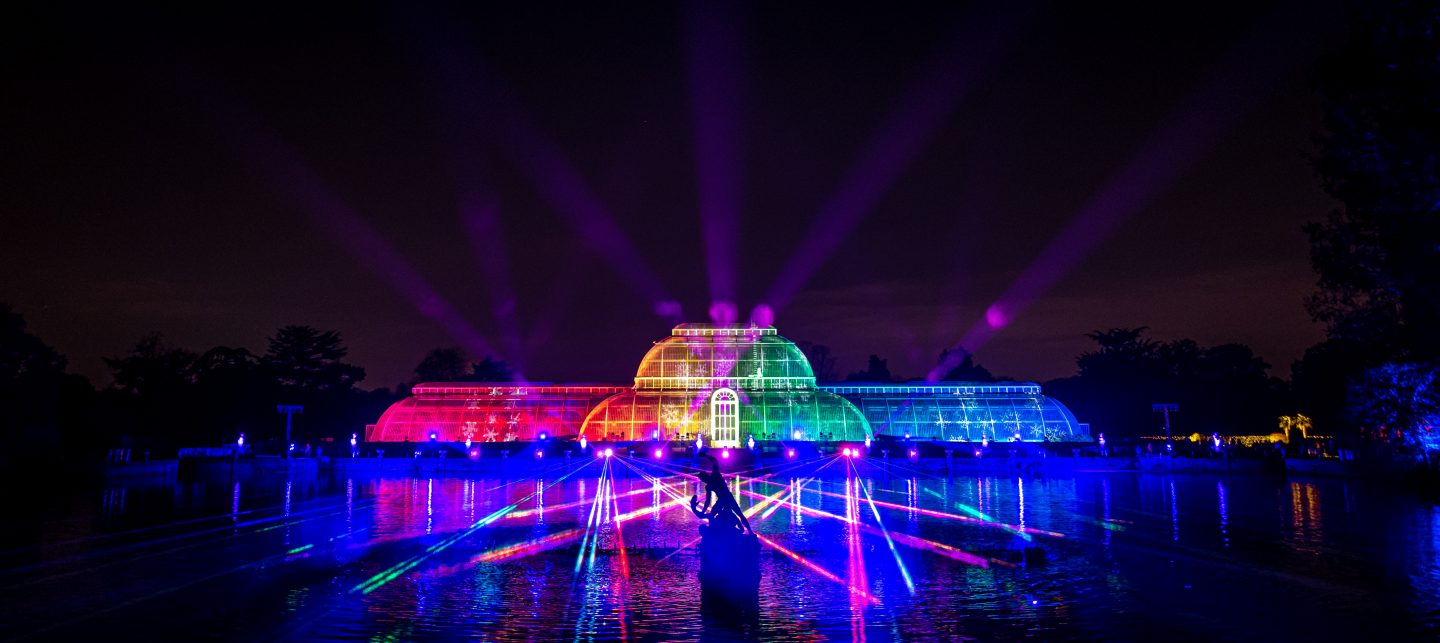
NOTE: Visitors should be aware that some areas may be closed during extreme weather conditions so always check before planning your visit!
#4: Where to Eat at Kew Gardens?
Kew Gardens offers a wide range of dining options to suit all tastes and budgets. Whether you’re looking for a quick snack or a more extravagant dining experience, you’ll find plenty of options to choose from on your day trip to Kew Gardens:
- The Botanical Brasserie: This is Kew Garden’s flagship restaurant located in a magnificent Grade 2 listed building overlooking the pond and Palm House. It offers a quintessentially British dining experience featuring delicious seasonal dishes made with locally sourced ingredients, as well as traditional afternoon tea.
- The Orangery: Set in a stunning 18th-century building, The Orangery offers light bites and delicious cakes in elegant surroundings. [*Closed for refurbishment until late Spring 2023.]
- Pavilion Bar and Grill: For a more relaxed dining experience, the Pavilion is an excellent choice. Situated in a picturesque spot overlooking the lake, this bar and grill offer a range of delicious barbecue dishes and refreshments.
- Victoria Plaza Café: If you’re looking for a quick bite, the Victoria Plaza Café is the perfect spot. Located in a peaceful area of the park, this charming cafe offers a selection of sandwiches, cakes, and drinks that you can enjoy indoors or outdoors.
- Family Kitchen & Shop: From stone-baked pizzas and hearty salads to freshly prepared sandwiches, mouthwatering dishes from the hot counter and delicious ice cream served up by an expert team of chefs, this is the perfect hangout for the whole family.

Additional Information & Insider Tips
Accessibility at kew gardens.
Kew Gardens is proud to be welcoming and accessible to all visitors. Whether you are an individual with hidden impairments or a group visiting with a disability, the team at Kew Gardens will do their best to ensure your visit is as enjoyable as possible.
Their accessible facilities include ramped access points, wheelchair hire and a complimentary wheelchair assistant service, specialised tours and activities, and dedicated changing places.
For further information on accessibility ahead of your day trip to Kew Gardens, you can refer to their website .
Kew Gardens Membership
Becoming a Kew Gardens Member allows you to enjoy exclusive access to their world-renowned botanic gardens all year round. With the membership, you will not only get unlimited entry to Kew, but you will also benefit from discounts at Kew shops, cafes and events, be eligible for priority booking on special events throughout the year, receive complimentary admission to Kew’s partner gardens across the UK, and help support the vital research that takes place at Kew.
As a Kew Gardens Member, I especially enjoy having the freedom to enter the gardens whenever I feel like taking a relaxing walk. As part of our Family Membership (two adults) , we are also able to bring one family guest each, plus up to four children (aged 4 to 15) – making it perfect for days out with family and friends. With unlimited free entry to both Kew Gardens and Wakehurst , discounts in shops and cafes and priority booking on special events throughout the year, membership is definitely worth the investment for anyone who plans to visit the gardens more than once a year!
Little Known Facts About Kew Gardens
- At the world-renowned Royal Kew Gardens lies a remarkable specimen, the oldest pot plant in the world . Collected in 1775 by Frances Masson during one of Captain Cook’s voyages from South Africa, this Jurassic cycad (Encephalartos altensteinii) is kept safe inside Kew’s Palm House.
- The Gardens are home to the smallest royal palace in the country; the Grade I-listed Kew Palace.
- The paddock next to Queen Charlotte’s Cottage was home to a menagerie of exotic animals from 1792. This included colourful Tartarian pheasants and the very first kangaroos to arrive in Britain .
- Two planes have crash-landed in the Gardens throughout its history . In 1928, a single-seater Siskin aircraft came down near Syon Vista but the pilot managed to escape unharmed with the help of his parachute. Another crash happened in 1938; an aircraft pulling an advertising banner had to make an emergency landing near the Palm House but there were no casualties.
- Kew Gardens has its own Police Force , and at some point also had its own Kew Fire Brigade (now covered by Richmond Fire Brigade).
- Day trip to Kew Gardens left you asking for more? Well, lucky for you, you can actually hold corporate and private events, or even get married at Kew !
Insider Tips
- Prefer your meals more al fresco ? No problem — You can pick up some food and drinks from Gail’s, Tesco, Starbucks, or The Good Wine Shop Kew by the Kew Gardens tube station, and have a picnic in any green space you fancy. Don’t forget to bring your picnic blanket!
- Limited in terms of mobility, or simply prefer being given a lay of the land beforehand? Then, you may want to jump on the Kew Explorer land train that takes visitors on a guided tour of Royal Kew Gardens.
- Waterlily House , one of the most beautiful spots in the Kew Gardens in my opinion, is closed every winter due to reduced natural light levels and cold temperatures making it too challenging to cultivate tropical water lilies. So if you want to marvel at these delicate flowers floating atop lily pads, you will need to visit in the summertime.

FAQs | Visiting Kew Gardens
Why visit kew gardens.
Kew Gardens is home to an impressive array of plants and trees, many of which are rare or endangered. It is also one of the world’s leading botanical research facilities and holds more than 8 million specimens from around the globe. The gardens contain a wealth of historical buildings and structures such as greenhouses, pagodas, treehouses and water features that create an idyllic atmosphere for visitors.
How Long Does It Take to Walk Around Kew Gardens?
It takes around 2-3 hours to walk around the Kew Gardens, that is of course with a minimal amount of stops. I would recommend spending at least four hours exploring the Kew Gardens. There is plenty to do and see, so you will have lots of opportunities to take in the stunning scenery while you walk around. You can even bring a picnic or grab lunch from one of the eateries located throughout the grounds. A bit of extra time spent here (and ideally turning it into a day trip to Kew Gardens) will give you a chance to really enjoy your day!
How Long to Spend at Kew Gardens?
It depends on your interests, but a visit to Kew Gardens can last anywhere from two hours to a whole day. Generally, visitors should spend at least 3-4 hours exploring Kew Gardens.
Can You Take Dogs to Kew Gardens?
Unfortunately, the gardens are not pet-friendly. Only registered disability assistance dogs are allowed in the gardens.
How Much Are the Tickets to Visit the Kew Gardens?
Ticket prices depend on the ticket type and the time of visit. For detailed information, you can visit this page which has the latest information.
Is Kew Gardens Free to National Trust Members?
If you are a member of the National Trust, please note that Kew Gardens is not included in your membership and requires an additional general admission fee.
When Do the Kew Gardens Open?
Kew Gardens’ opening hours vary depending on seasonality or events, however generally they open between 10 am-5 pm daily (last entry: 4 pm), and longer during summertime.
Is There a Gift Shop at Kew Gardens?
Yes, there are 4 gift shops in Kew Gardens: Victoria Plaza Shop (the biggest), Pavilion Shop , Galleries Gift Shop and Family Kitchen & Shop .
Final Thoughts: Day Trip To Kew Gardens
With its stunning landscapes, diverse plant life, historic charm and endless opportunities for exploration, there’s no wonder why Kew Gardens continues to attract tourists all year round!
Whether you’re visiting London or just looking for a peaceful escape from everyday life — a day trip to Kew Gardens won’t disappoint! So why not plan your next visit today and experience firsthand how this royal botanical garden brings centuries-old history alive with its beautiful gardens and captivating sights awaiting discovery?
Looking for more London tips and recommendations? Check out these posts:
- For all your foodie’s wishes: London Restaurants
- Visiting around Christmas? Then you may want to check out the best things to do & see in London at Christmas .
LIKE THIS POST? WHY NOT SHARE IT WITH SOMEONE WHO WOULD LOVE A KEW GARDENS DAY TRIP?

Welcome to my little corner for all things London, travel, food and wine! Why not join me on Instagram where you can follow my travel- and food-capades in real-time? Or leave a comment/send a message? I would love to hear from you! Lots of love, GG
Let's be travel friends!

Popular Posts
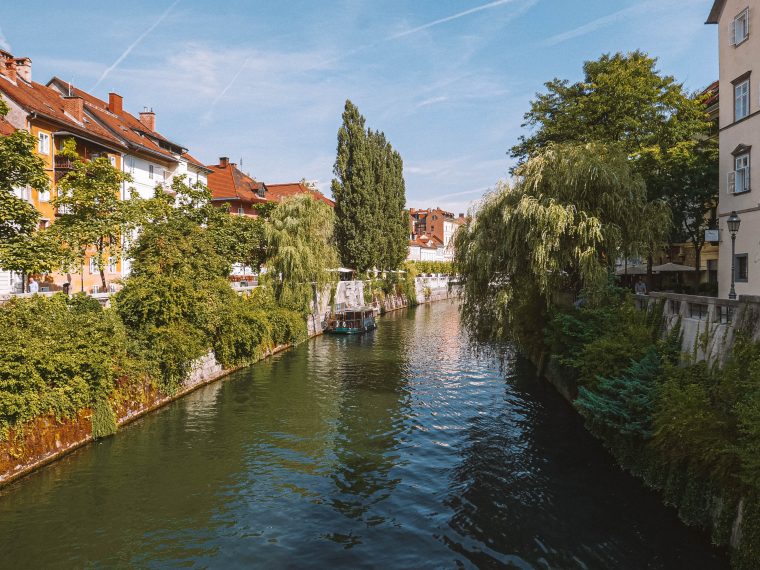
Living Life In The “SLO” Lane: The Ultimate Ljubljana Guide
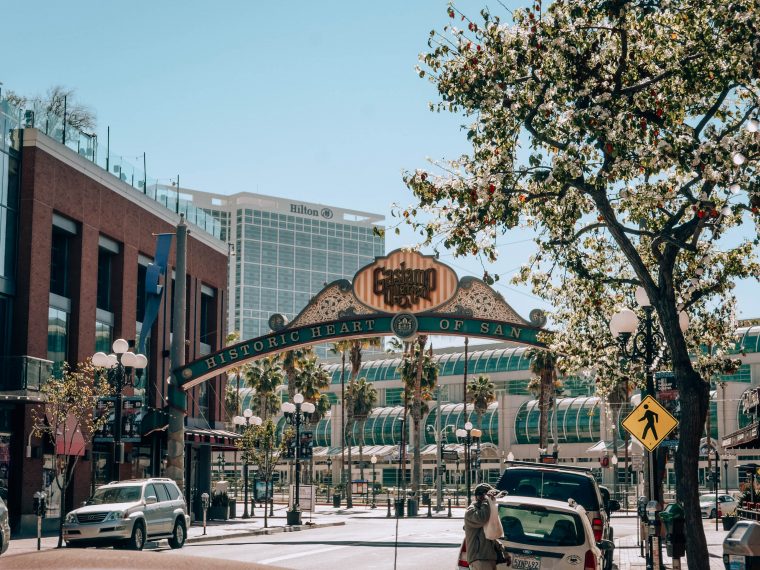
Solo Trip to San Diego: Best Things To Do Alone [+ Day Trips and FAQs]
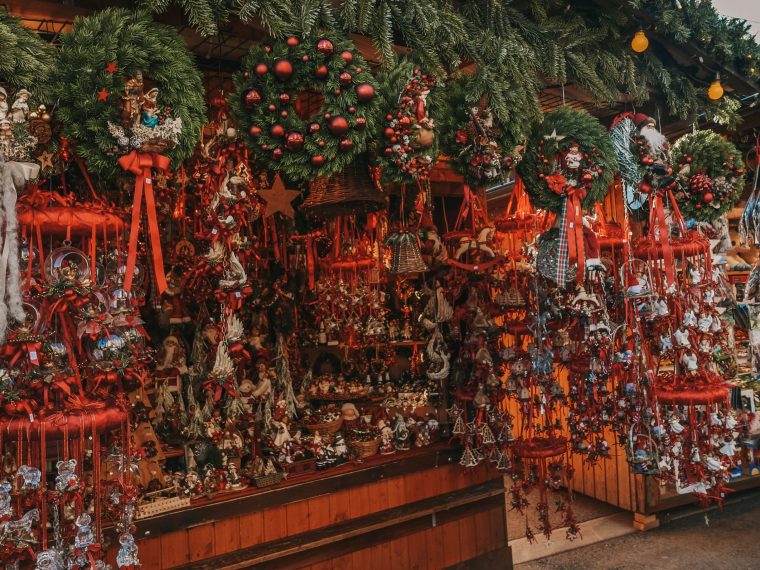
Christmas in Vienna: The Ultimate Guide
Related posts.

A Quick Guide to 7 Best Slovenia Highlights: Ljubljana & Beyond

Visit Ptuj: Slovenia’s Timeless Treasure and Oldest Town is Calling You!

13 Insider Tips to Experience Istanbul Like a Local
Leave a comment.
OMG! I had no clue Kew Gardens is so big. I went years ago and don’t remember it being that big, haha. I definitely need to visit again.
Oh, it is huge and yes, definitely well worth another visit – especially now when everything is in bloom or in summertime when they will start hosting a number of events!
- Shop My Faves
- Privacy Policy
Let's stay in touch!
Subscribe to GG Newsletter for e-mail updates and exclusive stories.
You can unsubscribe anytime. For more details, please review the Privacy Policy.
Welcome to the club!
Hey there, I am so glad that you chose to join me on this journey!
Your welcome e-mail is on its way (Can't find it? Please check your spam folder as they can sometimes be mislabeled) . To make sure your GoyaGaleotta.com e-mails are delivered, please add [email protected] to your e-mail contacts.
Lots of love,
What are you searching for?
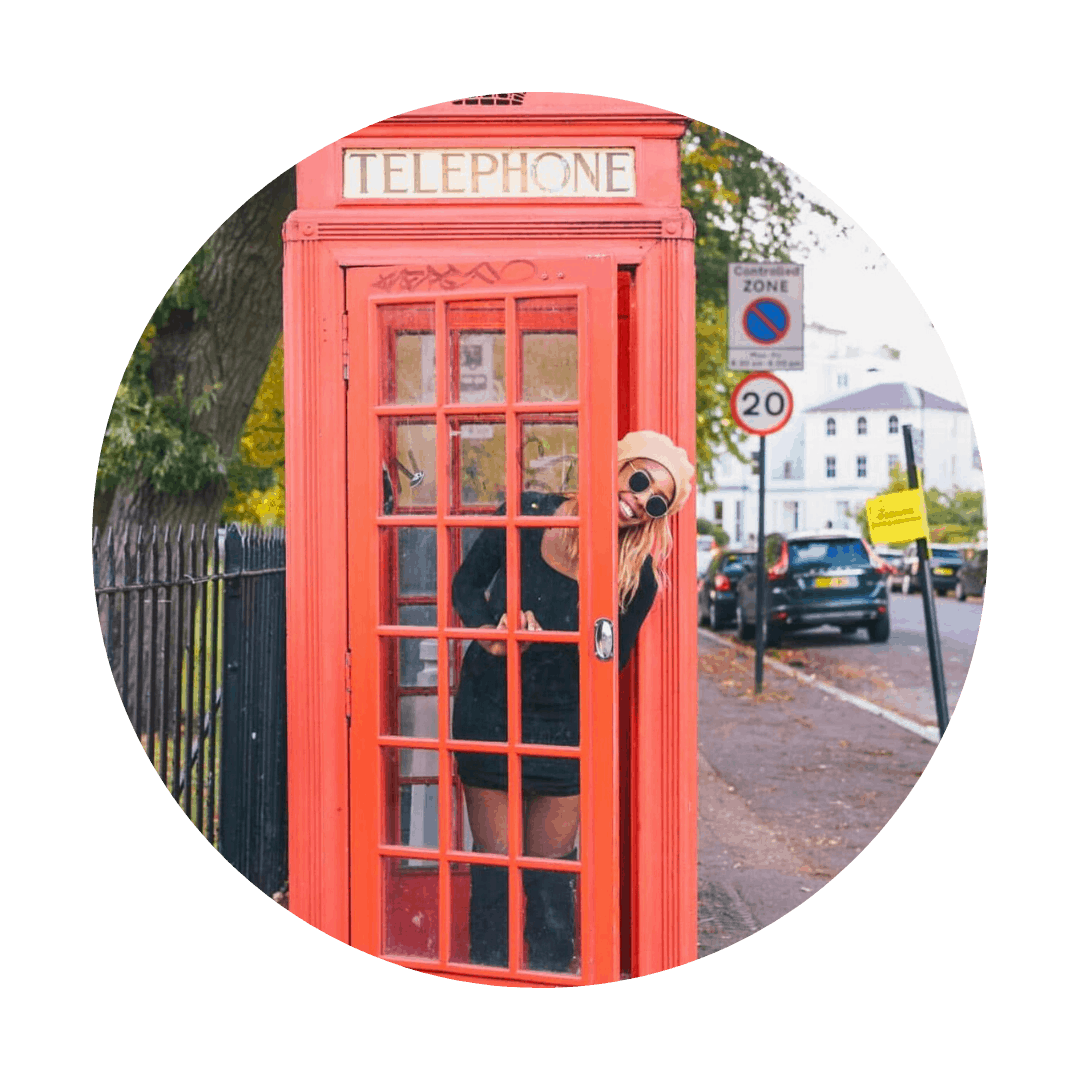
Hi, I'm Candace
Candace Abroad
A London & Travel Blog

London , London Parks, Gardens & Mews , London Tours & Experiences , London Travel Tips & Inspiration · January 30, 2024
The Best Kew Gardens Tips: A Local’s Guide (2024)

Table of Contents
Looking for the best Kew Gardens tips? Look no further! Here’s your ultimate guide to the UNESCO World Heritage Site — from a Londoner!
This post may contain affiliate links. Check out my Disclosure & Privacy Policy for more information.
London may be known as ‘the Big Smoke’, but it’s also the home of the largest and most diverse botanical and mycological collections in the world. You guessed it – Kew Gardens !
And if there’s one thing we Londoners cherish, is a city oasis. So it’s no wonder it appeals to seasoned botanists, plant enthusiasts, and even the rookies that are just eager to change the landscape for once.
Are you one of them? Well, lucky for you, as a long-time local, I’m full with insider tips that’ll let you step into a world of exotic plants like the seasoned explorers.
We’ve got plenty of ground to cover, so don your adventurous hat and join me as I spill the tea about experiencing Kew Gardens like a real pro!
The Best Kew Gardens Tips to Visit Like a Pro

Kew Gardens in a Nutshell
🪷 Overview: Nestled about 30 minutes from Central London, it’s a UNESCO World Heritage Site that exists since 1759 and has over 30,000 different plant and seed species from around the world.
📍 Location : Conveniently located at Richmond (TW9 3AE), it’s just a stone’s throw away from the Kew Gardens station (which has its own pub!).
🕙 Opening Hours : The gates open wide every day from 10am, giving you all the daylight you need to explore its treasures. Closing times depend on the season, starting from 4pm during winter until 7pm during summer (last entry is always one hour before closing).
🎫 Tickets : A modest fee aids in the preservation of this green oasis — and it’s worth every penny! Adult tickets start from £12 for off peak weekdays until £24 for peak weekends. Kids under 4 go free and tickets for those under 15 start at £4. There are also concessions available. Check all prices here.
P. S. – Entrance is also included on The London Pass , so if you’re visiting London and planning to go to many tourist destinations, this could save you loads!
⏳ Suggested Duration: I’d highly recommend spending at least 3 hours here, giving you plenty of time to wander, lose yourself, and even take a well-deserved break at one of the cafés and restaurants.

Photo courtesy: Kew Gardens
Planning Your Visit to Kew Gardens

When planning your visit to this green paradise, timing and researching is everything. Here’s the most important things to consider!
Best Time to Visit
For the best Kew experience, try to visit during spring (late March to early June). Nothing can match the vibrant colours, delightful scents, and the cheerful song of birds — it’s an absolute treat for the senses!
Summer (June to August) definitely comes second, although autumn (September to mid November) is magical considering you get to see the changing of the seasons.
And while winter (late November to late February) isn’t the best time to go, consider tickets are cheaper. Plus, you can join the UK’s most acclaimed festive trail !
Regarding times, if you fancy a bit of peaceful solitude, drop by in the early morning or late afternoon, when the park is blissfully serene. It’s ideal for a leisurely stroll or a quick snap for the gram without the crowds photobombing your shot.
Plan a Route
Being an experienced local, I strongly suggest plotting your route in advance to make sure you don’t miss out on the best things to see here (more on that later).
Seeing the map for the first time might seem a bit overwhelming for first-time visitors, but don’t panic! The garden’s extremely user-friendly layout won’t let you stray too far.
Consider Guided Tours
Now if you prefer a touch of narrative to your visit, consider joining one of the daily guided tours for an introduction to the Gardens (at 11am and 1:30pm). It’s an excellent way to discover lesser-known tales of the site, enjoy expert insights about the flora and fauna, and even pick up a gardening tip or two.
If you’re visiting during winter, the winter highlights walking tour is an amazing opportunity to discover the plants that come (more) alive during the season.
How to Get to Kew Gardens

Like (almost) anything in London, getting to Kew Gardens is a breeze thanks to the public transport and great connections. Pick your method!
By Tube : Hop into the District line to Kew Gardens station. The Victoria Gate entrance is merely 500m away (and the walk in the neighbourhood is lovely!).
By Train: If you’re travelling from Central London or Surrey, the Southwest Trains from Waterloo offer a smooth ride to Kew Bridge station. From there, it’s a 10 minute walk to the Elizabeth Gate. Or you can go to Richmond station and pop in the 65 bus or the District Line.
By Bus: The iconic red buses also reach the gardens; the 65 stops close to Lion Gate, Elizabeth Gate and Victoria Gate, the 110 stops near Kew Gardens station and Elizabeth Gate; and the 237 and 267 stop at Kew Bridge station.
By Car: For those enjoying the pleasure of their own wheels, you can find plenty of street parking around Kew, but do it responsibly and respect the locals, please. There’s also a carpark near Brentford Gate, which costs £7 for a full day’s use.
By River Cruise: Eager to make a huge entrance? Sailing into Kew by river cruise is as splendid as it gets. Companies like Thames River Boats offer trips from Westminster Pier straight to Kew.
Top Things to See at Kew Gardens

Brace yourself for a fantastic and long list of things you can’t miss while in Kew Gardens. Grab a map, you’re going to need it!
The tiniest royal palace in the UK is in Kew Gardens, where you can have a fascinating peek into royal family life back in the days. The gardens surrounding it? Gorgeous, of course!
The Palm House
This mesmerising iron and glass structure houses a mind-blowing collection of rainforest plants. It’s an exotic world amidst a misty environment!
The Temperate House
The world’s largest Victorian glasshouse is full with some of the rarest temperate zone plants, including ornamental blooms that make it a top favourite amongst plant lovers.
The Tree Top Walkway
For a sky-piercing perspective of the gardens, ascend the 18-metres-high structure that puts you in a privileged position only birds can enjoy!

The Japanese Minka House and Pagoda
This corner of Kew adorned with Japanese style architecture embodies a zen-like serenity, a refreshing break from the quintessential English garden.
The Princess of Wales Conservatory
Want a tour around the world? This is the place! Part greenhouse, part adventure, you can find species from ten different climate zones under one roof, from cacti (my favourite!) to orchids.
The Waterlily House
Channel your inner Monet at Kew’s hottest and most humid house, filled with vividly colourful waterlilies and lotuses. These floating beauties create a dreamy atmosphere that’s truly Instagram-worthy!
Queen Charlotte’s Cottage
Take a leisurely stroll off the beaten paths and discover this rustic royal retreat that was donated by Queen Victoria with one special request – the landscape must be left in an uncultivated state.

An innovative multi-sensory experience awaits inside a gigantic lattice structure, mimicking a real beehive (the nature one, not Beyonce’s) using speakers and LEDs.
Davies Alpine House
End your Kew exploration on high—quite literally. This architectural marvel houses a variety of alpine flora meticulously pruned and cared for.
Kew Gardens Tips to Explore Like a Pro

Kew Gardens tips to visit like a pro involves more than knowing where to go and what to expect. It requires you to be extra savvy when packing for the day!

1. Prepare for the Weather
I’ve asked this before, and I’ll ask it again. When is it not going to be about the weather in London!? Don’t panic, though, in this case is more about considering a light jacket. Easy to fling off in the warmth of the greenhouses or to cosy up when outside.
2. Wear Comfortable Shoes
When you’re on a mission to conquer all the floral delights at Kew, choose footwear that’s kind to your soles. Believe me, you’ll walk more than Jane from Tarzan in the jungle.
3. Bring Everything You Need
Pack a (light) bag with essentials for your adventure: a water bottle, sunscreen, a few snacks to refuel, and a portable charger if capturing the sights of Kew is on your ‘to-do’ list.
4. Check Their Upcoming Events
Don’t forget to dice into their calendar of upcoming events , The gardens serve up a charming mix of music concerts, art installations, yoga sessions, food festivals, and so much more!
5. If you’re coming with kids…
For the little explorers, Kew is an amazing playground. From the Climbers and Creepers play area to interactive family trails and activities; compile a list of must-see clusters to let the kids genuinely enjoy, engage, and become mini environmental champions.
Where to Eat in Kew Gardens

A Kew Gardens exploration takes time, so you’ll need a break. Why not stop at one of their amazing cafes and restaurants, or bring your own picnic to the gardens?
On-site Cafes and Restaurants
Family Kitchen : Offering a no fuss menu, this one’s set to appeal the youngest of the adventurers in your party. You’ll enjoy pizzas, sandwiches and even ice cream in a relaxed and up-beat environment.
Pavilion Bar and Grill : Splurge on some sizzling grills and salads at the inviting sun-kissed terrace overlooking the beautiful gardens—alfresco dining with style!
The Orangery : For something fast and informal, head here to enjoy coffee, cakes, and light meals. Available for either take away or eat in.
The Botanical Brasserie: This one’s an all-day formal dining with modern British cuisine, offering everything from breakfast, lunch to afternoon tea.
Victoria Plaza Café: Perfect for a coffee break throughout the day! Look out for their reusable cup scheme, as they’re hoping to save over 20 thousand single-use cups.
Picnic Areas and Rules
Replete with sprawling greens and never-ending blue skies, Kew Gardens can be your perfect picnic postcard setting. But you need to be careful to avoid causing any disruption!
You can use any grassy area to do your picnic, but these don’t include those by the restaurants, buildings and glasshouses. Some of my favourite spots are The Arboretrum , the Palm House Pond and Cedar Vista (with gorgeous views of the Pagoda).
To ensure a zero-impact picnic, it’s not allowed to bring barbecues or picnic furniture . You should also bring a picnic bag to pop your rubbish and dispose responsibly.
Alcohol is permitted (with moderation!), and while music isn’t, you can still bring a pair of headsets to enjoy your favourite tunes.
Shopping at Kew Gardens

Ready to head off? Don’t forget your souvenir! The last Kew Garden tip is to invest some time (and money!) at the end of your day here.
Kew Gardens’ gift shops and plant nurseries are a delightful treasure hunt, where you’ll find everything nature-inspired.
From exclusive botanical prints to Kew-inspired ceramics and delicate jewellery, a book collection that pleases the youngest and oldest, and a vast collection of scents in aromatic candles, fragrant soaps, and indulgent botanical skincare.
Oh! And how could I forget!? Of course you can add a new member (or hundreds!) to your plant family at home, be it an exotic orchid, a cacti variety, or even a bonsai!
Honestly, you can add a whole extra hour to exploring them, as the marvels are infinite here.
Kew Gardens FAQs
Q: is it worth going to kew gardens.
A: Absolutely! Kew Gardens is an explorer’s dream in London, an oasis full of botanical surprises and just a fun adventure overall.
Q: How long should you spend at Kew Gardens?
A: With over 300 acres of enchantment to uncover, you’d ideally want to spend an entire day at Kew Gardens, if not more. But if you need to keep it tight, consider 3 hours as a minimum.
Q: What is the best time of day to visit Kew Gardens?
A: The early morning hours, just as Kew Gardens opens its gates, often gift its visitors with dew-kissed greenery, chirping birdsong, and fewer crowds—a mesmerising start to the day!
Q: What’s best to see at Kew Gardens?
A: It’s difficult to pick! But consider paying a visit to the largest Victorian glasshouse in the world, the exhilarating tree-top walkway, the Princess of Wales Conservatory, and the fascinating Hive installation.
Q: Can you walk around Kew Gardens for free?
A: While Kew Gardens nurtures an open spirit of discovery, it’s not a free-for-walk space; a ticket purchase is required to contribute to its ongoing maintenance and preservation initiatives. But trust me, it’s worth it.
Q: What is Kew Gardens like?
A: Kew Gardens is like walking in what paradise is usually described like. It’s a place with endless trails of sounds, smells, colours and textures, both on the ground and in the sky. A sensory journey paralleled by none!
Thanks for reading my Kew Gardens Tips Guide. If you enjoyed it, let me know on Instagram !
Check out more london guides:.
- 50+ Beautiful Parks and Gardens in London To Explore ASAP!
- 5 Magic Things to do in Richmond Park, London
- Where to See Gorgeous Spring Flowers in London
- 5 Best Things to do in Holland Park, London (+ Map!)
- 19 Best Secret Things to do in London
- Your Ultimate Summer Guide to London
Happy Londoning,

Get on the List
You’ll also love.

Latest from Instagram
Follow @candaceabroad
Moving to London? Check out my Digital Moving Guide!

join the monthly newsletter
Subscribe for itinerary inspiration, travel inspo & exclusive content straight to your lovely inbox.
Affiliate disclosure
Theme by 17th Avenue Designs
Disclosure & Privacy Policy
Copyright © 2024 Candace Abroad Theme by 17th Avenue
- London Attractions >
Kew Gardens & Kew Palace

Explore Kew Gardens and Kew Palace. Your ticket includes entry to 326 acres of gardens, 3 art galleries, a treetop walkway and Kew Palace. Kew is the largest UNESCO World Heritage Site in London and attracts millions of visitors each year who come to explore the unique and beautiful plants and fungi. There are over 50,000 living plants across the botanical gardens.
The elegant Kew Palace, built in 1631, is a royal palace and was the home of King George III and Queen Charlotte.
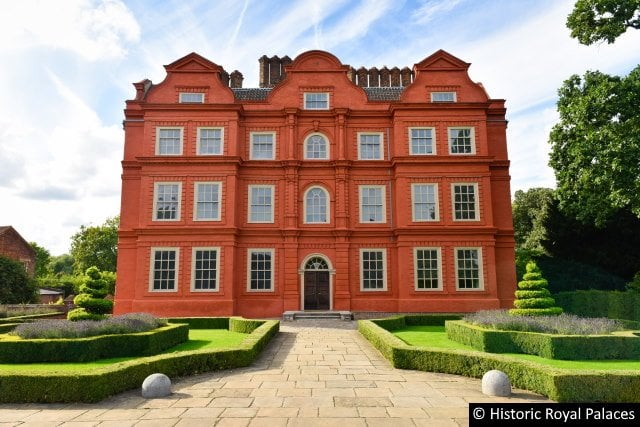
- Admission ticket to Kew Gardens
- Explore the beautiful gardens of this UNESCO World Heritage Site
- Experience the exotic rainforest in the Palm House
- See the Arboretum, Waterlily House, Princess of Wales Conservatory and more!
- Visit one of Kew Gardens cafes or restaurants for enjoyable meals or afternoon teas
Ticket includes:
- Admission to Kew Gardens
- Free walking tours that take place at least twice daily, subject to availability
- Map and seasonal highlights guide
Please Note
- The treetop walkway, Climbers & Creepers, the Children’s Garden, the galleries, Kew Palace and Kew Explorer are currently closed
- Children aged 16 and under must be accompanied by an adult at all times
- Only adults with children are able to enter The Children’s Garden along with their valid ticket
- Only registered disability assistance dogs are allowed in the gardens
- Bicycles, tricycles, roller skates, skateboards, micro-scooters, balance bikes and other vehicles (except powered wheelchairs) must be left at the gate
- To protect the lawns ball games and sports are not permitted
- No food or drinks are allowed in the galleries
- The narrow Treetop Walkway is not suitable for mobility scooters and pushchairs
- Manual wheelchairs are welcome in the galleries, please leave buggies in the buggy park provided
- Customers will need to arrive within 45 minutes of their time slot
- The Orchids exhibition will be back in Feb 2021, and will be included in your ticket. Please organise a visiting time slot with reception upon arrival
BOOK TICKETS
Please note: This product cannot be amended or cancelled once booked
terms and conditions
You might also be interested.
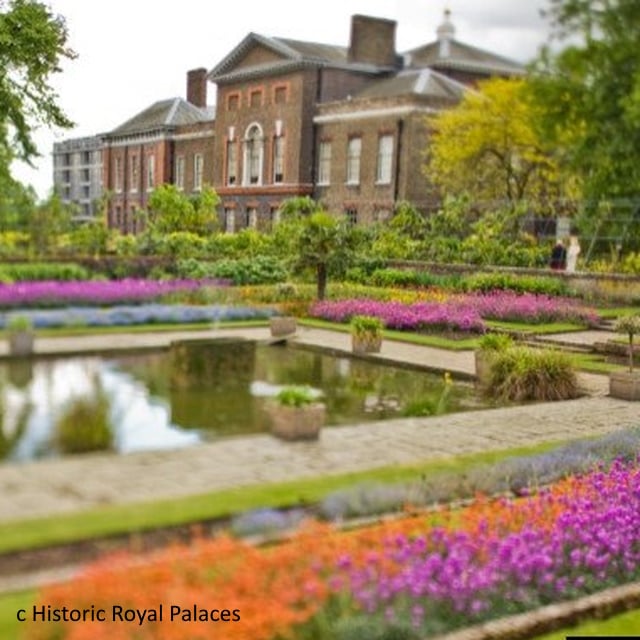
Kensington Palace a Royal Residence

Hampton Court Palace, Gardens & Maze

Climb the O2 Arena

Buckingham Palace & Hop On Hop Off Bus Tour
- Skip to primary navigation
- Skip to main content
- Skip to primary sidebar
- Skip to footer
TravelAwaits
Our mission is to serve the 50+ traveler who's ready to cross a few items off their bucket list.
8 Must-See Things At London’s Kew Gardens

elRoce / Shutterstock
- Activities and Interests
- Architecture
- Destinations
- History and Culture
- Outdoor Activities
- Sightseeing
- United Kingdom
The Royal Botanic Gardens, Kew, known simply as Kew Gardens , is located in Richmond, a suburban town in southwestern London. The garden, a UNESCO World Heritage site , dates to the 18th century, when it was established on the grounds of a royal palace.
Today, the garden is a globally renowned scientific institution for plant and fungal research. The original 9-acre area has expanded to include 300 acres containing more than 50,000 living plants. With its Victorian glasshouses, arboretum, and artwork, there is a lot to see.
Here are eight of the garden’s attractions that no visitor should miss.

Jeff Eden / RBG Kew
1. The Great Pagoda
The Great Pagoda was completed in 1762 as a gift for Princess Augusta, who founded Kew Gardens. When it was constructed, 80 dragons carved from gilded wood adorned the roofs of its 10 floors. The dragons were removed in 1784. There were rumors that they were sold to pay King George IV’s gambling debts, but it is more likely that they simply rotted over time. The Great Pagoda was restored in 2018, and the dragons are back . Eight of the first-floor dragons were produced in the traditional manner and hand-painted. The remaining 72 were 3-D printed in a robust polyimide material.
A circular staircase inside the pagoda allows visitors to climb to the top for spectacular views. There are a limited number of spaces available per time slot, and if you wish to climb the pagoda, you must pay an additional fee. There are 253 steps to the top.
If you choose not to climb to the top, you can look through the small room at the base of the pagoda at no additional cost. Here you’ll find information about the pagoda and its architect, Sir William Chambers. You’ll also find two automata . One shows the architect visiting Canton, China, where he studied pagodas. The other shows the royal family strolling through Kew Gardens. Handwheels at the bases of the automata allow you to control the moving parts.

2. The Japanese Landscape
Three garden areas make up the Japanese Landscape . The Garden of Peace, an area reminiscent of a traditional Japanese tea garden, features stone lanterns and a dripping water basin. Raked gravel and large rocks in the sloped Garden of Activity represent the movement of flowing water. The Garden of Harmony unites the two. All three combine to create a peaceful, manicured oasis.
At the center of the Japanese Landscape is the Chokushi-Mon, or Gateway of the Imperial Messenger. It was created for the Japan-British Exhibition of 1910 and is a replica of the Gate of Nishi Hongan-ji (Western Temple of the Original Vow) in Kyoto, Japan. Its finely carved wooden panels feature stylized flowers and animals that depict an ancient legend.

Gareth Gardner / RBG Kew
3. The Temperate House
The Temperate House , originally opened in 1863, is the world’s largest Victorian glasshouse. It has been an iconic landmark of Kew for more than 250 years. The Temperate House reopened in 2018 after a five-year renovation project. Filled with 10,000 individual plants, it is home to 1,500 species from Africa, Australia, New Zealand, the Americas, Asia, and the Pacific Islands, including some of the world’s rarest and most threatened temperate plants. All of the species require conditions above 50 degrees to survive.
Level pathways wind throughout the ground floor, and a balcony around the interior perimeter offers views from above. Note that the balcony is not wheelchair accessible.

4. The Treetop Walkway
You’ll find 14,000 trees in Kew Gardens. The Treetop Walkway provides an opportunity to get closer to those trees and offers views of the garden and the city beyond. Made of weathered steel that blends into the natural environment, the walkway stands 59 feet tall. It is 656 feet long and loops through the upper branches of beech, sweet chestnut, horse chestnut, and oak trees. The walkway offers a unique, ethereal perspective of nature. You’ll love watching bird and insect behavior at this height and hearing the breeze rustling the branches.
The 188 steps to the walkway are a manageable climb, since the steps are broken up into several flights and there’s a landing at the end of each flight. There is room on each landing to step out of the path of oncoming climbers to rest or simply take a few moments to admire the view. The walkway itself has chest-high railings, and several circular jut-outs along the way provide additional viewpoints. There is an elevator, but it was out of service on the day I visited. If you plan to use the elevator, check the Kew Gardens website for information about the elevator’s status. As I write this, the site says that the elevator is currently out of service.
There is no additional charge to access the Treetop Walkway. It closes an hour before the whole garden closes.

5. The Palm House
You can explore an indoor rainforest at the garden’s Palm House . The Palm House, which opened in 1848, was the first glasshouse to be built at Kew Gardens. Inside, you’ll find lush vegetation and dense, moist air. Many of the plants in the collection are endangered in the wild, and some are even extinct. Rainforest plants cover only 2 percent of the world’s surface but make up 50 percent of plant species. Look for the Madagascar periwinkle, now used to treat a number of different types of cancer; the rubber tree; the cocoa tree; and the cycads, or palm-like plants that were widespread more than 250 million years ago.

6. The Marianne North Gallery
With all there is to see at Kew Gardens, you might easily miss the attractive red brick building housing the Marianne North Gallery . But don’t hesitate to take a look inside — the exquisite interior, which incorporates different kinds of wood and stenciled floor tile, is home to more than 800 works of botanical art.
Marianne North was a wealthy, single Victorian woman who traveled the world solo in pursuit of interesting plants to paint. She was unconventional and ventured to some of the most remote places in the world. After 13 years of travel, she decided that she wanted to exhibit her vivid, detailed paintings in Kew Gardens, where her passion for plants began. She offered to build the gallery if Kew would display her work in it. The gallery was constructed in 1882, and a restoration of the building was completed in 2008.

7. The Princess Of Wales Conservatory
The Princess of Wales Conservatory is the newest glasshouse at Kew Gardens. It opened in 1987, and its 10 computer-controlled climate zones showcase a variety of ecosystems. In the carnivorous plant zone, you’ll find predatory plants such as Venus flytraps and pitcher plants. There are cacti and succulents in the dry tropical zone, orchids and bromeliads in the steamy zones, and a giant water lily in the wet tropical zone.

8. The Hive
The Hive , one of the most photographed spots in Kew Gardens, is an art installation located in the heart of a wildflower meadow. The 55-foot-tall structure depicts life inside a beehive. The mesh frame is constructed from 170,000 aluminum parts and 1,000 LED lights. The LED lights glow according to the vibrations of bees in the garden. You’ll hear the whirring of bees when you walk inside, as well as background music composed by musicians who improvised to a live feed of beehive sounds in the key of C.
There is something to see in every corner of Kew Gardens. Keep your eyes open as you walk from attraction to attraction. You’ll pass colorful border plantings, various styles of gardens, peaceful and majestic wooded areas, ornamental structures, and assorted garden art.
On the website , you’ll find more information on these and other attractions, as well as the park’s hours and fees. Note that the glasshouses close an hour before the garden closes.
London bound? Don’t miss these 10 free museums in the city . And when you’re ready for a break from the hustle and bustle, consider one of these eight amazing day trips from London .

Donna Janke is a writer based in Canada out of Winnipeg, Manitoba. She shares her travel discoveries on her blog, Destinations Detours and Dreams , using a combination of narrative, photography, and personal reflection, all with an eye for detail. Her interest in travel started as a child when books transported her around the world, and grew as she explored the world in person. Her life as a travel writer began after she retired from a professional career in IT. Donna loves discovering the unique character of places, near and far, and writing to inspire others in their travels. Her travel stories have been published in several outlets, and tend to focus on culture, history, nature, art, architecture, and food.
- Work with me
- Acolades + Awards
- Published Work
- Bucket List
- Privacy Policy
- Destinations List
- AUSTRALASIA
- WILD SWIMMING
- OUTDOOR ADVENTURE GIRLS
- Write for Me
Gardens of London: 12 Things to see at Kew Gardens
Located in West London, Kew Gardens is one of the world’s most prestigious gardens. It has an extraordinary diversity of plants, over 14,000 trees and it is all set within a vast and beautiful landscape layered with history and heritage.
It is also where the Royal Family would come to escape the chaos of the city. It is one of the best Gardens of London.
From the Kew Gardens treetop walkway to the Kew Gardens Orangery, and the Kew Gardens Pagoda, or the Kew Gardens Hive, there is so much to see at this magnificent attraction in London.
If you are visiting London, you must take a trip to the botanical Kew Gardens.
Keep reading for 10 Things to see at Kew Gardens…
- King William’s Temple
- The Waterlily House
- Lake and Sackler Crossing
- The Temperate House
- The Arboretum
- Davies Alpine House
- The Princess of Wales Conservatory
- The Treetop Walkway
- The Palm House
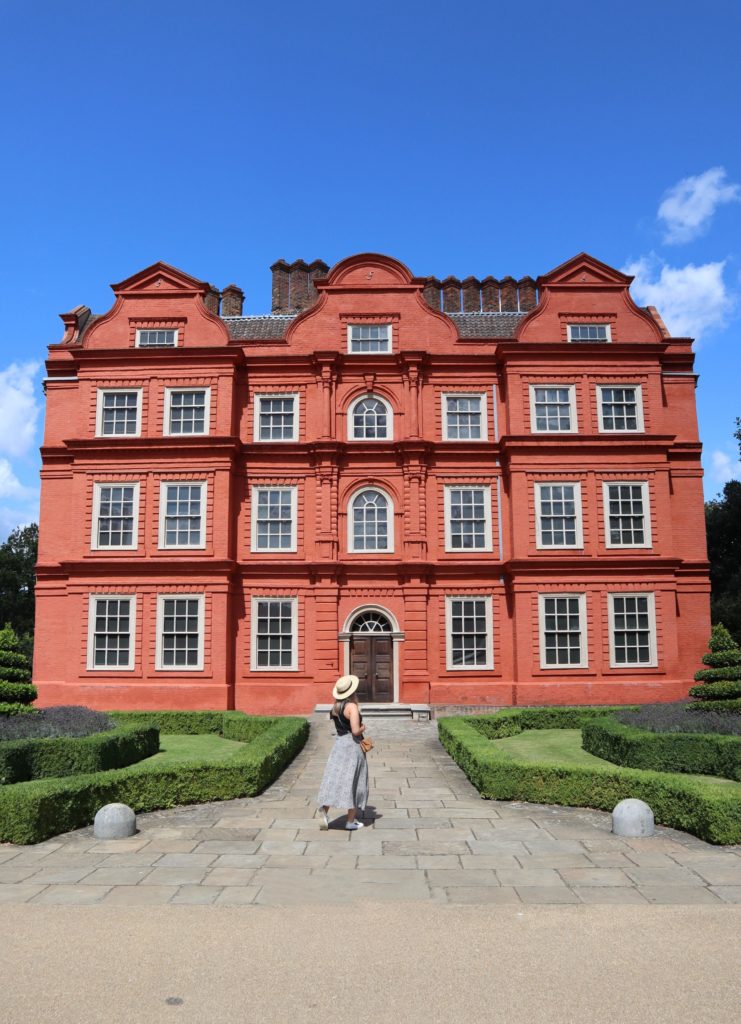
Where is Kew Gardens
Richmond – Royal Botanic Gardens, Kew, London, UK
How to get to Kew Gardens from London
It’s easy to walk, cycle or drive to Kew Gardens – but note that parking is very limited at Kew Gardens.
Bus to Kew Gardens
If you are travelling by bus, take Route 65 which stops close to Lion Gate, Elizabeth Gate and Victoria Gate. Route 391 stops near Kew Gardens station and Elizabeth Gate. Routes 237 and 267 stop at Kew Bridge station.
Train to Kew Gardens
Kew Bridge station is 800m from Elizabeth Gate, via Kew Bridge. South West Trains run services from Waterloo, via Vauxhall and Clapham Junction. There is no level access at Kew Bridge. Richmond station has a lift and level access. Take 65 bus (in the direction of Ealing Broadway) to Lion or Victoria Gate.
Tube to Kew Gardens
Kew Gardens station is 500m from Victoria Gate. It is in Zone 3 and is served by the District Line (Richmond branch) and London Overground. There is no level access from the westbound platform. It is possible to continue one-stop to Richmond and catch a tube back to use the eastbound platform which does have level access.
Drive to Kew Gardens
Ferry Lane, near Brentford Gate
- Limited parking available in the car park
- Parking costs £7 per day
- Blue badge holders park for free in disabled access parking spaces or other spaces if full
*Information provided by Kew Gardens
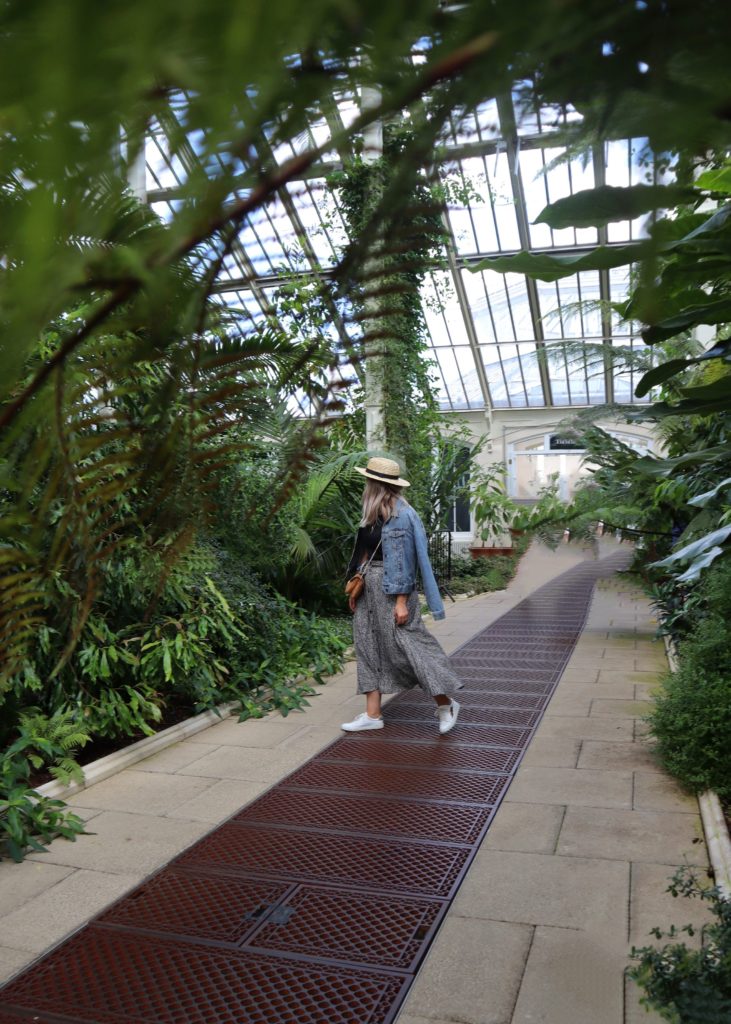
Kew Gardens Opening Times
Opening and closing times are seasonal and vary throughout the year.
Monday to Friday: 10am–7pm (last entry 6pm)
Saturday and Sunday: 8am*–8pm (last entry 7pm)
*Entry via Victoria Gate only. All other entry gates will open from 10am.
How much are Kew Gardens Tickets?
Entry to the Gardens is advance booking only. Remember you will need to pre-book your time slot.
- Adult: £17.50
- Child (4-15 years) £5.50
- Under 4: FreeYoung person: £9.00
- Family ticket for 3: £25.00
- Family ticket for 4: £40.00
- Disabled person: £15.50
- Senior: £15.50
- Jobseeker: £9.00
- Student: £9.00
Visiting during coronavirus
Kew Gardens are delighted to reopen, but you’ll notice they have made some changes. You will need to book a time slot in advance, and you might need to queue to enter some of the indoor attractions. With acres of green space, thousands of plants and secret corners, you can roam all day in our botanic gardens safely and at ease.
To limit and monitor the number of visitors, they have established prebooked entry time slots for the first time in their history. You must book your time slot online before you visit, otherwise, unfortunately, you will be turned away at the gate, even if you’re a member.
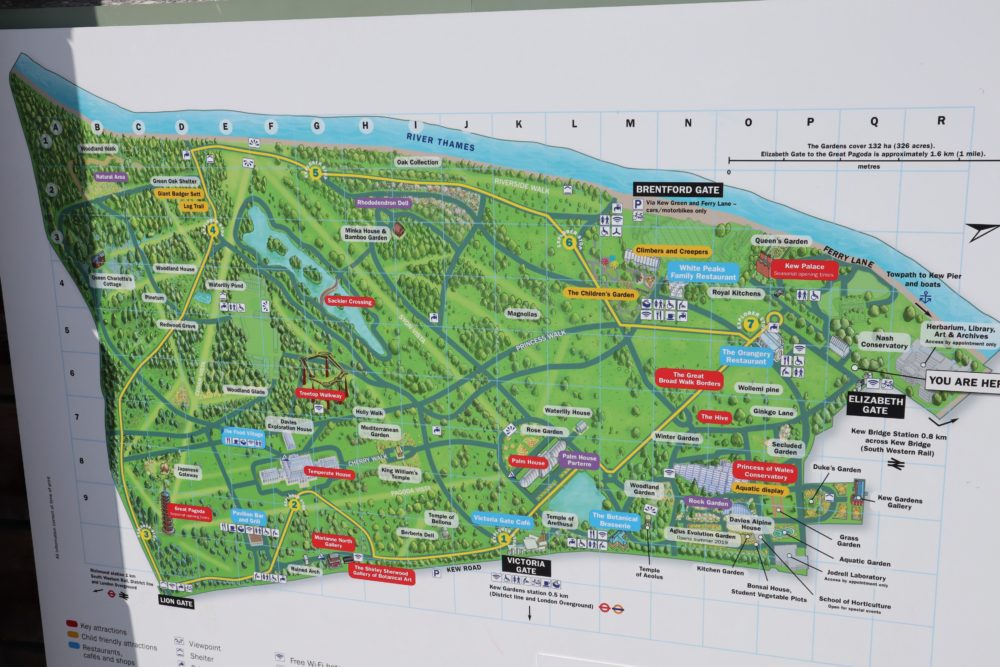
10 Things to see at Kew Gardens
There is so much to see and do on a visit to kew gardens, 1. kew palace.
A rich history spanning nearly 400 years, it is also here that the original botanic gardens at Kew began. Kew Palace is iconic and sometimes forgotten by visitors coming to Kew. But this building is stunning and its bright orange hue stands out next to the array of trees.
The Royal Family used to spend many happy summers at Kew Palace, the King and with his wife Queen Charlotte and their 15 children. However, these periods of relaxation were shadowed by King George’s struggles with mental illness. After Queen Charlotte died in 1818, Kew Palace was closed off.
2. The Pagoda
Built-in 1762 for Princess Augusta, the Pagoda is open to the public the first time in eight years. Following a major restoration project, you can now reach the heights of the Great Pagoda and marvel at spectacular views across London.
Kew’s Pagoda was completed in 1762 as a gift for Princess Augusta, the founder of the Gardens. It was one of several Chinese buildings designed for Kew by Sir William Chambers, who had spent time travelling and studying the architecture of East Asia. A popular ‘folly’ of the age, it offered one of the earliest and finest bird’s eye views of London – which you can enjoy today.
3. King William’s Temple
In the centre of the Mediterranean Garden stands King William’s Temple, built-in 1837 for Queen Victoria, in memory of William IV. It was designed by William IV’s architect Sir Jeffry Wyatville, to complement Chambers’ Temple of Victory (no longer standing). Its Tuscan porticos contain iron plaques commemorating British military victories from 1760 to 1815.
4. The Waterlily House
Designed and built-in 1852 by Richard Turner, this small, square glasshouse was designed specifically to showcase the giant Amazon waterlily – a natural wonder of the age. It was completed in 1852 and is now a listed building, brimming with aquatic plants and tropical fruit.
Its circular pond spans over 10 metres and there is also the star in here is the Victoria cruziana, the leaves of which can grow to 1 metre across. Inside the house, there is also the smallest waterlily in the world which no longer exists in the wild saving it from extinction.
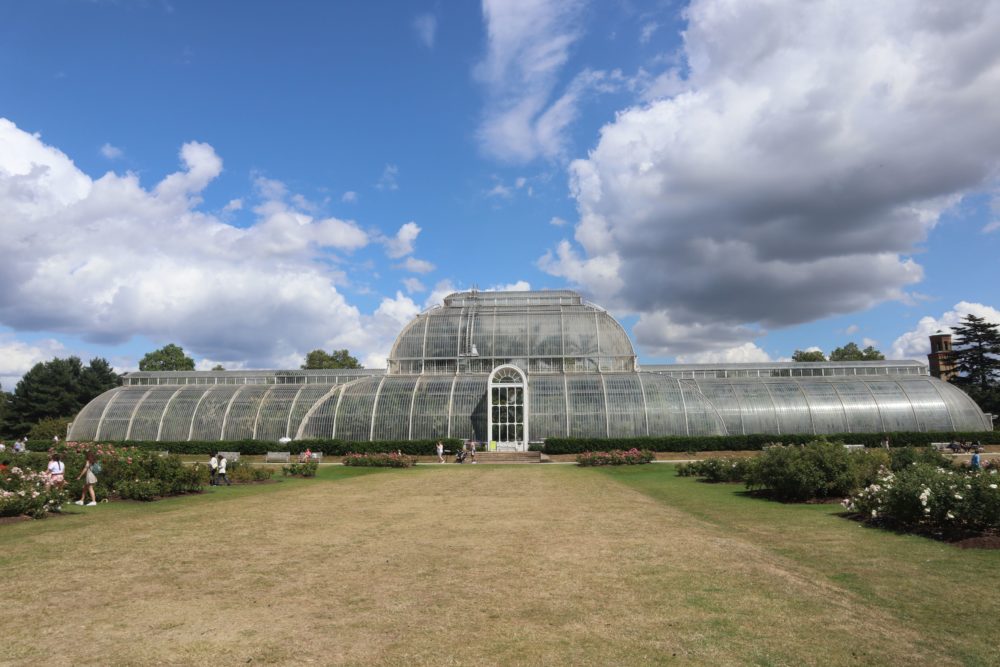
5. Lake and Sackler Crossing
The Lake covers five acres of water, studded with four islands that provide vibrant colours, enhanced by their reflection in the lake. Particularly stunning in autumn, Chinese tupelo trees turn deep red, while black tupelo trees glow red, orange and yellow.
The Sackler Crossing, installed in 2006, gives easy access to some of Kew’s less-visited areas. The black granite walkway leads you over the water along a curving path that mimics the Lake’s rounded banks. On approaching the bridge, its walls appear to form a solid boundary that gradually begins to disappear when viewed sideways on.
6. The Temperate House
Travel the world in this glittering cathedral – home to 1,500 species of plants from Africa, Australia, New Zealand, the Americas, Asia and the Pacific Islands. Following a major five-year renovation process, the Temperate House re-opened in 2018 to showcase the splendour of the world’s temperate zones.
As temperate plants, all the species contained within its walls need to live in conditions above 10 o C to survive. Despite being the foundation of much life on Earth, many of these plants are under threat. The Temperate House tells the story of how Kew and partners all around the world are working to rescue plants that are rare or already extinct in the wild.
7. The Hive
At a towering 17 metres tall, The Hive is a striking installation in the heart of a wildflower meadow that recreates life inside a beehive. A stunning piece of contemporary art, it’s one of the most photographed spots in the Gardens.
Walk into this larger-than-life enclosure and you’ll immediately enter the whirring world of a real beehive at Kew. One thousand LED lights glow according to the vibrations of bees that live in the Gardens.
In the background, a musical symphony responds to this activity. You might (or might not) notice that every sound is performed in the key of C – the very key that bees buzz in! Exploring the secret life of bees on a human scale, the Hive is a space to celebrate their powerful role in sustaining life as we know it.
8. The Arboretum
Stretching across two-thirds of the Gardens, the Arboretum surrounds our glasshouses in a leafy enclave for you to walk, wander and discover.
The 14,000 trees rooted here represent more than 2,000 species, including rare and ancient varieties. This great collection contains trees as old as the Gardens themselves, many that cannot be found anywhere else in Britain.
Meaning ‘a place with trees’ in Latin, the Arboretum is not only a striking landscape but a scientific treasure trove, vital to our botanical and conservation research.
Every tree planted here is a source of knowledge, helping us conserve the habitats of beloved native trees and protect some of the world’s most fascinating species at risk from deforestation.
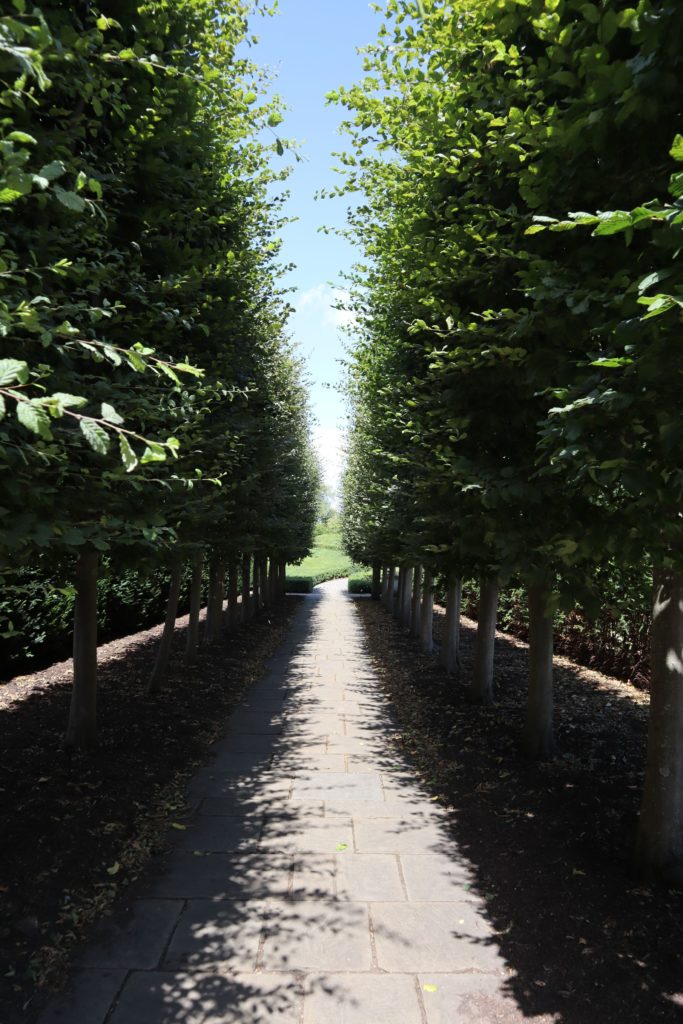
9. Davies Alpine House
Alpines are some of the world’s most resilient plants – able to grow above the altitude at which trees can survive.
These plants have adapted to endure the severe conditions of the Earth’s poles or mountaintops, from the Arctic to the Alps or the Andes.
In the wild, alpines spend the winter dormant, dry and protected from extreme temperatures by a blanket of snow. Melting snow in spring provides moisture and exposes the plants to light. The short growing season means plants must flower and set seed quickly. They require plenty of light and cool, constantly moving air.
10. The Princess of Wales Conservatory
With ten computer-controlled climate zones, the Princess of Wales Conservatory is a glassy labyrinth leading you through a series of fascinating ecosystems. In our zone dedicated to carnivorous plants, you’ll discover the conditions that helped predatory species like Venus flytraps or pitcher plants evolve to swallow their prey in less than half a second.
There’s a new surprise at every corner of this winding glasshouse. Take in spiky cacti and succulents as you travel through the dry tropics and emerge into the dense, steamy zones where tropical orchids and bright bromeliads come alive.
There’s plenty of beauty on display too. The celebrated giant waterlily Victoria amazonica floats in the wet tropical zone, where its spectacular white flowers open at sunset, filling the air with a strong perfume before they are pollinated and turn bright pink by the morning.
11. The Treetop Walkway
At 18m high, you can walk 100m through the tops of the canopies, experiencing the smells and sounds, and getting a bird’s eye view right across the Gardens. From its heights you can observe the complex ecosystem of the trees’ uppermost branches, a world teeming with birds and insects, lichen and fungi.
At ground level, sculptures carved from tree trunks illustrate microscopic elements of trees to explain how they grow. A path leads you below ground to the Rhizotron, an underground lab constructed to study the soil.
12. The Palm House
One of the world’s most extraordinary glasshouse structures! The Palm House was built in the 1840s and constructed in a way that meant no supporting columns were needed. You can wander through and you’ll discover rainforest treasures like the oldest pot plant in the world or the disease-fighting periwinkle. Many plants in this collection are endangered in the wild, some even extinct.
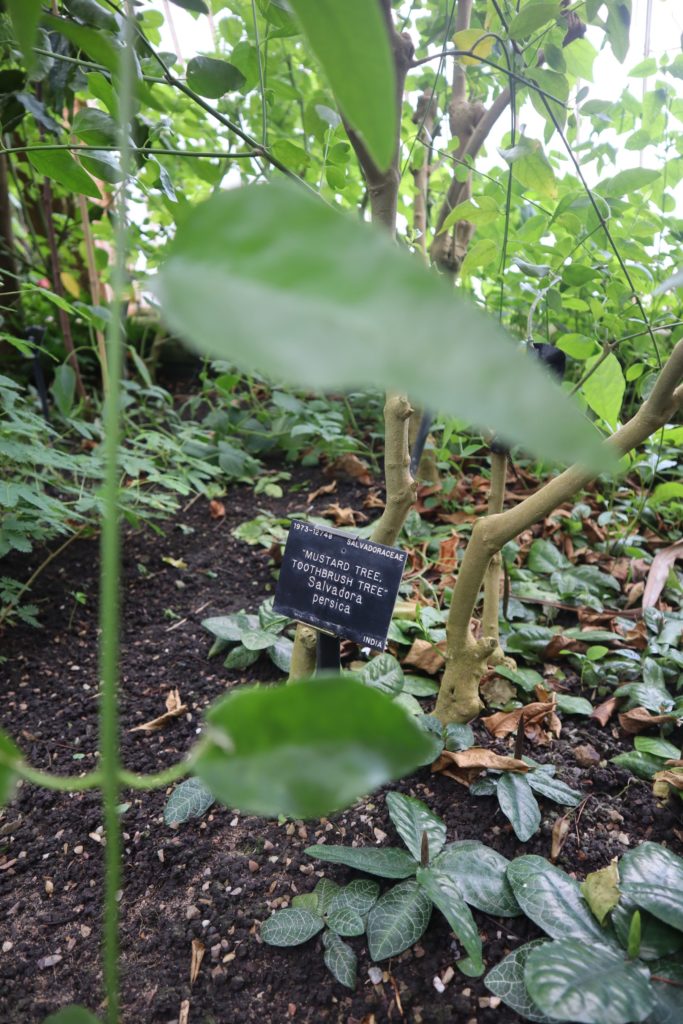
Travel the World at Kew
Take a one-day trip around the world by exploring Kew Gardens’ breathtaking botanical landscapes. In a year when many travel plans have had to change, Kew Gardens invites visitors to satisfy their wanderlust by making a trip around the world in one day.
Travel the World at Kew will guide visitors across six continents, through designated locations set within our UNESCO World Heritage landscape. By highlighting beautiful plants from 10 countries and regions, visitors will be transported to these parts of the world through sights, smells, and spirit of place.
By taking a journey through our global collections, visitors will discover landscapes, plants and architecture that can transport them from the Mediterranean to a Japanese Garden of Peace; from South African mountaintops to the forests of California – all within a few hours. At the most biodiverse postcode on the planet, visitors can reconnect with nature and discover a whole world of natural wonder.
22 August – 16 October 2020
- From 22 August, visitors to Kew Gardens are invited to travel the world through our global collections
- Kew will guide visitors on a journey with specially commissioned pieces of poetry, prose and illustrations by exciting talent from around the world
- Visitors will be transported across six continents, from the tranquil Japanese Landscape to the fragrant Mediterranean Garden and towering Californian Redwood Grove
- A unique large-scale botanical sculpture in the form of a magnificent humpback whale, created by the winners of Netflix series ‘The Big Flower Fight’, will be exhibited from 22 August – 18 September. FIND OUT MORE .
So are you going to plan a visit to Kew Gardens? It’ll be worth it, I promise.
*Thank you to the botanical Kew Gardens for hosting me.
If you on a bigger trip exploring more of Europe check out my guides to France , Germany, Greece, Iceland , Italy , Portugal , Spain and United Kingdom .
My Travel Tips and Recommendations
To book flights, I always use flight search engine, Skyscanner, I regularly use the Everywhere tool to find the cheapest places to travel. It’s how I get to travel so much all around the world. I find it the easiest way to compare flight prices across airlines and get the best deals.
Accommodation
For accommodation, I usually book most of my hotels or hostels through Booking.com. I love using this platform as it provides me with some amazing deals for accommodation all around the world. Or if you prefer, I also recommend using Airbnb. If you haven’t signed up with Airbnb already, you can use this link to get £25 off your first visit!
Photography and Technology
Here is a list of the technology I always travel with:
- Canon G7X Mark II
- Canon EOS M50 and lens
- GoPro Hero Black 7
- DJI Mavic Pro
- RØDE VideoMic GO On Microphone
You can also find me on social media: Facebook , Twitter, YouTube and Instagram .
To receive my articles and reviews straight to your inbox SUBSCRIBE HERE .
Did you know I also vlog my trips? Make sure you subscribe to my YouTube channel so you get alerted when all my travel videos goes live… CHECK THEM OUT HERE
Thank you for reading and as always happy adventuring! If you have any questions about the destination please leave these in the comments below.
If you’ve enjoyed this post, please share it for me with all your friends and family!
You Might Also Like
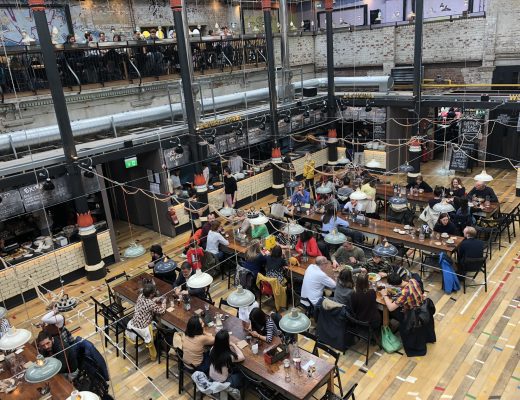
18 Cool places to eat in Manchester [2023]
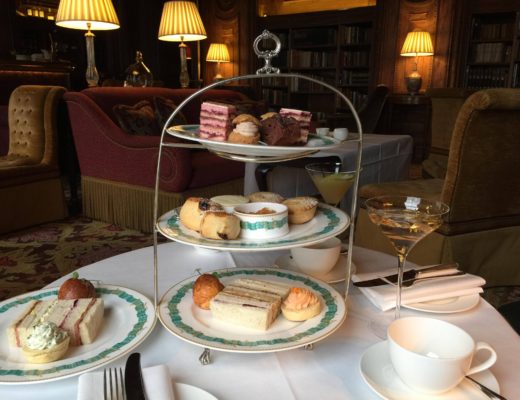
Cliveden ’66 Afternoon Tea at Cliveden House
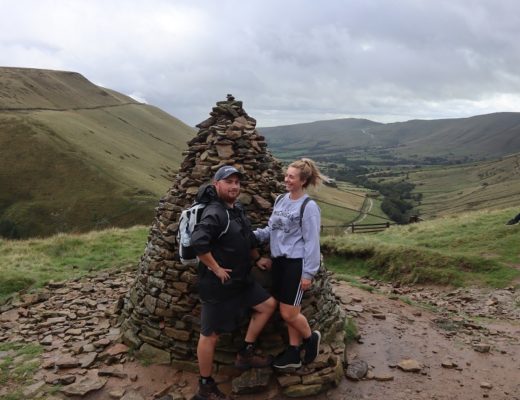
Walks from Edale: Kinder Scout Circular // Peak District
Affiliate links are used in my website. i receive a small commission from products you purchase at no extra cost from you..

A Day Trip Guide to Kew Gardens
A visit to Kew Gardens is the perfect getaway from London, offering a tranquil setting in a botanical paradise. This top tourist attraction outside the city also happens to be a UNESCO World Heritage Site, and is one of the largest botanical gardens in the world. That’s why we’ve created this day trip guide to help you make the most out of your time at Kew Gardens.
Officially called the Royal Botanic Garden of Kew , these beautiful grounds are perfectly manicured, with the indoor collections being equally and beautifully curated. There are over 50,000 different kinds of living plants in the Garden. A trip to Kew is your chance to get closer to nature and uncover the science behind the plants and glasshouses.
Kew dates to the 18th century when it was established on the grounds of a royal palace. Originally only 9-acres, there are now 14,000 trees set over 300 acres for your exploration, all located in Richmond in Southwest London.
Disclaimer: Hi! this post may contain affiliate links which will take you to online retailers that sell products and services. If you click on one and buy something, I may earn a commission, see my Affiliate Disclosure for more details.
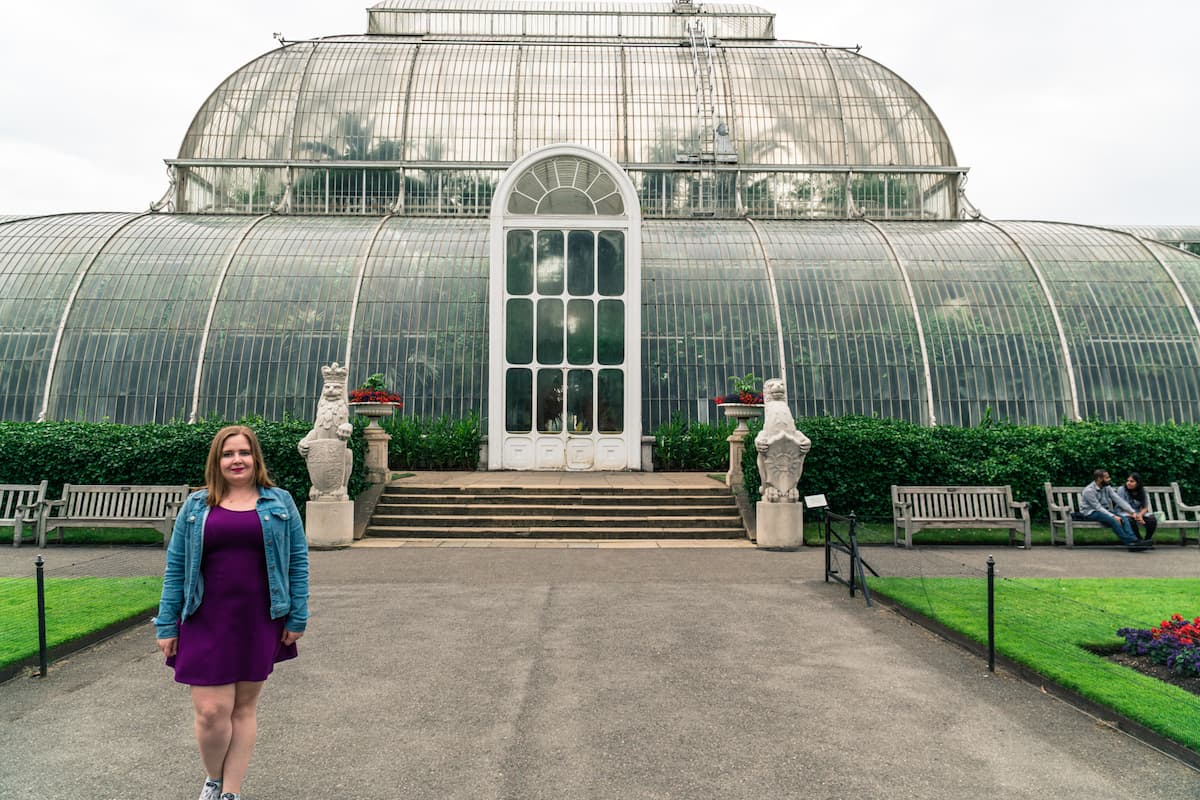
There’s more than just plants though. This garden is a globally renowned scientific institution for fungal and plant research, with Victorian glasshouses and artwork to see as well.
This guide will cover all the top attractions within Kew Gardens, as well as what to budget and the best times to visit. Always check their website before you go though because they temporarily shut exhibits down at random times, they always have new displays that might not be listed here, as well as pop-up events and festivals to enjoy.
Kew Gardens Top Attractions
Bamboo garden and minka house.
Bamboos are the fastest growing woody plants in the world and create dense landscapes wherever they grow. The Bamboo Garden at Kew has 130 bamboo species from China, Japan, the Himalaya and Americas, being one of the largest collections in the UK. They’re arranged by appearance to maximise the variety of form and leaf shapes. As you wander around, you’ll come across the Minka house. Meaning ‘houses of the people,’ these farmhouses are a treasured feature of Japanese heritage. The simple homes or ‘minka’ were common in Japan until the mid-20th century.
Treetop Walkway
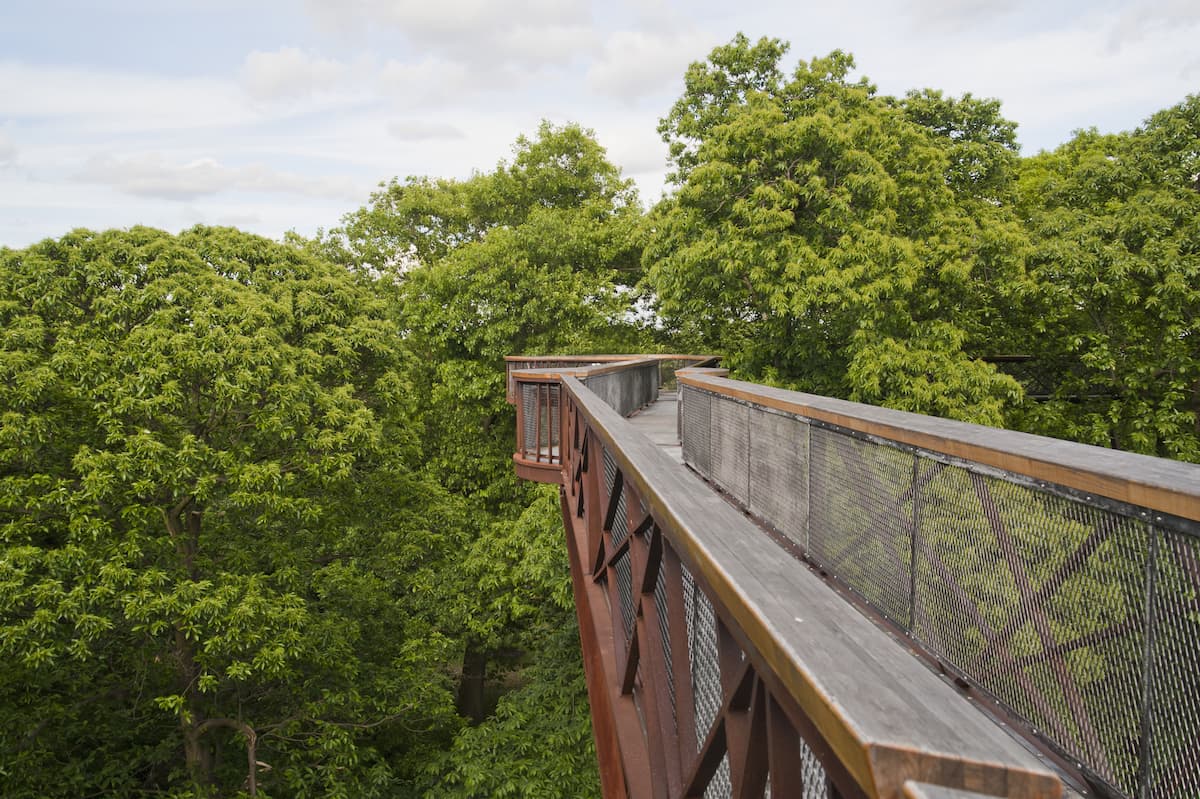
This is one of the things that you should definitely do at Kew Gardens is walk among the treetops. But if you’re like me and you’re slightly terrified of heights, it can be a little daunting. Just take a deep breath, enjoy the views and make sure you don’t look down.
The Treetop Walkway towers 18 metres above the ground and is a chance to observe the complex ecosystem of the trees’ uppermost branches, birds, insects, lichen and fungi. On the ground level, you’ll find sculptures carved from tree trunks and a path that leads below ground to the Rhizotron, which is an underground lab for studying the soil.
There are 118 steps up to the walkway in total.
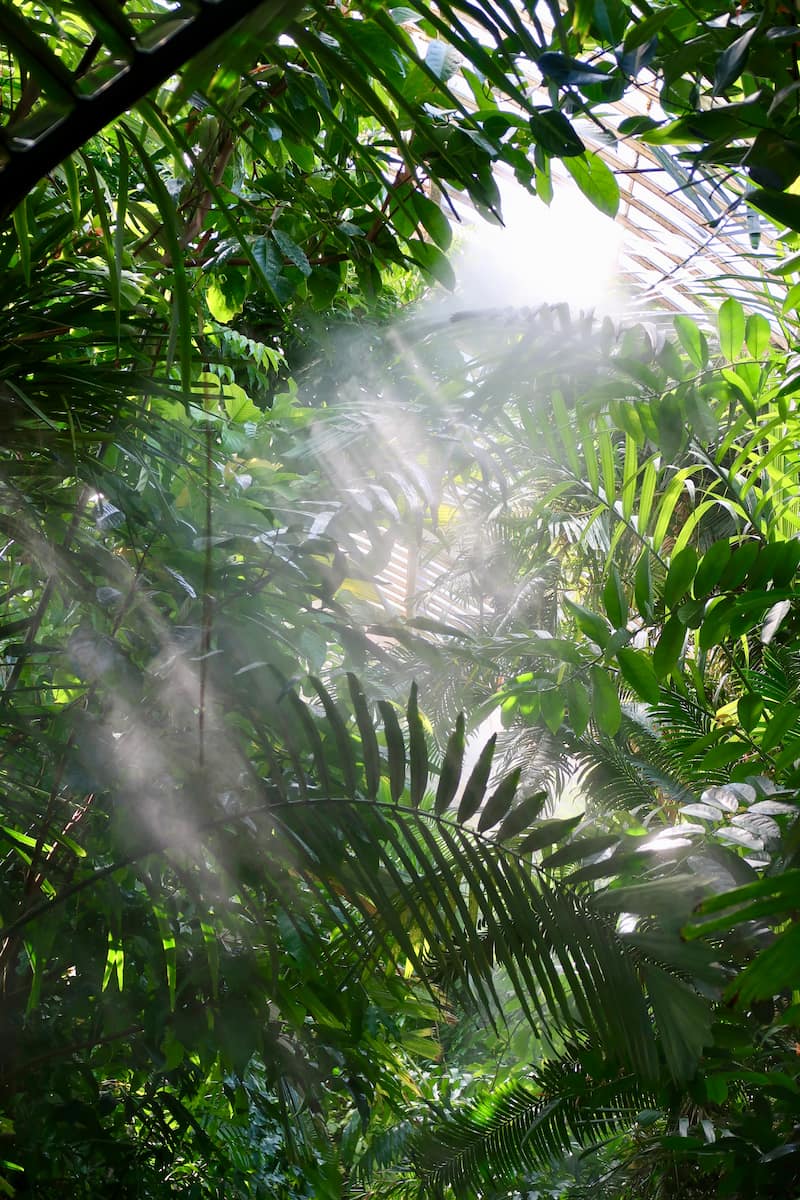
Palm House is where you’ll wander through the depths of the rainforest, where the air is heavy and dense. Discover treasures like the oldest pot plant in the world, along with the disease-fighting periwinkle. Lots of these plants are endangered or extinct. Rainforests are vital to sustaining life on earth, making up 50% of species. The Palm House is a living laboratory giving a chance to glimpse the magic of the rainforest.
The nearest entrance is Victoria Gate.
Great Broad Walk Borders
This is a feast for the senses! At 320 metres, these are possibly the longest herbaceous borders in the world. Arranged in colourful themes across eight large circular beds, you’ll be filled with fresh fragrances, feathery grasses, and dazzling flower beds that evolve with the seasons. Although they’re at their finest in summer, they’re still amazing in spring and autumn as well.
Japanese Landscape
This is the perfect place for quiet reflection, combining a Garden of Peace, Garden of Activity, Garden of Harmony and Japanese Landscape. You’ll find areas reminiscent of a traditional Japanese tea garden, stone lanterns, a dripping water basin, flowing water and stone and rock outcrops. The landscape was designed by Professor Fukuhara of Osaka University and has a near replica of the Gate of Nishi Hongan-ji (Western Temple of the Original Vow) in Kyoto, Japan.
Th nearest entrance is Lion Gate.
The Arboretum
There are 14,000 trees rooted in the Arboretum, with more than 2,000 species, including rare and ancient varieties. This is an opportunity to experience the diversity of forests around the globe, as it stretches across two-thirds of the Gardens. This incredible collection includes trees as old as the Gardens themselves, with many that you can’t find anywhere else in Britain.
The Marion North Gallery
This gallery has a vivid collection of 19th century botanical art, with more than 800 paintings covering the walls. Marion North solo travelled the world to record the tropical and exotic plants that she so loved and chose to paint the plants in their natural setting. Her vast collection is on permanent display at Kew and is exhibited in geographical order so you can follow in her footsteps.
The nearest entrance is Victoria Gate. The Gallery is located near the Temperate House and Pavilion restaurant.
The Davies Alpine House
Alpines are able to grow above the altitude at which trees can survive, making them some of the world’s most resilient plants. They’ve adapted to be able to endure severe conditions such as the Earth’s poles and Arctic mountaintops. Because they have a short growing season, the plants must flower and then set seed quickly. So, the flowers in this glasshouse are only displayed when they come into bloom, when you’ll see a range of bright purples, bold pinks, fragrant lavenders and many other unique species.
Mediterranean Garden and King William’s Temple
Get ready to be transported to the sun-kissed landscape of Southern Europe in this part of the Garden, depicting a typical Mediterranean natural habitat. Built in 1837 and standing in the centre of the Mediterranean Garden is King William’s Temple, in memory of William IV. The Tuscan porticos of the Temple, have iron plaques commemorating British military victories from 1760 to 1815.
The Hive towers 17 metres high and is an installation recreating life inside a beehive. It’s one of the most photographed spots in the Gardens and a magnificent piece of contemporary art. You can actually walk inside the enclosure and enter into the world of a real beehive, with music in the background responding to the activity. This is the place to explore the secret life of bees and celebrate their role in sustaining life!
The nearest entrance is Elizabeth Gate.
Princess of Wales Conservatory
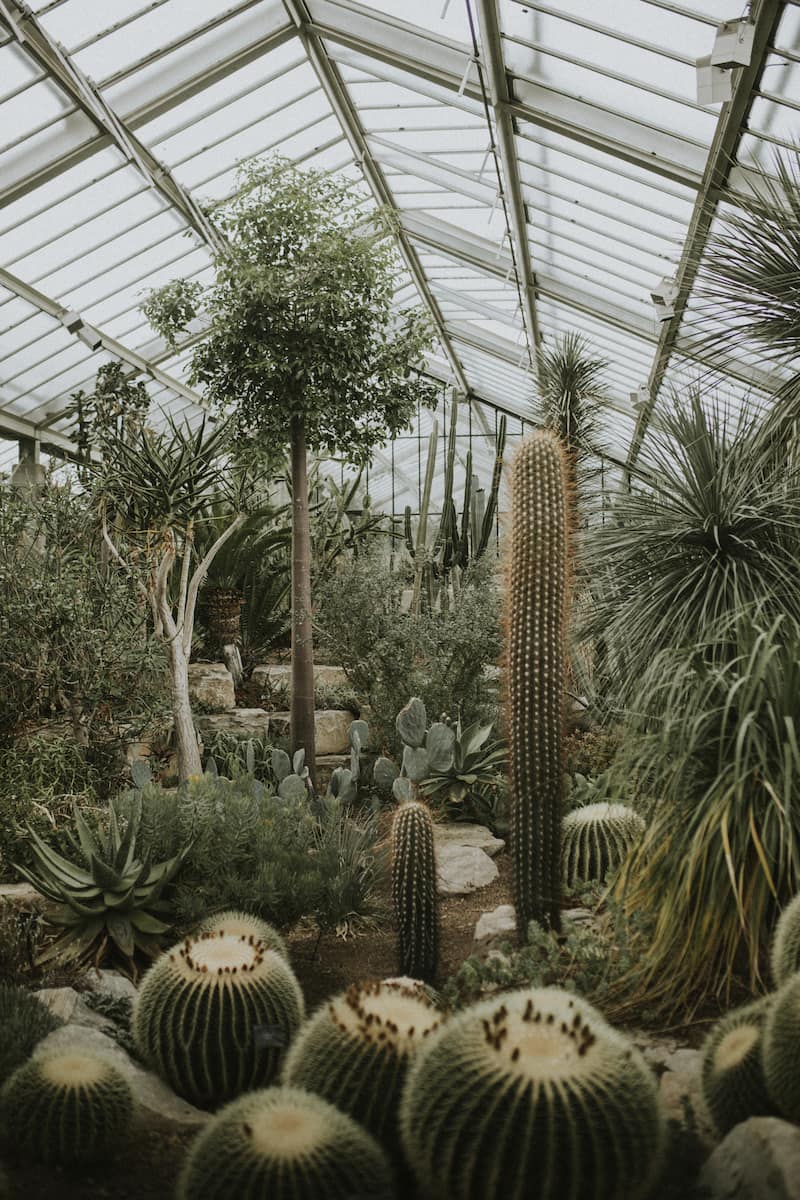
This Conservatory has ten computer-controlled climate zones and a series of fascinating ecosystems. Discover carnivorous plants, spiky cacti and succulents, and a celebrated giant waterlily, with a surprise around every corner of the winding glasshouse.
Elizabeth Gate is the nearest entrance.
Library and Archives
The Library and Archives collection at Kew spans 2,000 years, with classification and uses of plants, ecology, conservation and naming. This is for the garden lover, researcher or avid reader, with plenty of resources on botanic gardens and herbaria worldwide. The oldest collection dates back to the 1370s, with copies of ancient works of botany taking you back even further in time.
The Main Library is located in the Herbarium building off Kew Green to the right of Elizabeth Gate.
Queen’s Garden
The Queen’s Garden has plants and architectural styles of the 17th century, designed to complement Kew Palace. Most of the plants in this garden are species grown in the 1600s or even earlier. In May and June, the displays in this garden are simply spectacular.
Rose Garden
The Rose Garden contains 170 different species of the rose, making it a floral feast for the eyes. Designed in 1848 by English landscape architect William Nesfield, it wasn’t actually planted with roses until the 1920s. The best time of day to see the Rose Garden at its best is early in the morning or early in the evening, when the scent linger between the beds.
Temperate House
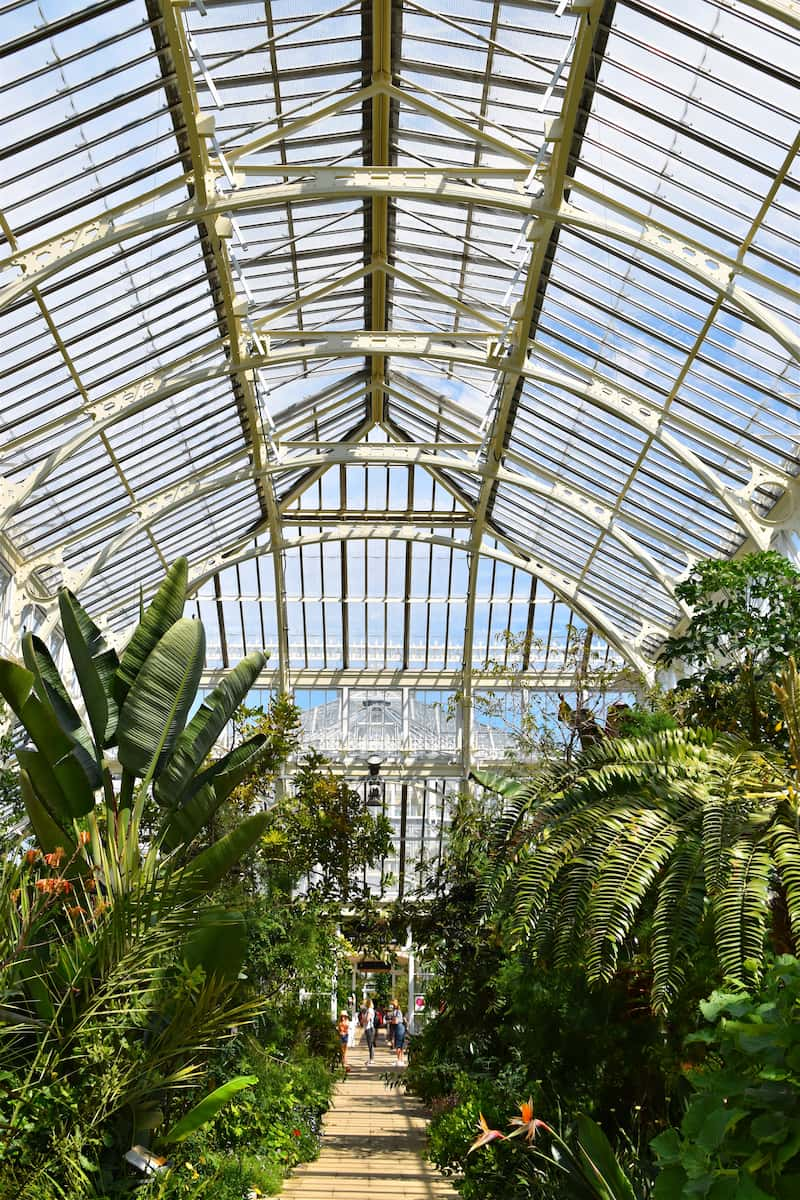
This incredible glittering cathedral is home to 1,500 species of plants. Travel the world with plants from Africa, Australia, America, Asia, New Zealand and the Pacific Islands. These are all temperate plants that need to live in conditions above 10 degrees to survive. The Temperate House tells us about how Kew is working to rescue these rare and already extinct plants.
The nearest entrance is Lion Gate.
Rock Garden
The Rock Garden display is framed by sandstone peaks and cascading waterfalls, mimicking life in the world’s mountainous regions. It’s over an acre in size, being constructed in 1882, making it one of the oldest and largest Rock Gardens in the world. The naturalistic display transports you to a rugged, wild landscape, with planting combinations designed to evoke the communities seen in nature.
Where to Eat and Grab a Coffee Within the Gardens

While spending the day at Kew, you’re sure to need a perk up with coffee and food. Here are your five options within the Gardens.
For indoor and outdoor dining, the Orangery even has pop-up stalls available. Warm yourself up with a toastie, burger or Lebanese Barbeque.
Pavilion Bar and Grill
Enjoy dining surrounded by vines with views of the Pagoda and Temperate House. This is the place for plant-based options, as well as burgers, seasonal salads and cake from the kitchen.
The Botanical Brasserie
Enjoy delicious breakfast, afternoon tea and lunch dishes and this hotspot.
Victoria Plaza Cafe
This is the place for the perfect picnic grub. Grab sausage rolls and barista coffee for eating in or for taking away.
Family Kitchen Shop
Craving some pizza? Add to that a salad bar and ice cream servery and you’re good to go! The Family Kitchen Shop is conveniently located right next to the Children’s Garden.
Best Times to Visit Kew Gardens
Kew Gardens has peak and off-peak times to visit, but it’s open year-round. Here’s what each season has to offer.
Naturally, signs of new life spring up all over the Gardens in the season of fresh beginnings. You’ll see swathes of yellow daffodils in various areas, while bluebell seekers should visit in April and May and head to the Natural Area for a carpet of blue. And while you’re at it, indulge the senses with cherry blossoms along Cherry Walk near the Temperate House and in the Japanese Landscape , on display between the end of March and the beginning of May.

Summer at Kew offers something bright and beautiful at every turn. The Rose Garden is the top spot to visit during the summer months, bursting with sweet fragrances and a sea of colours, from yellow and orange to pink and scarlet. The Waterlily House offers the striking waterlilies, while the Mediterranean Garden is a sunny landscape.
The trees steal the show in Autumn at Kew. This is the best time to visit the Treetop Walkway, overlooking the bronzed chestnut, beech and oak trees. The Japanese Landscape is another autumn hotspot, along with the Grass Garden and the picturesque autumn reflections in the Lake . Autumn is also the best time of year to see fungi .

There are many botanic gems to discover at Kew, even during the chilly months. Walking among the conifer collection, you’ll notice the bright winter berries mixed with cones and foliage. And the Holly Walk near the Temperate House has one of Europe’s biggest holly collections, adding in bright colourful dashes to the winter landscape. I’ve visited once during the Christmas lights display, which is incredible and I totally recommend seeing if you’re planning a visit around the holidays.
Ticket Prices and Discounts
Just to quickly cover tickets, the normal entry price to Kew Gardens is around £16, but it varies a bit with the time of year you go. You can also get a discount if you’re a student, family, or by using the Days Out Guide . For the Days Out Guide, you’l get a rail ticket, not an Oyster card, and it will give you a two for one voucher to enter. Purchasing tickets in advance is recommended.
For Kew Gardens opening times check the website as they change throughout the year. Also be sure and download the map of the Gardens before you go to help guide your way.
As you can see, Kew Gardens is definitely worth a visit! It had been on my London bucket list for ages and it was well-worth the wait. You’ll find something in every corner of Kew Gardens so keep your eyes open as you walk around. You don’t want to miss the colourful border paintings, majestic wooded areas, ornamental structures and garden art. Get ready for a multi-sensory sensation!

Kat Hi, I'm Kat, an Australian that moved to London in 2013 to start a new adventure. What a roller-coaster that was! I love helping others move to the UK and people explore the world ! I’d be honoured if you’d say, “Thanks!” with a £3 coffee on Ko-fi.

This site uses Akismet to reduce spam. Learn how your comment data is processed .

How to reach, timings, and tips to visit Kew Gardens London
Things to do in London London Attractions Landmarks in London Kew Gardens London
Fancy a treetop view encompassing birds, insects, fungi and lichen amidst the branches? Wonder how does it feel to be inside a real beehive? Well, the Kew Gardens offers you this and more botanical wonders inside. In 300 acres, the natural haven offers galleries of botanical art, glasshouses, various gardens, eateries and more.
Kew Gardens London
Located in the Kew district of the London Borough of Richmond upon Thames in southwest London, the Royal Botanic Gardens, is the largest UNESCO World Heritage site in London. Also known as Kew Gardens, it is also the largest botanical collection in the world.
Featuring 18th to 20th century landscaping techniques and elements, the Kew Gardens house the most diverse botanical and mycological collections in the world, representing nearly 95% of the vascular plants and 60% of the fungi.
The Kew Gardens is a leading conservation and scientific lab, and home to plant scientists who study more about plant diversity.
Kew Gardens - In a Nutshell
Kew gardens - things to know, kew gardens opening hours.
Weekdays: 10am - 7pm with the last entry at 6pm. Weekends: 10am - 8pm with the last entry at 7pm.
Must-see at Kew Gardens
Queen Charlotte's Cottage The Temperate Glasshouse Pagoda Xstrata Treetop Walkway
Kew Gardens Address
Royal Botanic Gardens, Kew Road, Richmond, London TW9 3AB, United Kingdom. Get there
Which Kew Gardens tickets should you buy?
Depending on whether you're a history lover, nature enthusiast or architecture admirer, your itinerary may vary. Hence it is important to plan ahead, skip the lines and book the best experience.
You may choose to book one of Headout's pre-planned tours , crafted combining the best experiences including the Kew Gardens in a package or book your Kew Garden tickets individually on the Headout app for just €11.

- Stop to smell the roses, away from the bustling city, at London's serene Kew Botanical Gardens.
- Wander through the wide stretches of lush green gardens and feel at peace.
- Featuring a host of conservatories, art galleries, and restaurants, there's plenty for you to engage yourself with.
- Discover the 120 hectares of gardens, the plethora of plants and trees from varying biomes.
- Explore the 2 upcoming exhibitions this year, the Secret World of Plants & Japan.
- All visitors to Kew Gardens aged 16 and over are requested to check-in using the NHS COVID-19 app upon arrival.
- Choose between standard and advanced booking options.
- The advanced option lets you book tickets up to 48 hours before your visit date.
Why visit Kew Gardens?
- With many galleries and natural retreats inside, Kew Gardens has a lot to vouch for.
- The rare and extinct species residing in the Kew Gardens are a wonder to look at and can exclusively only be found here. The Library inside contains 750,000 volumes and illustrations and is great way to learn about the plant families, their evolution and conservation.
- All the structures found inside have historical significance, and the tales behind them are fascinating. From chinoiserie to glass structures, the buildings are also architecturally diverse in nature.
- While he colourful blooms are a visual treat, the gardens can be the calm to the chaos of the outside world, and is a great way to connect back to nature.
In short, Kew gardens is the best bet if your looking for an educating and entertaining trip, in the cocoon of nature.
Plan your visit
Best time to visit the kew gardens.
Spring (April to May) is when the garden start showing signs of new blooms and starts displaying its eye-catching flora collections. Summer (June to August) is the time when the flowers and deciduous trees are in its best form.
Autumn , though not the best season to see the flowers, the crowds are lesser, and you get to experience the changing seasons. Even though the garden thrives inside the greenhouse, it is suggested to skip the visit in Winter .
It’s worth checking the website to find out what each season has to offer in detail.
Kew Gardens Opening hours
Kew Gardens open every day except for the 24th and 25th December .
On weekdays they are open from 10am - 7pm with last entry at 6pm.
On weekends they are open from 10am - 8pm with last entry at 7pm.
From 1 May to 30 September 2022, they do early openings for members at 8am.
The closing time may vary depending on seasons (due to the shorter days).
Getting to Kew gardens
- 65 (stops near to Lion, Elizabeth, and Victoria Gate)
- 110 (stops near to Kew Gardens station and Elizabeth Gate)
- 237 and 267 (stops at the Kew Bridge station)
By Tube Just a 15-minute walk away, the nearest station is Kew Gardens station (in Zone 3) which is located just 500m from the Victoria Gate.
By Train The closest station is the Kew Bridge Station, which is 800m from the Elizabeth Gate entrance.

All About Kew Garden Entrances
History behind the gardens.
Tracing its origins to the 18th century, the Kew Gardens were different estates belonging to the members of the Royal Family. It was Princess Augusta who created the first botanical garden with the assistance of Lord Bute and architect Sir William Chamber. King George III joined his estates of Richmond and Kew in the year 1802, and with the assistance of William Aiton and Sir Joseph Banks he started working on the landscape of the estates.
When the ownership of Kew Gardens was transferred from the Crown to the Government in the year 1840 due to negligence for years, it was renamed and taken in as the national botanical gardens and then expanded to start the Kew Gardens under its director William Hooker and its first curator John Smith.
Now the Kew Gardens are home to the Palm House which is ‘the world's most important Victorian glass and iron structure’, the Temperate House which is ‘the largest Victorian glasshouse’ in existence, and many more attractions created over the years.
The Kew Gardens were officially recognised among the World Heritage Sites in the year 2003.
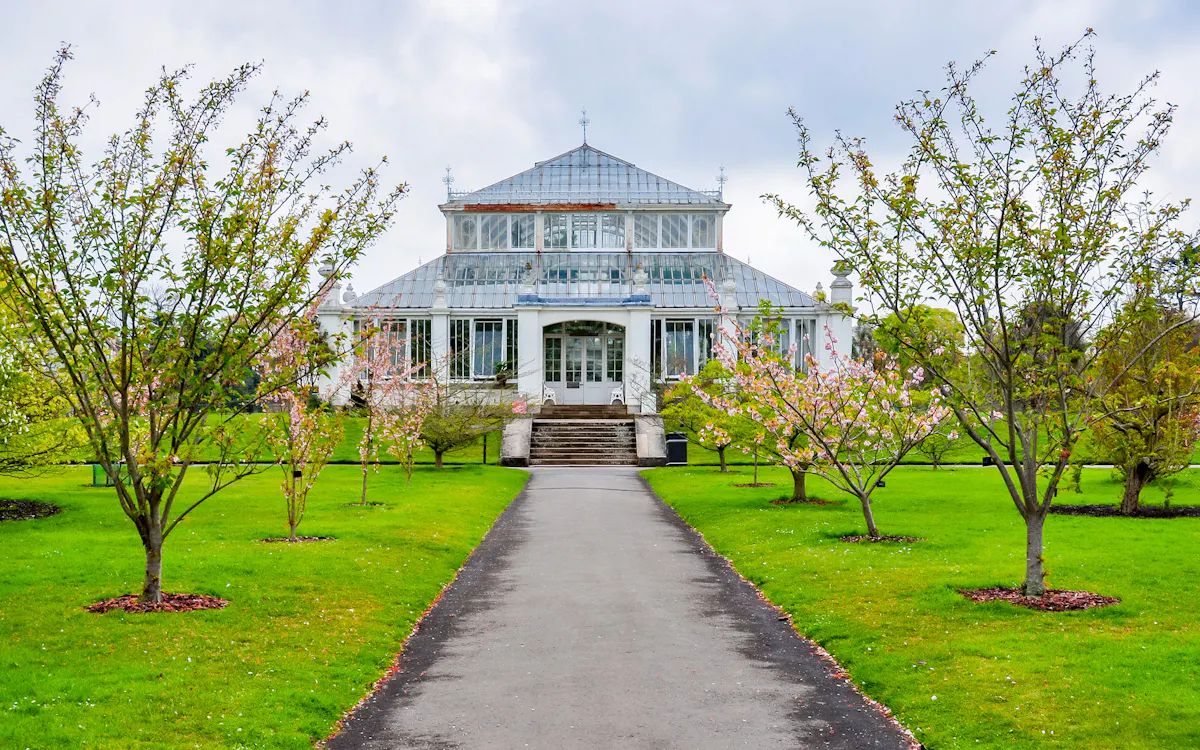
Top things to see at Kew Gardens
1 queen charlotte's cottage.
The 17th century cottage was a rustic retreat for the royal family to rest, drink tea or have picnics while visiting the gardens. The paddock adjacent to the cottage once housed many exotic animals including the first kangaroos to arrive in the country, now extinct quagga, a pair of black swans, and buffaloes. You can see the Queen’s own collection of Hogarth prints in the print room downstairs or view Princess Elizabeth’s, the Queen’s daughter’s floral and bamboo artwork in the tearoom.
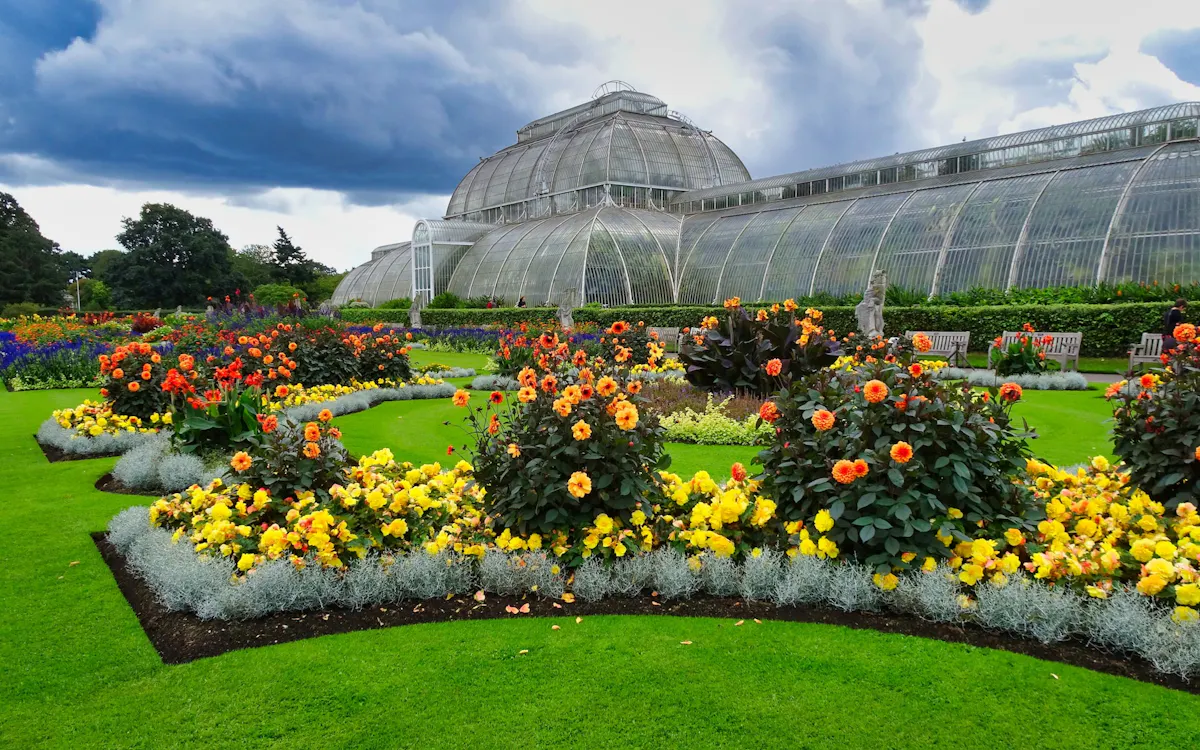
2 The Temperate Glasshouse
The glasshouse is home to the world’s rarest and most threatened temperate plants, including 6 species that are extinct and in the red list. The world’s largest surviving Victorian glasshouse covers a massive 4,880 square metres and its tallest peak is at 19 metres high.

With Chinese Chippendale railings and curved roofs, the chinoiserie building was entirely designed by the Swedish-Scottish architect Sir William Chambers. Built in the 18th century, it was a gift to Princess Augusta, who had employed him to construct many features in the garden. Offering the earliest and one of the best bird’s eye views of London, the Pagoda also holds exhibits on the building’s history.
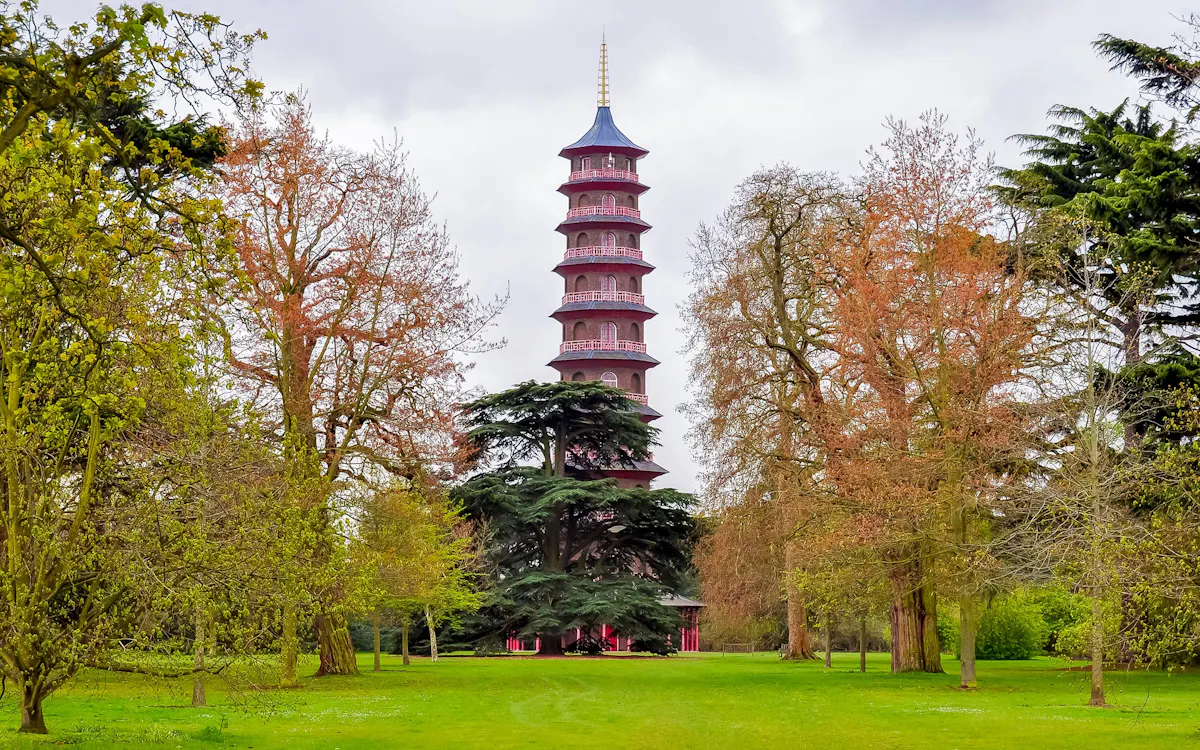
4 Xstrata Treetop Walkway
Offering a magnificent bird’s eye view of forest canopy, the walkway is one of Kew Garden’s most popular attractions, especially to those who love a kick of adrenaline. Standing 18 metres tall and 200 metres long, the walkway is designed to slightly sway in the wind to give a more immersive experience through the foliage.
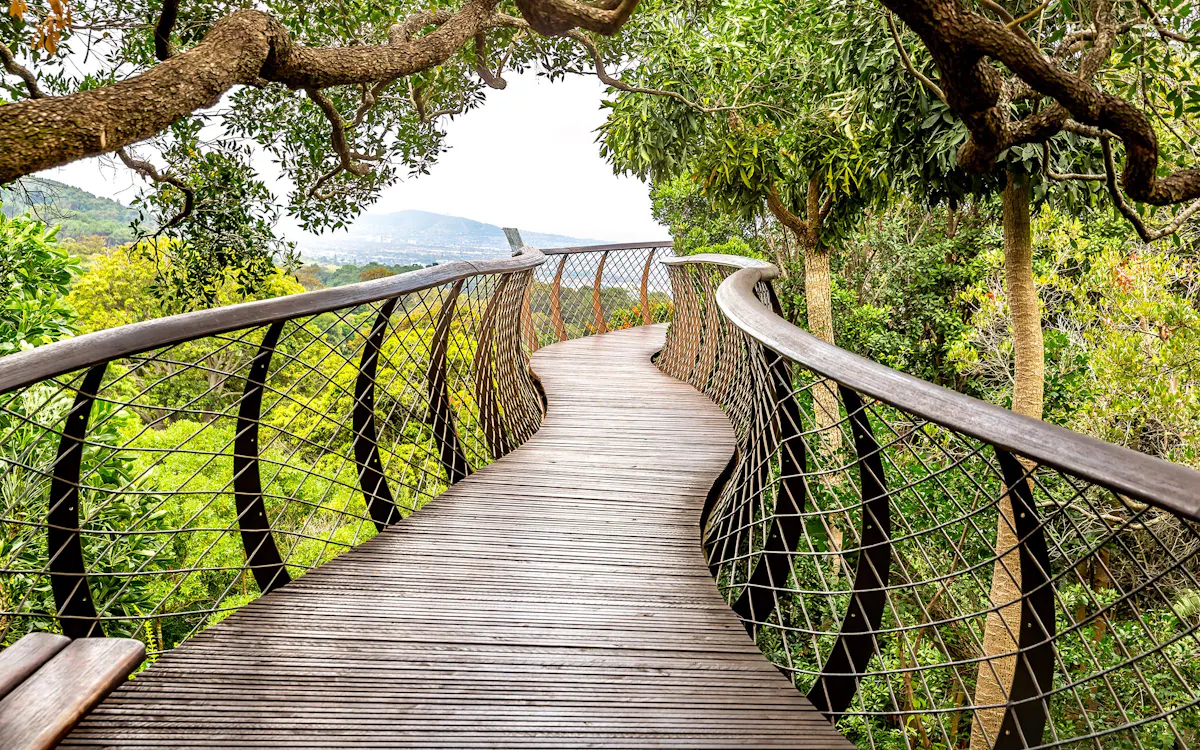
5 Palm House
Home to an exquisite collection of endangered and extinct plants including the cocoa tree or the African oil palm, you get to experience a slice of rainforest in the Palm House. Constructed in 1844, the greenhouse resembles an upturned hull of a ship as the architects borrowed ideas from the ship building industry to construct it. The humid environment inside creates the perfect environment for the lush plants and is home to the oldest pot plant in the world (more than 250 years).
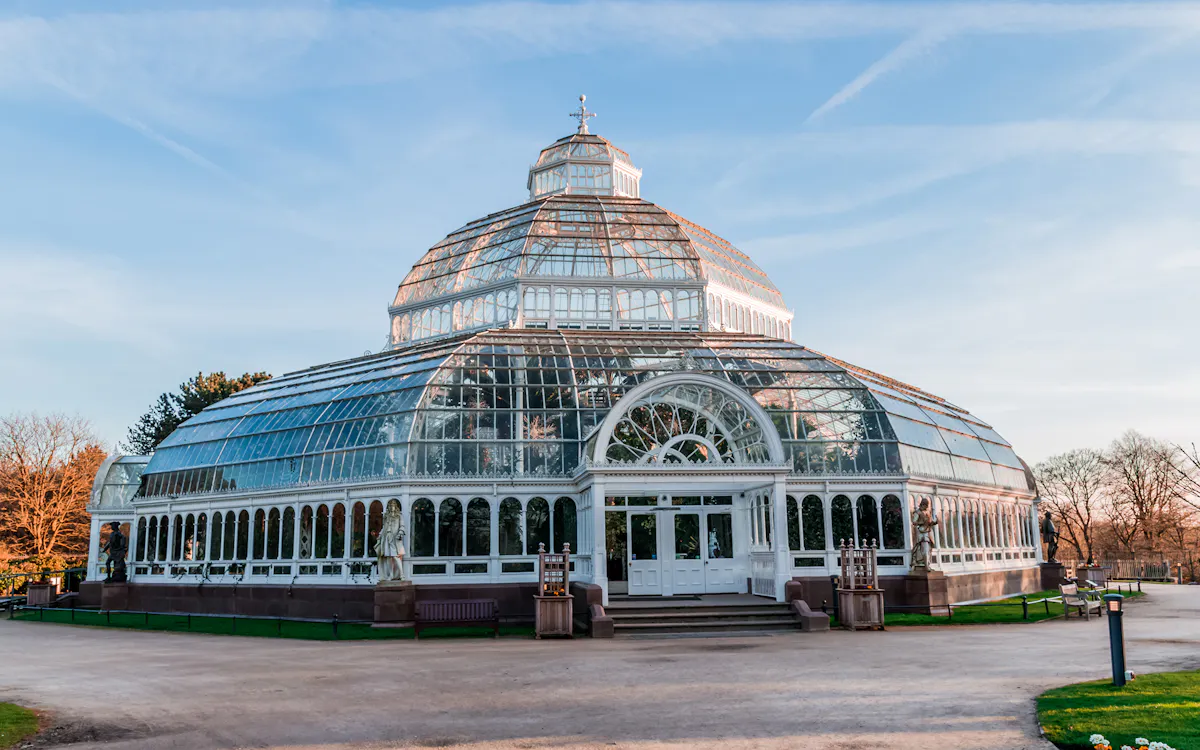
The mesmerising geometric installation, standing tall at a towering 17 metres tall, features an immersive visual and auditory experience recreating the life inside a beehive. With 1,000 LED lights that glow according to vibrations of bee and 170,000 aluminium parts, the structure mimics the real visual effects of an actual beehive in Kew Gardens. A calming and serenading symphony of vocals and cello, all in the key of C is played to create a soundscape inspired by the hum of the bees (Scientists discovered bees buzz in the key of C).
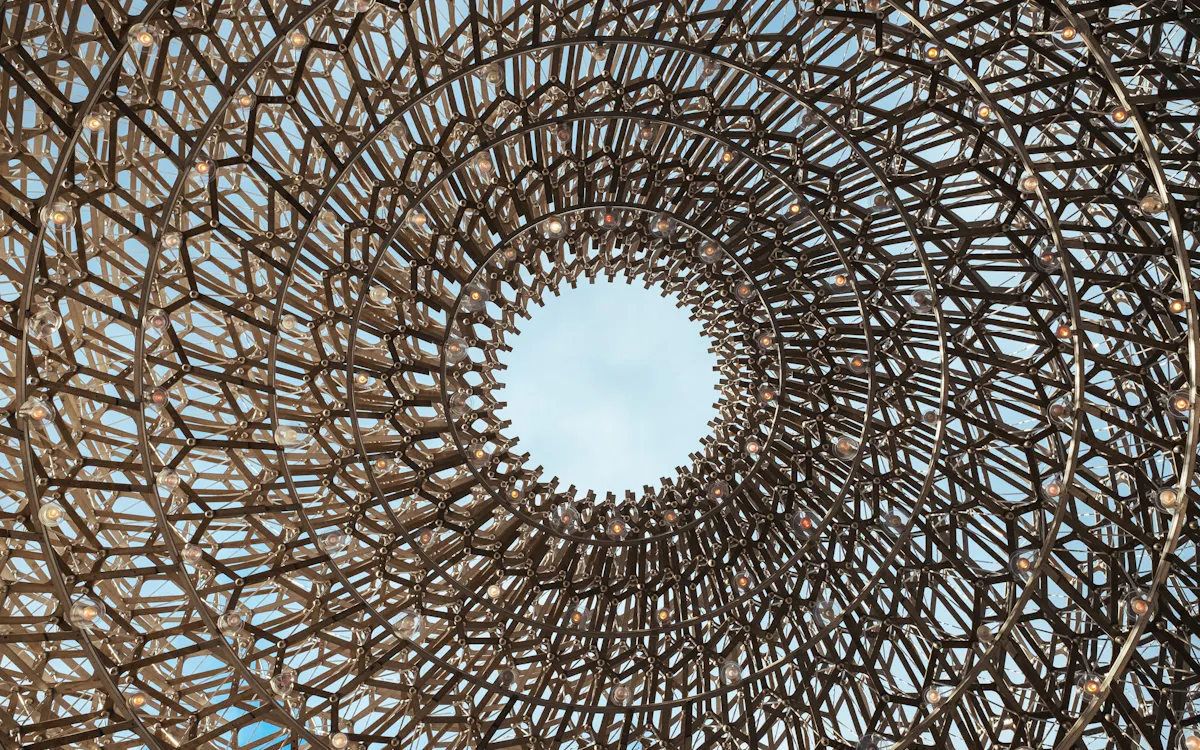
7 Kew Palace
Known as the smallest palace in the whole country, it was originally built in 1631 for Samuel Fortrey a silk merchant. The Dutch house is one of the few surviving structures in the Kew Palace complex, along with the former brewhouse, housekeeper's cottage, and kitchen. Except for the kitchen, all the structures are open for public. In the 1720s, George II and Queen Caroline lived there. Later the palace became a refuge for George III when he was experiencing mental illnesses and Queen Charlotte who was taken in ill and passed away in the palace. Reflecting the intimate life of the royal families, the palace is a tale in itself.

8 Waterlily House
Featuring a circular pond spanning over 10 meters, the Waterlily house is the most iconic and second oldest of Kew Garden’s glasshouses. This glasshouse was specifically made to breed the giant Amazon waterlily (Victoria amazonica). The pond is also home to the Santa Cruz waterlilies (Victoria cruziana) known for its floating large lily pads which can grow up to 2 meters in size. In summer, you will be able to spot lotus, papyrus and more.
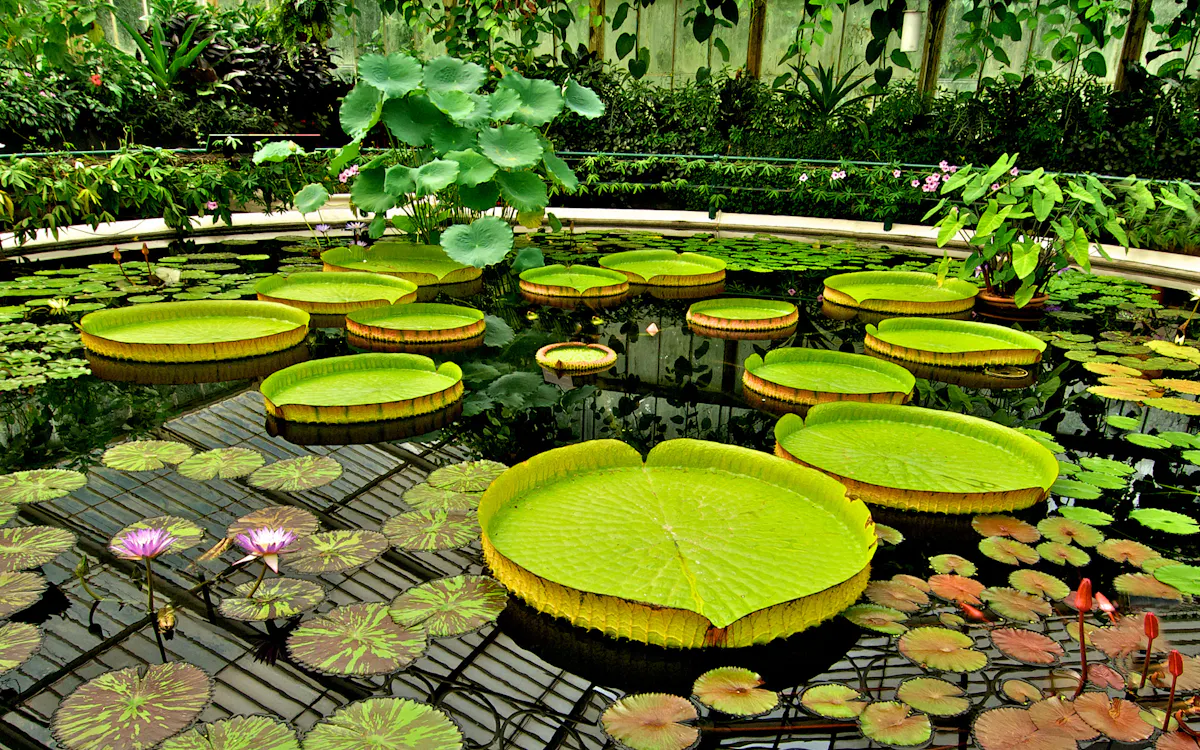
9 Davies Alpine House
Housing the Alpines, usually found in the mountaintops or the earth’s poles, these plants grow in extreme cold. The Davies Alpine House was designed to recreate these same extreme conditions, using two back-to-back arches to draw warm air out of the building. The glasshouse is known for its sustainable structure and energy efficient environment created using biomimicry techniques, inspired by the passive cooling found in termite mounds.
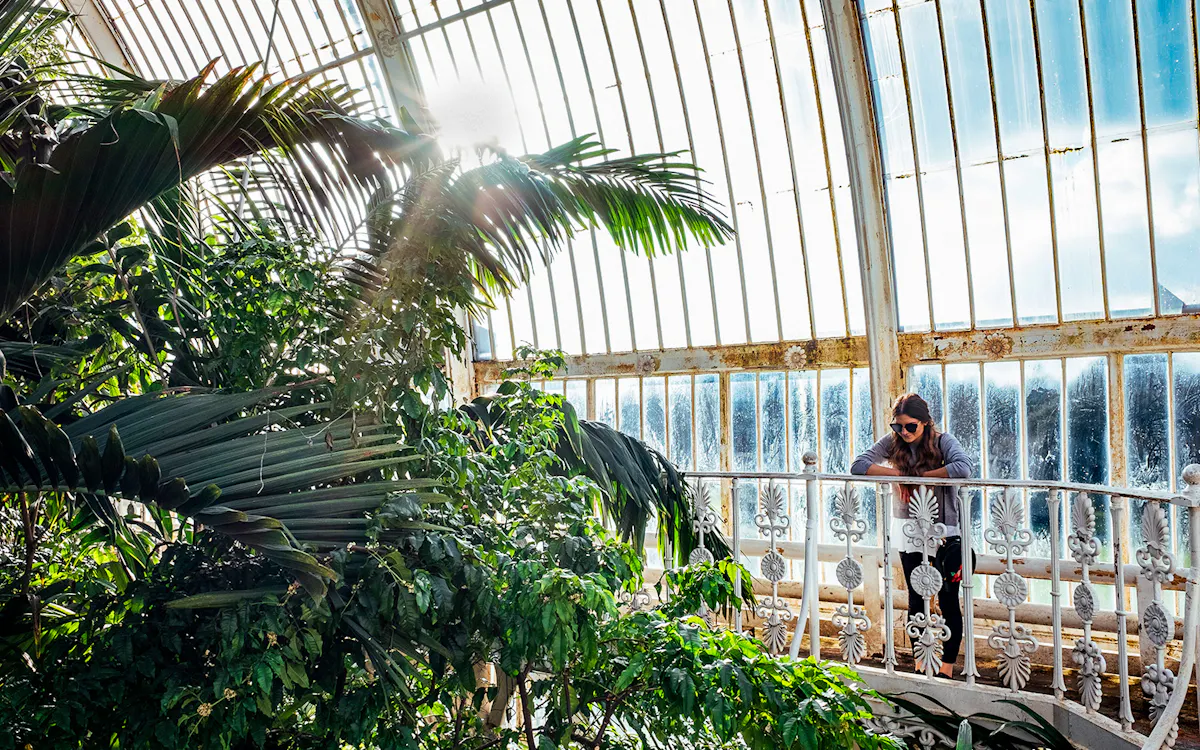
10 The Princess of Wales Conservatory
Opened in 1987 by Princess Diana, the conservatory boasts of 10 different climatic zones, taking you through a series of captivating ecosystems. Spanning over 4500 meters, the conservatory has recreated computer-controlled tropical rainforests to arid deserts in the glass structure. From Venus flytraps to bright bromeliads, the conservatory is home to all types of plant species.

Map of Kew Gardens
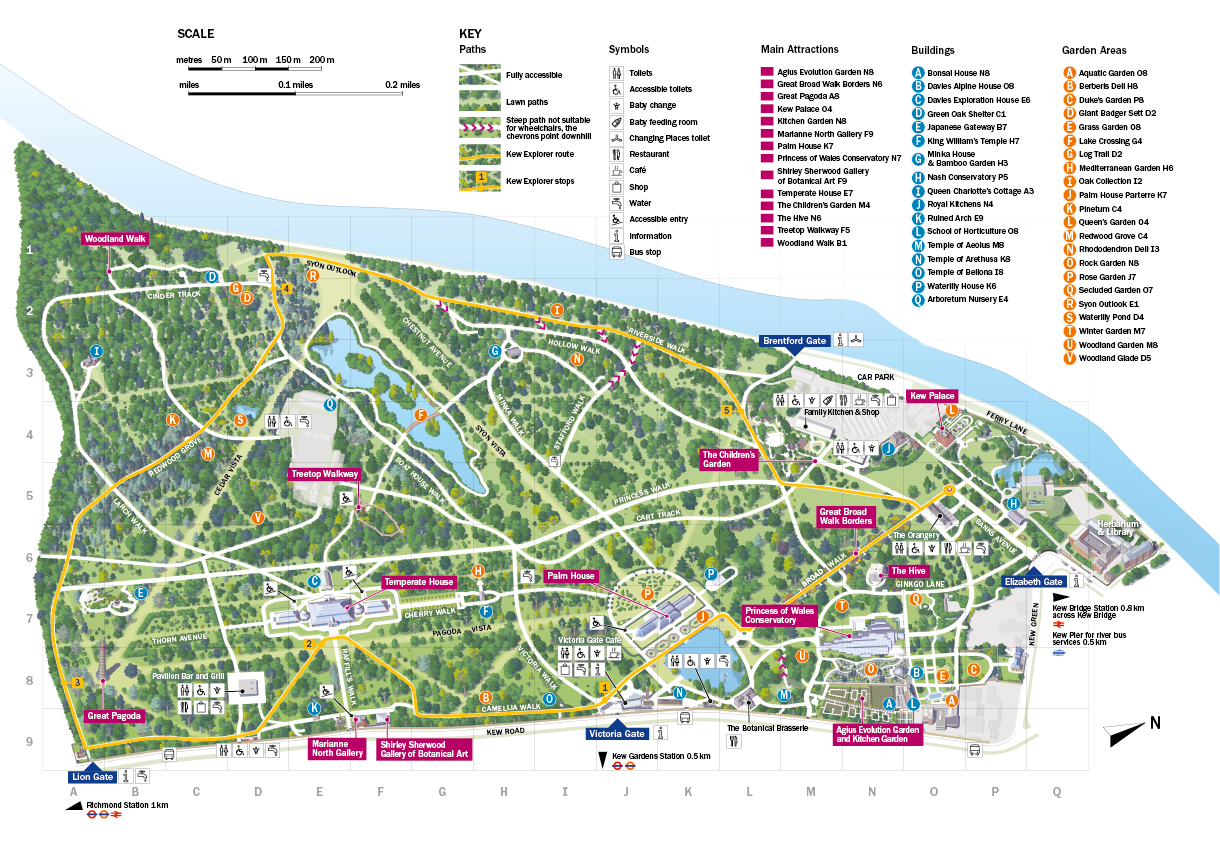
Facts you probably didn't know about Kew Gardens
- Kew Gardens contain a part of old London Bridge. The four granite blocks placed of the banks of the lake near the Sackler Crossing were once part of the 19th century bridge.
- The loneliest plant in the world, the Encephalartos woodii resides in the Kew Gardens. Found all alone in the Ngoya Forest in southern Africa by the botanist John Medley Wood, the tree was once munched by dinosaurs.
- The Kew Gardens are the most biodiverse place in the entire planet earth owing to its diverse collection of flora.
- Initially designed as a temporary exhibit for the UK Pavilion at the 2015 Milan Expo, the Hive found its final home in the Kew Gardens.
Best recommended tours to the Kew Gardens
Below are the tickets and tours to the Kew Gardens via the Headout app, for a seamless and stress-free booking experience.
Restaurants in Kew Gardens
Here are the top three places to eat at inside the Gardens.

Sporting the Charlie and the Chocolate Factory meets botanical lab looks, this restaurant is meant to make visitors feel as if they have shrunk into tiny creatures beside the fungi sculptures and giant apple seats. The whimsical restaurant offers stone baked pizza (customisable), salad bar, artisan sandwich station, ice cream booth and more. It is a fun place to hang out with kids and a definite visit for design junkies and sustainable interior enthusiasts.

Giving a sleek and modern feel, the steel frame along with the outdoor seating located amid the Arboretum, a unique landscape of 14,000 trees gives a calming picnic-in-the-trees vibe. The mid-range eatery features pork belly ribs, spatchcock chicken and vegan patties, all infused with the herbs from the Kew Garden itself. Though not cheap, they do offer a children’s menu and a family sharing platter. Find on Map >
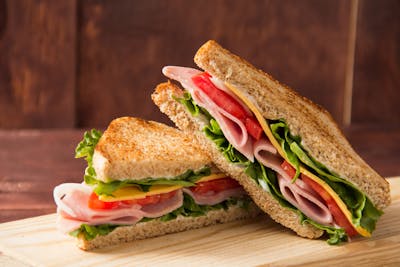
The 18th-century building is sure to captivate you with its high ceilings and arched windows, along with the view from the terrace. The restaurant offers pastries, selection of sandwiches, freshly squeezed juices and more. Built in 1761 by architect Sir William Chambers, the teahouse is perfect for the British afternoon tea experience.
Accessibility at Kew Gardens
- Kew Gardens are susceptible to overhead noise due to its proximity to the Heathrow Airport flight path. Those with sensory disorders, noise sensitivity, etc would be advised to carry earplugs or headphones to avoid disturbances.
- 8 disabled car parks are available near the Brentford Gate, and 2 to the right of the Elizabeth Gate.
- There are unisex accessible toilets in all the washrooms.
- Brentford and Victoria Gates offer mobility scooters for hire, but they should be booked in advance.
- Only the Temperate House and Alpine House are the glassdoors accessible via wheelchairs/mobility scooters.The Princess of Wales Conservatory is partially accessible to wheelchairs during the Orchids festival.
- Kew Palace is accessible for wheelchair users, however small wheelchairs are required due the narrow paths inside.
- Though most of Kew Garden’s landscape is accessible via ramps, the following areas are not accessible with buggies - Queen Charlotte's Cottage, The Waterlily House, Xstrata Treetop Walkway, Galleries in both the Temperate House and the Palm House, The Waterlily House, The Aquatic Display in the Palm House , Queen Charlotte's Cottage, Kew Palace.
Good to know before visiting Kew Gardens
- Unless accompanied by an adult, children under the age of 16 are not permitted inside.
- Only adults with children are allowed inside the Children’s Garden(with a valid ticket).
- Visitors with disability can get a concession ticket.
- Carers accompanying visitors with a disability, such as registered blind and partially-sighted visitors can get in for free.
- Guide or assistance dogs (including those in training) can enter. Though make sure to have a lead or harness to identify them.
Insider tips
- Wear airy clothing, preferably a removable jacket as it can get really warm in the greenhouse.
- Wear comfortable footwear, as the walks around can be long.
- Do not forget to carry a good quality phone camera or your camera equipment with an empty memory card or those with lots of space to click enough pictures, and you do not want to miss on it.
- Do not hold yourselves back from spending the whole day there, in fact it is highly recommended.
- Though there are enough eateries around, don’t skip carrying snacks for your toddlers (and yourself) to munch on as the long walk inside may be tiring after a while (Food and drinks should not be taken inside the galleries).
- Some of the best picnic spots inside the Kew Gardens are - Next to the River Thames (marked as a viewpoint on the map), near the Waterlily Pond and in front of Queen Charlotte's Cottage.
Amal Karadi
Amal has always been fascinated by people, culture, and languages. She hopes to one day become a polyglot, and travel the world in order to learn as much as she can about different cultures along the way. Amal enjoys exploring museums and trying out new things.
Be a smart traveler
The first to know about trending destinations, travel deals, tips and all things travel.
- Tour Account ›
- Travel Forum ›
- Travel Forum
- Kew Gardens - Whe...
Kew Gardens - When to visit within May itinerary
I hope we'll see lots of spring flowers during our May 4-22 trip to England. We've yet to decide on our focus outside of the London area (will have some questions in another thread) but I do want to spend time at Kew Gardens. I also want to visit Richmond (I grew up in Richmond, BC, Canada--and we're Ted Lasso fans). Haven't decided if we want to visit Hampton Court this trip or perhaps with our history-thrilled daughter during a potential fall trip. What else is must see in that area?
I'm wondering about the difference in the display of flowers from when we arrive (May 5) to the latter part of our trip (May 18-21).
Should we visit Kew Gardens when we first arrive, or at the end? I just saw that the Chelsea Flower Show begins the day before we leave, so I'm wondering if local gardens will be more crowded with visitors in town for the big show.
It seems a stop in Kew/Richmond area might be a good way to settle in to the new time zone after arriving, but we arrive on a bank holiday. Would Kew be really busy on Monday, May 6?
Our other destinations may ultimately affect the placement of our Kew visit, but I'm especially curious about the blooms.
It seems to me that I read somewhere that 'members' can visit 2 hours earlier in the morning. If so, does it make sense to get a membership (so essentially about a 40 pound donation plus entrance) in order to visit early and with fewer people?
If we went at the beginning of our trip, from Heathrow, would it be strange to take our luggage on a boat ride into London after a night in Richmond/Kew area?
Thanks, Cheryl
CamAmCherie, I'm planning to visit Kew Gardens in March when I'm there, and posted a few questions here. I got some really wonderful responses about logistics but also about things to see and do and how to get to Richmond from Kew and so on. Here's a link to the thread:
https://community.ricksteves.com/travel-forum/england/please-check-logistics-of-day-trip-to-kew-gardens-and-richmond
Thanks, Mardee, I don't know why that didn't come up when I searched. I was sure that there'd been something recently---maybe it was much further down on my search and I didn't get to it.
I'll read through that, again. I'm guessing YOUR thread was one of the main reasons this was on my list----I should have just searched your posts but I hadn't thought of that.
The flowers in full bloom may vary over those dates.
We spent 3 weeks in London, from May 1 -24, a few years back, and went to Kew 3 times, one week apart. In part that was because we had different visitors staying with us, and they wanted to go. But also, it is too much to see in one visit, unless you spend the whole day there. And, things changed between the first and last visits. Most notably, the stunning display of azaleas and rhododendrons did not fully develop until mid May. But that can vary from year to year.
Ahhh. Just reread your thread, Mardee, thanks again for linking. It's all coming back, the Great Vine, the 'A Lady in London'...there was so much in your thread that got me excited last November.
Last night I was looking at accommodation in Richmond, so it was fun to reread your thread and recognize the hotels mentioned.
I was thinking it might be good to go directly from Heathrow (so glad to reread Rebecca's mention of the Blackberry Cars), visit Richmond that day (Sunday) to walk off the flight, visit Kew the next day, and maybe even spend some more time in the area on the Tuesday before heading to London or wherever else we settle on. I'm sure I would be happy for a daylong Kew visit, but I'm guessing my husband may time out before. He can bring his Kindle 😉
Richmond would also be a good addition to a trip with our daughter and partner as we all watched Ted Lasso together before they moved to Seattle....
Choices, choices.
Thank you, Lola, I was wondering if we should keep 2 visits in mind. I don't know how many times we will be visiting in the spring, so I want to maximize views of gardens!
May weather can be variable - I have known snow and sleet, and I have known heat waves.
Flowers, other than the Great Broad Walk Borders, aren't really the thing at Kew as you walk around. Yes, there's a fabulous rose garden - probably not doing much at the beginning of May, perhaps a bit more towards the end with the big flourish in June, and plenty of all sorts of flowers in the various greenhouses and other buildings https://www.kew.org/kew-gardens/whats-in-the-gardens Depending on the weather the borders may be getting on well by mid May.
Kew is about the specialist collections, ever so well displayed,of all sorts of plants, from towering redwoods to tiny alpines.
The place is vast so best to set a plan and visit a few areas each trip. Consult the map and try to tie parts together logically. https://www.kew.org/kew-gardens/visit-kew-gardens/map
I have never approached Kew or Hampton Court by boat so cannot speak to the experience, nor how strange they would find luggage.
I'm sure I would be happy for a daylong Kew visit, but I'm guessing my husband may time out before.
Ha ha, just park him in a cafe while you stroll around. And I agree with Nigel about the flowers. It would be lovely to see them, but I think there will be a lot to see in mid-March and even more when you're there! BTW, Kew does open early for members after May 1. https://kewtw9.org/kew-gardens-early-opening-for-members/
Re: baggage; not sure about the boat but you could always email them at [email protected] and ask. And there is no place to stash luggage at Kew; however, there are some Stasher locations nearby .
FWIW, I love Hampton Court Palace, and I plan on going this trip, but will also be bringing my 2 grandkids here next year for them to enjoy. I think any history loving young person would love it!
Thanks, Nigel and Mardee. It will be hard to decide where to place our focus.
For me I would always choose Hampton Court over Kew. It’s a place with so much history and therefore extremely interesting if you like that kind of thing. Kew is nice but I’m not really interested in plants and gardening, it’s very flat and doesn’t have the sweeping vistas of the grand country house gardens. It’s more like a museum of plants. I’m sure others will disagree!
a thought about flowers and Kew and Hampton Court Palace
Hampton Court is so much more than the buildings - although they are incredible. If you walk towards the Tiltyard before the main entrance (but still ticketed) you get to the Rose Garden and then the Kitchen Garden, both special.
After walking through the most direct route through the palace you come out into the Great Borders - hundreds of metres of formal borders. By mid-May they should be on full strength. Then follow the building around clockwise and there is garden after garden, and all are different and all will be trying their best by then too.
What I am trying to say is, if you want flowers and flower gardens you won't go far wrong at Hampton Court Palace.
If you want magnificent plant specimens and fabulous trees and shrubs and unique items and love trees (and Chinese Pagodas and tree walks and Badger setts for humans and a Royal Palace for days gone by, Kew has it all.
You can't go wrong with either but they are significantly different.
I love - and belong to - both.
ps. Food's better at Hampton Court IMHO
I think Helen's on the money with "museum of flowers". One of my first jobs many years ago was scanning Kew's archive of photos on slides. They have a lot of real global rarities and still do some good work in conservation I believe.
Thanks, also, Helen, Nigel and Gerry. I am excited to see Hampton Court, too.
We went to Kew by boat from Westminster Pier-an absolute must-do. It was much more enjoyable than the narrated Thames tour. We took the Tube back to London after our visit to Kew.
Thanks, Cala Is there only one boat company from Westminster Pier? Or, which did you use? I wonder if the trip from London is better viewing than the return trip to London? We're still trying to decide if we use our reservations in Richmond for our first 2 nights after landing or squeeze both Richmond and Kew into 1 day trip from London.
Hi Cheryl, We bought Kew memberships prior to our 2022 visit. The getting in early option was attractive to us as photographers. Note that the associated free Kew magazine that comes with memberships is world-class. It comes bi-monthly and there was never a duff issue nor a single duff page! Fantastic quality mag.
One could combine a Kew visit with a lazy walk along the Thames Towpath. Richmond is an absolute must on several levels. If you are into flowers then the Isabella Plantation section of Richmond's park will be worth your time.
Btw, we thereafter wrote a looooooooong trip report-cum photo essay titled 'Back to Brick: a London TR.' Over on Fodors, I go by 'zebec'. One could simply Google 'zebec Fodors Back to Brick'. Lots of floral imagery (Kew plus otherwise), music, humour and plenty more. cheers I am done. The end.
Thanks, gregglamarsh, for all that information. I'm looking forward to looking at your report.
Please do not reply to violations of our Community Guidelines .

About Essential Information
If you are a nature lover and are in London, then the world’s biggest and most varied collection of plants awaits you at the Kew Gardens . Located in southwest London, is the city’s largest UNESCO World Heritage Site and one of London’s most popular tourist hotspots. This world of science, which dates back to 1840, is home to more than 50,000 living plants brought in from all over the world. What's inside the Kew Gardens is the unique herbarium, which has millions of preserved fungal and plant specimens and is among the world’s largest collections. Visitors also get to explore the Kew Gardens library, which has more than 750,000 volumes, and over 175,000 prints and plant drawings.
Witness nature at its finest at the Princess of Wales Conservatory, which brings together ten of the world’s climatic zones. While the 59-foot-high Treetop Walkway offers bewitching views of the Gardens, the numerous glasshouses and zones are home to exotic plants and flowers that bloom all year long. Take a stroll as you witness more than 60,000 plants at the Great Broad Walk Borders and breathe in the enchanting scents of thousands of beautiful flowers.
There’s even a bit of the past living in the medieval-era Kew Palace and Palace Kitchens for the history enthusiasts. And if you need a break, head to the Orangery, Victoria Plaza Cafe, Pavilion Bar and Grill or other food outlets that promise a mesmerising dining experience for you and your loved ones. When you are done with your exploration, you can also shop for special Kew products like gardening equipment and natural beauty products that are unique to the Gardens at the numerous shops of Kew.
Know Before You Go To Kew Gardens
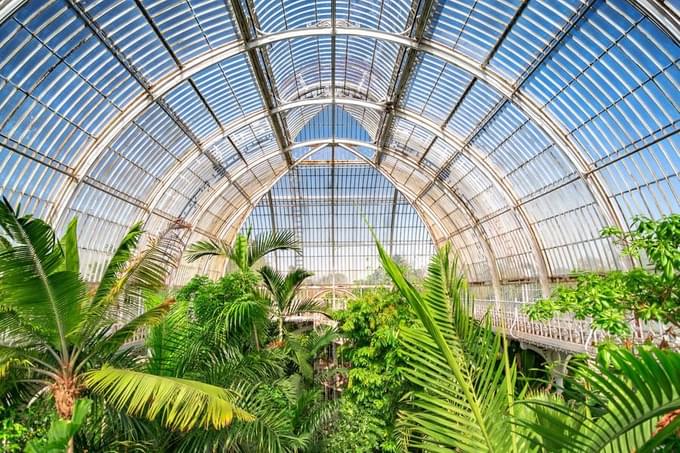
- Location : Kew Gardens is located in Kew, Richmond, London, TW9 3AE.
- Timings : Kew Gardens' timings are from 10 AM to 7 PM on weekdays, with the last entry at 6 PM. On weekends and bank holidays,Kew Gardens' timings are from 10 AM to 8 PM, with the last entry at 7 PM.
- Best time to visit : After you book the Kew Garden tickets , it is best to visit Kew Gardens London is in the early morning hours. You would encounter fewer crowds and will get ample time to explore all the attractions on the premises. The plants are also in full bloom during these hours, which lets you witness them at their best.
Must Checkout: London IFS Cloud Cable Car
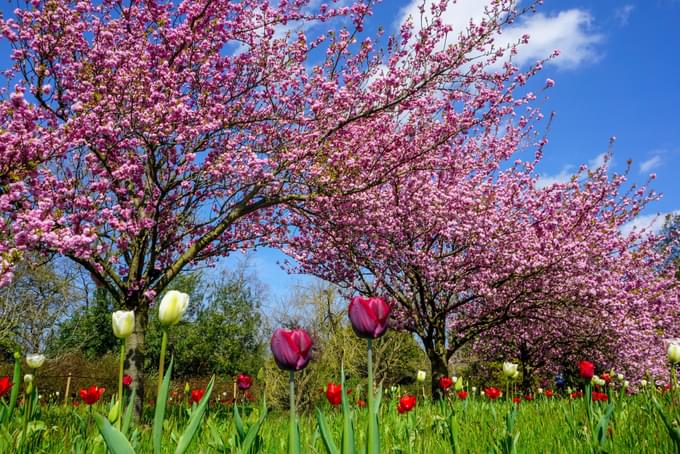
Here are the ways to reach Safari World Bangkok
- By Bike : If you want to know how to get to Kew Gardens by bike, then there are bicycle racks at the four gates of the Gardens. However, bicycles, tricycles, roller skates, skateboards, and scooters are not allowed inside the Gardens.
- By Bus: Curious about how to get to Kew Gardens by bus? No worries, there are a few bus routes that stop at the Gardens’ various gates. Route 65 stops near Lion Gate, Victoria Gate, and Elizabeth Gate. While Route 110 stops close to Kew Gardens station and Elizabeth Gate, Routes 237 and 267 stop at Kew Bridge station.
- By Tube : If the tube is your preferred mode of transport, here is how to get to Kew Gardens by it. Take the District Line or the London Overground, and hop off at the Kew Gardens station. The station is located 500 metres from Victoria Gate of Kew Gardens.
- By Car : Turn on the GPS and it will tell you precise directions on how to get to Kew Gardens by car from your location. Also, note that parking at the Gardens is minimal and is available for those who ask for it first. Parking is available at Kew Gardens Car Park, Kew Green, and Richmond Athletic Grounds. Disabled access parking bays and drop-off area is at Elizabeth Gate.
- By Boat : Visitors who wish to learn about how to get to Kew Gardens by boat can hop on the Thames River Boats that provide special services from Westminster Pier to Kew Pier. Sailing times from Westminster to Kew are from 11 AM and 2:30 PM, while those from Kew to Westminster are from 12:30 PM, 3:30 PM, and 5 PM.
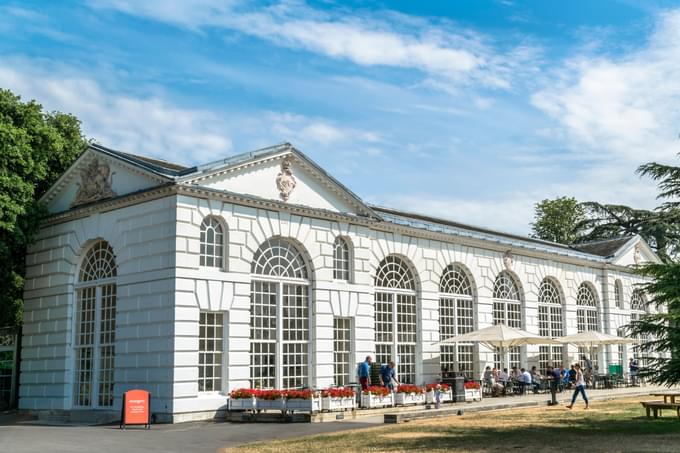
- Toilets : Unisex toilets have been provided within easy reach of all major Kew Gardens attractions. They can be found in Victoria Plaza, The Pond, Ruined Arch, Stable Yard, Kew Palace, Brentford Gate, White Peaks Café, Pavilion Bar and Grill, The Orangery, and the Botanical. The toilets are disabled-friendly and are attended to regularly. There are baby-changing facilities at all toilets except Stable Yard, while microwaves for warming milk bottles have been arranged for at White Peaks Café and The Orangery. There is also a special adult-changing facility at Brentford Gate.
- Wheelchairs : Kew Gardens is an accessible space for specially-challenged visitors. A limited number of wheelchairs are available when asked for on arrival at the entry gates for you and your essential caregiver. You would need to book in advance to avail yourself of mobility scooters, which are available at Victoria and Brentford Gates. If you have a pavement-use mobility scooter limited to 4 mph, you are welcome to bring it along.
- Shopping : Purchase a variety of Kew Gardens-inspired items after your memorable visit to the botanical paradise. The Family Kitchen and Shop is a brand-new space selling planting kits, toys, and books for curious children, while the Galleries Gift Shop at Shirley Sherwood Gallery has prints, gifts, and books inspired by Kew’s art collections. The Pavilion Shop and the Victoria Plaza Shop are perfect destinations for shopping for souvenirs like gift items, books, outdoor items, and lip-smacking food products. You can also shop from the Kew Online Shop and buy fantastic home décor, gardening gifts, and stationery.
- Restaurants and Cafes : When you need a break from exploring Kew Gardens, head to the numerous restaurants and cafes offering mouth-watering delicacies. The Family Kitchen and Shop, near Children’s Garden, has stone-baked pizza, salad bar, and ice cream servery and is perfect for family day-outs. The Orangery serves toasties, burgers, and even Lebanese Barbeque on its terrace, while Pavilion Bar and Grill offers iconic al fresco dining with views of the Temperate House and the Pagoda. Enjoy quick breaks at The Botanical Brasserie and the Victoria Plaza Café with their afternoon tea and barista coffee with snacks. All eateries have level access, and picnics are allowed throughout the Kew Gardens premises.
Also Explore: Activities at Kew Gardens in Autumn
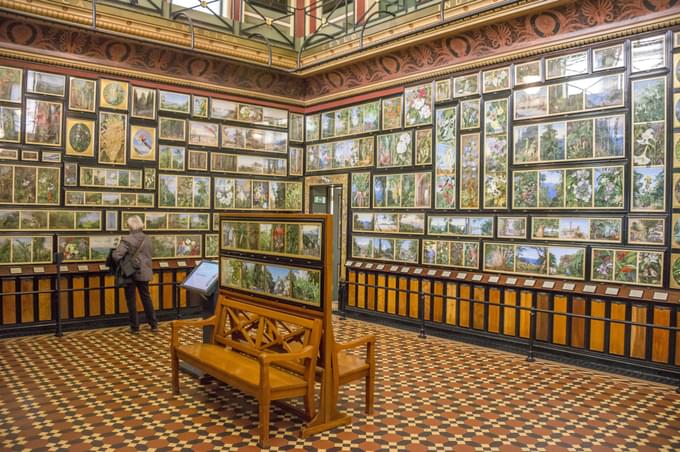
Explore the Kew Gardens Attractions
- Glasshouses : Of the numerous glasshouses at Kew Gardens, the Temperate House and the Alpine House are accessible by wheelchairs and mobility scooters. The other glasshouses are, however, unfortunately inaccessible. Also, during the Orchids Festival, the Princess of Wales Conservatory is partially accessible for wheelchairs.
- Galleries : Among the galleries of Kew Gardens, the Shirley Sherwood Gallery of Botanical Art is fully accessible by wheelchairs and also has a ramp at the entrance of the gallery. Another gallery with accessibility is the Marianne North Gallery, which can be accessed by a platform lift close to the Temperate House entrance. Marianne North can also accommodate larger electric wheelchairs as compared to Shirley Sherwood Gallery. These galleries are, however, not accessible for mobility scooters, and if needed, visitors can be provided with wheelchairs to use on arrival.
- Historic Buildings : The historic Kew Palace is accessible for wheelchairs and offers assisted wheelchair access and an accessible lift. The narrow corridors and doorways of the historical structure permit only small wheelchairs, with mobility scooters not allowed in either Kew Palace or the Royal Kitchens. Recognized guide, service, and assistance dogs, even assistance dogs in training, are allowed in the Kew Palace and Royal Kitchens. The Palace also offers two wheelchairs for those who need them to visit the historical premises.
Book Kew Gardens Tickets
Kew garden tickets, london, how long should one spend inside kew gardens.
To fully explore the vast Kew Gardens, one would require a minimum of three hours. The premises of the Gardens are huge and visitors need to walk a lot to visit all the attractions in store here. It is highly recommended that you explore all there is on offer at the Kew Gardens, and be warned, as you might even end up spending an entire day here
What is the best time to visit Kew Gardens?
The best time to visit Kew Gardens London is in the early morning hours. You would encounter fewer crowds and will get ample time to explore all the attractions on the premises. You would also get to experience the plants during their best hours in the daylight. It is recommended that you visit during the spring and summer months from March to October when the flowers are in full bloom.
Do Checkout: London To Stonehenge
Do we have to book in advance for Kew Gardens Tickets?
Kew Gardens London tickets can always be purchased at the walk-in ticket counters. However, it is highly recommended that you book your tickets in advance online to avoid the long queues. You will get the best value tickets online, and will also be able to book time slots as per your preference in advance
What is the minimum age required to book Kew Gardens Tickets?
Visitors of all age groups are welcome at Kew Gardens London. All those aged under sixteen need to be accompanied by adults at all times when inside the garden. Kew Gardens tickets are free of cost for children below the age of four. Those aged 16 to 24 get tickets at lower rates than older adults.
Are pets allowed inside Kew Gardens?
Registered disability assistance dogs are the only pet animals allowed inside the Kew Gardens . You would have to leave your pets at home while visiting Kew Gardens.
Inside Kew Gardens
About kew gardens, travel guide, attraction tickets, famous museums in london, cruises in london, famous theme parks in london, popular tours in london, historical places & museums in london, top experiences.

The content and images used on this site are copyright protected and copyrights vests with the respective owners.
© 2024 www.kewgardenstickets.com All rights reserved.
The Ultimate Guide to Visiting Kew Gardens
Kew gardens ultimate guide.
Don’t let the word “gardens” fool you, because Kew’s Royal Botanical Gardens are more than just collections of pretty flowers to snap photos of. As a matter of fact, the Kew Gardens are actually a living, breathing collection of some of the most stunning botanical art on the planet, and are a must-see for any visitor to London (whether you’re a nature fanatic or not).
With over 300 acres to explore, Kew Gardens is one of the biggest living plant collections in the world, and even contain the largest display of seasonal flowers in Britain. Not just limited to flowers, the Kew Gardens also contain historic glasshouses, rare specimen trees, serene woodlands, and even playground areas for children to play in.
The Kew Gardens were first created in 1759, and showcase some of the best gardening art from the 18th to 20th centuries. Not only has it become one of the most popular tourist attractions in London, it’s also an environment where plant scientists can study plant diversity and economic botany as well.
Kew Gardens Highlights
Kew Gardens are not simply a place to wind down after a free tour or day of sightseeing. These gardens pack a punch! From waterfalls, lilypads and crocuses (two million of them to be exact), to plant tunnels, treetop walkways and bamboo gardens, one could easily spend an entire afternoon walking around the many attractions in the Kew Gardens and still not see all there is to see.
In May, the Kew Gardens spring to life (literally) and the blooming of bluebells are especially popular among visitors; but it’s during the summer months when the Kew Gardens are perhaps at their most beautiful. During these months, visitors can breathe in the smell of aromatic plants (like lavender, thyme, rosemary, sage and oregano, just to name a few), and also see a collection of Mediterranean fruits and vegetables (including nine different types of aubergine!)
Out of all the different types of plants and flowers species located in the Kew Gardens, none are as famous or as popular as the 250-year-old Old Lions, which are the oldest trees at Kew Palace.
The Bamboo Gardens (located at the historic Japanese Minka House which dates back to the early 1900s) are another fan-favourite, as here you can see the largest collection of bamboos in the UK.
Past visitors also highly recommend a stroll along the Treetop Walkway, which provides visitors with a bird’s eye view of the Kew Gardens from 59 feet up in the air.
Special Tips
Getting There
Visiting kew gardens.
The majority of past visitors leave Kew Gardens wishing they had more time to explore its many acres, so try to reserve at least a full afternoon to spend at the gardens (or two hours minimum). You may be walking for hours on end, so make sure you wear comfortable walking shoes, and warm clothing during the winter months.
All of the important flowers, trees and plants throughout Kew Gardens have identification labels so you can read more information on them during your visit However, it still may be a good idea to get an official guidebook to read as you’re walking through the gardens; (you can pick up the official guidebook at the Kew Gardens’ entrance). Visitors are also given a map which highlights all the attractions throughout the gardens, and even child-friendly attractions to visit as well.
Be aware that there are four entrance gates to the Kew Gardens which may be confusing for first-time visitors:
- The Victoria Gate is the closest entrance to the Kew Gardens underground station, and is located relatively close to the Palm House and the Princess of Wales Conservatory. Free daily guided tours start from Victoria Gate, and the nearby Victoria Plaza has a café, lockers and toilet facilities as well.
- The Elizabeth Gate is the closest gate to the Kew Bridge rail station, and is convenient for visitors who are using boat services from Westminster.
- Brentford Gate is just across from Kew’s Ferry Lane car park, and is close to the White Peaks Cafe and the Climbers and Creepers play area. Also close by are the Palm House and the Princess of Wales Conservatory.
- Lion Gate is the closest entrance to Richmond Station, and is the only gate at the southern section of the gardens; (thus it is the furthest away from attractions like the Palm House, the Princess of Wales Conservatory and the Climbers and Creepers children’s play area). It is relatively close to the Kew’s Pagoda, as well as the Pavilion Restaurant, and it tends to be less crowded even during the summer months.
Be aware that bicycles, animals and tree-climbing are all strictly forbidden inside the gardens, and perhaps it may go without saying, but avoid touching any of the plants or wildlife at all costs.
Visitors are allowed to have picnics anywhere in the Kew Gardens, except for in the glasshouses or on planted areas. No furniture or barbecues will be allowed past the entrance gates.
When to Visit
Admission into the Kew Gardens cost:
- £15 for adults (or £16.50 with a donation) at the door, or £14 if you purchase your ticket online beforehand.
- For seniors, students or visitors with a disability, tickets cost £14 at the door, £15.50 with a donation, or £13 online.
- For children (ages four to 16), tickets cost £3.50 at the gate, or £2.50 online
- There are also family tickets available which range from £19 to £34 at the gate, or £18 to £32 online.
The Kew Gardens are open every day throughout the year (except December 24th and 25th), and the gates open at 10 a.m.
If you wish to visit Kew Gardens, you might be interested in the many free tours in London that depart daily.
Free Tours in Your Language

Planning a trip to see UK gardens? Here’s how.
W hen Mayor Michelle Wu handed me the Golden Trowel Award for first place in the Large Yard Garden Category of the City of Boston’s 2022 Garden Contest , I was thrilled. But when, moments later, she drew my name from a jar containing the names of the first-place winners in the nine garden contest categories, and I won two round-trip tickets on JetBlue, I really hit the jackpot.
This good fortune produced a set of quandaries: Where, when, and how to travel? As an avid gardener, I had long wanted to visit English gardens, but choosing specific gardens and organizing an entire trip was daunting. I considered joining a tour but that felt too confining; I wanted to choose the gardens to visit and spend as long in each garden as I wanted. So, with suggestions from gardening friends and ideas from books, magazines, online resources, and tour companies, I planned my own tour. Here’s how you can, too.
One challenge was to decide when to take the trip. Reports of 2021′s record heat wave and the lack of air conditioning in some UK accommodations made me hesitant to travel in midsummer. Plus, I didn’t want to miss much of my own garden’s summer season. Also, I wanted to attend the Chelsea Flower Show in late May, so chose travel dates near to that event. Others might be influenced by flower bloom times; tulips and spring bulbs peak in late April to early May in England, but roses aren’t in full flower until June, and mid-summer is the height of many gardens, so travel timing might be influenced by these considerations.
The second big question was, which gardens to visit? As a devoted reader of English gardening magazines and consumer of British gardening social media, I had many gardens on my list: Wisley and Kew in the London area, Sissinghurst and Great Dixter in the southeast, Beth Chatto’s garden in Essex, Hidcote in the Cotswolds … but it became clear that even with two weeks to travel, I would have to narrow my choices if I didn’t want to spend precious time on transport and have to hurtle through Britain at warp speed in order to see gardens all over the country. With the priorities of seeing the gardens of Christopher Lloyd (Great Dixter) and Vita Sackville-West (Sissinghurst) driving me, I focused on the area south and southeast of London. But still, there were many, many gardens to see, and I didn’t know how to narrow down my choices. Knowing that I was particularly interested in gardens designed in the “English Cottage Garden” style, with mixed borders containing shrubs, perennials, and annuals, I used this preference to guide me as I studied the possibilities. I read books such as “Gardens of the National Trust” by Stephen Lacey, which includes tables detailing the characteristics of each garden (such as whether it has topiary, borders, or natural water), and reviewed the National Trust and Royal Horticultural Society websites. I examined itineraries of garden tour companies, including Carex Tours and Huron Tours. I asked gardening friends for recommendations and watched the BBC show “Gardener’s World” to learn where they’d visited. British garden magazines such as Gardens Illustrated or the RHS’s The Garden often highlight specific gardens, and I created lists from these articles.
After identifying possible gardens to visit, I began my education in English geography. I obtained a map of British gardens, and plotted out possibilities using this, a paper map of the United Kingdom, and Google Maps to identify locations and sticky notes to pinpoint them. Then, I asked Google Maps for routes and distance between the gardens, to determine the feasibility of visiting more than one each day. This helped me rule out some gardens that were too far afield to combine with visits to other locations. Ultimately, I created a Google map that depicted the location and routes to every destination. To ensure that we did not show up on a day when a certain property was closed, and to plan our meals and snacks, I also created a list of each garden’s hours and days of opening, as well as whether they had a café or dining facilities. (Almost all do.)
The next challenge was how to travel to each property. Given most gardens’ locations in rural areas, a rental car would be the easiest mode of transport. But, neither my spouse nor I wanted to drive on the left side of the narrow two-lane hedgerow-lined country roads we would be traveling. We were happy to take trains and buses, but given our remote destinations, it was apparent that it would not be particularly convenient to use public transport, though taxis are usually available at railway stations, even in smaller towns. So, with the help of the Rome2Rio website, which aids in trip planning with multiple modes of transport, I identified train routes and took trains between the larger towns (using the Tube in London), and then booked taxi drivers in advance to transport us from our hotels to the gardens. Although one can search for taxis online in each city or town, I contacted our hotels to ask if there were drivers they worked with whom we could hire, and this strategy ensured confidence in the drivers. Our drivers were prompt, reliable, and friendly, and served as unexpectedly wonderful tour guides. We learned history along with horticulture: one morning, as we were traveling from one location to another, our driver casually mentioned that the Battle of Hastings (1066) had occurred in the nearby fields.
To plan our transportation schedule, I had to determine how much time we would spend in each garden, and TripAdvisor reviews helped us learn what other visitors had done and recommended. Also, I added time for meals or snacks during our garden visits. Ultimately, I created a detailed trip agenda that included pickup times from our hotels and from the gardens, along with information about the driver for each trip.
After determining which gardens we would visit, I looked for accommodations in a central town so that we could stay several nights in one place and venture out to multiple destinations from there. TripAdvisor was one resource for learning about accommodations, but I also reviewed the itineraries of various garden tour companies to identify the hotels they used, reasoning that they had been vetted by professionals. I cross-checked these possibilities with traveler ratings on TripAdvisor to assure myself that the accommodations would be suitable.
Britain has two leading charities that maintain gardens: the National Trust and the Royal Horticultural Society. After deciding upon the gardens to visit, I then assessed the value of the organizational membership fees, compared to the entrance fees we would pay to visit each garden. Given my desire to attend the RHS Chelsea Flower Show, and the ability to purchase a discounted ticket to visit the show on a member’s day with fewer people, I decided to join the RHS, which also allowed us to visit RHS Wisley without paying an additional fee.
Overall, the approach I describe here worked well. I failed to follow my own advice when choosing one garden, so when we arrived at Sheffield Park and realized that there were no mixed borders (though it was a lovely park, with beautiful trees, rhododendrons, azaleas, and lakes), we quickly walked the perimeter and called our driver back to take us to another garden on our list.
Though it is hard to choose, the highlight of our trip was probably our visit and stay at Gravetye Manor, in Sussex. This former manor house was the home of William Robinson, who authored the book “The Wild Garden” (1870) and is arguably the father of the English cottage garden style. I hadn’t realized my own debt to this author and garden designer, who advocated for a planting style that rebelled against the popular Victorian approach that used tropical (nonhardy) bedding plants, placed out into gardens when the weather warmed and removed when fall arrived. Robinson instead encouraged the use of permanent plantings of any hardy plants (native or from other countries) that would “flourish without further care or cost,” and he employed an informal and dense planting style that sought to minimize the amount of bare soil. Robinson’s former home, now a Relais and Chateaux hotel property with a Michelin-star restaurant, offered us and other hotel guests an opportunity to take a formal tour, then to sit and relax in the midst of the garden, enjoying tea and then cocktails on the lawn among the gorgeous mixed borders. Later, we dined in the glass-walled restaurant overlooking that same garden, enjoying meals made from their own garden produce.
Would I do this again? Planning this trip required an enormous amount of time, but I learned a lot about England, its geography, the various types of gardens, and other tourist attractions throughout the country, and this approach could be used to plan garden (or other) tours anywhere. We had sufficient time in each garden, and were able to wander at our leisure, though we did not have formal tours anywhere except Gravetye Manor. However, the gardeners working in each of the properties were available and seemed happy to answer our questions — even Troy Scott Smith, the head gardener at Sissinghurst, kindly engaged in a casual chat about a specific rose I inquired about. The absence of a formal tour guide might have even encouraged us to interact with other visitors more than we would have otherwise, and this led to some lovely conversations with other guests.
My spouse, who tends our home vegetable patch, was apprehensive about a travel itinerary focused solely on garden visits. But his interest in photography and appreciation of the pastoral beauty of the English countryside, and the gardens as a means to enjoy it, eased this concern.
In the end, we were able to visit RHS Wisley, Kew Gardens, Nymans, Leonardslee, and of course, Gravetye, Great Dixter, and Sissinghurst — all wonderful. My next challenge? Planning a visit to another region of England.

All-star line-up announced for first ever Joe Wicks Festival at Kew
Release date: 24 April 2024
- Line-up announced for first-ever Joe Wicks at Kew festival
- Contributors include wellbeing influencer Jasmine Hemsley, the gut health doctor Megan Rossi, sleep specialist Kathyrn Pinkham and bestselling author James Davies
- Opportunities to engage with Joe, including PE with Joe workouts, book readings and a picnic
- Day-long feel-good festival takes place on Sunday 7 July 2024 (9.30am-6pm)
RBG Kew is excited to announce the line-up for the first-ever Joe Wicks Festival, taking place at Kew Gardens in London on Sunday 7 July 2024 (9.30am-6pm).
From sounds baths with Jasmine Hemsley, to yoga accompanied by live music, sleep sessions, a live DJ set, a picnic with Joe and much more, the Joe Wicks Festival promises a host of activities for everyone to enjoy.
Set in a 320-acre UNESCO World Heritage site home to over 17,000 plant species, the Joe Wicks Festival at Kew is hosted by Kew ambassador and ex-Blue Peter presenter Konnie Huq, who will bring together a variety of much-loved fitness and wellness experts for the ultimate feel-good day out. What’s more, people will have the chance to meet, work out, or enjoy a picnic with Joe Wicks, who won the heart of the nation through his daily ‘PE with Joe’ workouts in 2020.
The Joe Wicks Festival at Kew will feature four distinct zones, each dedicated to a different element of mental or physical wellness:
ReEnergise : the main stage will host a varied programme of fitness activities lead by Joe and guest experts. A mass warm-up promises to open the festival with a bang, before yoga, sound baths, DJ sets and more take over, culminating in a mass PE with Joe finale to end the day on a high.
ReConnect: in the ultimate zone to reconnect with yourself, learn more about Gut Health with Dr Megan Rossi, listen to a Menopause Panel chaired by Kate Rowe-Ham and see James Davies talk through the Reset System, a holistic approach that aims to rejuvenate the body and mind. Kate and Toby Oliver will also be running a ‘Positive Living’ talk, while Kathryn Pinkham offers a Sleep session.
ReTreat : the ReTreat zone is a relaxation area dedicated to wellness, a place to escape the stresses and busy-ness of everyday life. Discover mediation, breath therapy, tai chi and more.
RePlay : children and families can enjoy book readings, crafts and family-friendly fitness in this fun-filled area. The jam-packed schedule includes meet and greets with Joe, book readings and activities lead by Nipperbout.
Research conducted as part of Kew’s Nature Unlocked project revealed spending just ten minutes in a green space can lower your resting heart rate, making Kew Gardens the perfect venue for the festival which has been designed with mental and physical wellbeing in mind.
Joe Wicks says, “ I'm super excited to be launching my very first Joe Wicks Festival at Kew this summer. I love bringing my own family to this incredible place and can’t wait to see people of all ages come together to experience the benefits of nature whilst learning new skills, taking part in some great workouts, and enjoying delicious food. We’ll be throwing in some surprises along the way, so I’d love you guys to join us and can’t wait to see you there ."
Tickets to the Joe Wicks Wellbeing Festival are available at https://www.kew.org/kew-gardens/whats-on/joe-wicks-festival
The Joe Wicks Festival admission:
Adult: £42.00
Adult Member: £36.00
Child (4-16): £15.00
Child (4-16) member: £12.75
Family non-member (2 adults & 2 children): £103
Festival tickets must be pre-booked. No booking required for individual sessions.
Hi-res media images are available to download here: https://we.tl/t-IFRwJ62kGM
Notes to editors
For more information, images or to request interviews or tickets, please contact the Press Office at [email protected] / 0208 332 5607
About Royal Botanic Gardens, Kew
The Royal Botanic Gardens, Kew is a world-famous scientific organisation, internationally respected for its outstanding collections and scientific expertise in plant and fungal diversity, conservation, and sustainable development in the UK and around the globe. Kew’s scientists and partners lead the way in the fight against biodiversity loss and finding nature-based solutions to the climate crisis, aided by five key scientific priorities outlined in Kew’s Science Strategy 2021-2025. Kew Gardens is also a major international and top London visitor attraction. Kew’s 132 hectares of historic, landscaped gardens, and Wakehurst, Kew’s Wild Botanic Garden and ‘living laboratory’, attract over 2.5 million visits every year. Kew Gardens was made a UNESCO World Heritage Site in July 2003 and celebrated its 260th anniversary in 2019. Wakehurst is home to the Millennium Seed Bank, the largest wild plant seed bank in the world and a safeguard against the disastrous effects of climate change and biodiversity loss. RBG Kew received approximately one third of its funding from Government through the Department for the Environment, Food and Rural Affairs (Defra) and research councils. Further funding needs to support RBG Kew’s vital scientific and educational work comes from donors, memberships and commercial activity including ticket sales. For tickets, please visit www.kew.org/kew-gardens/visit-kew-gardens/tickets. In the first six months since implementing a new accessibility scheme for those in receipt of Universal Credit, Pension Credit and Legacy Benefits, Kew has welcomed over 50,000 visitors with £1 tickets.
About Joe Wicks
Joe Wicks is on a mission to make the world fitter, healthier and happier. Also known as The Body Coach, Joe’s online HIIT workouts, recipes, best-selling books, 90 Day Plan and his fitness app have helped people all around the world to smash their goals and feel amazing.
A household name in the UK, Joe is best known for his award-winning Lean In 15 recipe book and becoming ‘P.E teacher to the nation’ with his daily, live-streamed family workouts during the pandemic. In 2020, Joe was awarded an MBE by The Queen for services to fitness and charity.
Joe has published fifteen books, selling over four million copies. In September 2021, Joe published The Burpee Bears, his first book for children. Racked up millions of social media followers and views – including 80m views for P.E With Joe; raised millions for charities through initiatives such as his 24 Hour Workout Challenge for Children In Need; and helped 600,000+ clients transform their lives thanks to his 90 Day Plan and new Body Coach app (launched on December 2020) and which went straight to the top of the Apple charts.
- Facebook page Facebook
- Twitter page Twitter
- Instagram page Instagram
- YouTube page YouTube

IMAGES
COMMENTS
Kew Gardens. Open today Open today: 10:00 am - 7:00 pm (last entry 6:00 pm) Kew, Richmond, London, TW9 3AE. 020 8332 5655. [email protected]. Book tickets to Kew Gardens. Tickets. Become a Kew member. Membership
Visit Kew. There is so much to see and do on a visit to Kew Gardens. Here's some essential information to help plan your trip. The Temperate House will be closed from 22 April to 2 May 2024 to install artworks for our upcoming exhibition Marc Quinn: Light into Life. We apologise for any inconvenience caused.
The tickets for the Kew Gardens cost £14 for adults between 30 and 64 years and £12 for those above 65 years. Youth between 16 and 29 and students (with a valid ID) get a discount and pay only £7 for a ticket. Tickets for children between four and 15 cost £4. Kids under four years old can get in for free.
If you love Kew, help us conserve the world's plants and fungi and protect the millions of lives that depend on them. Explore our wild botanic garden in Sussex, with 500 acres of ornamental gardens, woodlands and a nature reserve. Discover the world of science behind our botanical collections, with over 50,000 living plants to be found across ...
Kew Gardens opening times. In peak season Kew is open from Monday to Friday, 10am to 7pm (last entry 6pm) and Saturday, Sundays & Bank Holidays, 10am to 8pm (last entry 7pm). There is early entry available for members. Times change during the year and the garden closes around 4pm in the winter.
Kew Palace, Queen Charlotte's Cottage and the Royal Kitchens. Those in receipt of Universal Credit and other named benefits can access Kew Palace, Queen Charlotte's Cottage and the Royal Kitchens as part of a Kew Gardens ticket for £1 (£2 with donation). To book, select the Universal Credit option when you book your Kew Gardens ticket.
Take the District Line towards Richmond. Approx. Travel Times: 15 minutes from Earl's Court and 30 minutes from Westminster on the District Line to Kew Gardens Station (Zone 3). Top Tip: If steps are a problem for you, for example, if you are traveling with a child in a buggy, go to Richmond station (it's only one more stop) and come back on ...
Kew Gardens is situated in the South West of London, in the beautiful neighbourhood of Richmond upon Thames. Being the largest UNESCO world heritage site in London and more than 250 years old, Kew Gardens is the home of the Millennial Seed Bank, the biggest wild plant seed bank in the world. The Kew Estate occupies an area of 121 hectares home ...
This station is just 500m from the Victoria Gate entrance at Kew Gardens. You can take one direct tube, on the District Line, from London Victoria to Kew Gardens Underground Station. Tubes leave every 15 minutes and the journey takes approximately 30 minutes. Tickets cost between £2 - £5.
Top 11 Things To See At Kew Gardens #1: The Great Pagoda Nestled within Kew Gardens is a true marvel of architecture and engineering, the Great Pagoda. Standing tall at 163 feet, it is hard to miss the imposing structure with its 80 golden dragons adorning the roofs. Completed in 1761 as a gift for Princess Augusta, the founder of the Gardens, it was one of several Chinese-style buildings ...
Kew Gardens in a Nutshell. 🪷 Overview: Nestled about 30 minutes from Central London, it's a UNESCO World Heritage Site that exists since 1759 and has over 30,000 different plant and seed species from around the world. 📍 Location: Conveniently located at Richmond (TW9 3AE), it's just a stone's throw away from the Kew Gardens station ...
Kew is the largest UNESCO World Heritage Site in London and attracts millions of visitors each year who come to explore the unique and beautiful plants and fungi. There are over 50,000 living plants across the botanical gardens. The elegant Kew Palace, built in 1631, is a royal palace and was the home of King George III and Queen Charlotte.
With its Victorian glasshouses, arboretum, and artwork, there is a lot to see. Here are eight of the garden's attractions that no visitor should miss. Jeff Eden / RBG Kew. 1. The Great Pagoda. The Great Pagoda was completed in 1762 as a gift for Princess Augusta, who founded Kew Gardens.
London's Kew Gardens: planning your visit. Kew Gardens, located just a short subway ride from central London, is the world's largest collection of living plants in the world. Founded in 1840, the garden hosts over a million visitors annually. We have visited twice and thoroughly enjoyed both visits. Below we'll cover the main topics to make ...
10 Things to see at Kew Gardens There is so much to see and do on a visit to Kew Gardens 1. Kew Palace. A rich history spanning nearly 400 years, it is also here that the original botanic gardens at Kew began. Kew Palace is iconic and sometimes forgotten by visitors coming to Kew. But this building is stunning and its bright orange hue stands ...
A visit to Kew Gardens is the perfect getaway from London, offering a tranquil setting in a botanical paradise. This top tourist attraction outside the city also happens to be a UNESCO World Heritage Site, and is one of the largest botanical gardens in the world. That's why we've created this day trip guide to help you make the most out of ...
Kew Gardens Opening hours. Kew Gardens open every day except for the 24th and 25th December. On weekdays they are open from 10am - 7pm with last entry at 6pm. On weekends they are open from 10am - 8pm with last entry at 7pm. From 1 May to 30 September 2022, they do early openings for members at 8am.
I hope we'll see lots of spring flowers during our May 4-22 trip to England. We've yet to decide on our focus outside of the London area (will have some questions in another thread) but I do want to spend time at Kew Gardens. I also want to visit Richmond (I grew up in Richmond, BC, Canada--and we're Ted Lasso fans).
What is at Kew Gardens. At Kew, there is so much to explore I feel one day might just not be enough. Nowadays, I visit the Botanic Gardens because of the glasshouses, being the area which interests me the most. However, first time I went to Kew, I ended up spending two full days exploring all its corners and attending several speeches and ...
Location: Kew Gardens is located in Kew, Richmond, London, TW9 3AE.; Timings: Kew Gardens' timings are from 10 AM to 7 PM on weekdays, with the last entry at 6 PM.On weekends and bank holidays,Kew Gardens' timings are from 10 AM to 8 PM, with the last entry at 7 PM. Best time to visit: After you book the Kew Garden tickets, it is best to visit Kew Gardens London is in the early morning hours.
Westminster to Kew: 11am. 2.30pm. Kew to Westminster: 12.30pm. 3.30pm. 5pm. Sailing times may vary, check the Thames River Boats site for more information. Plan your journey to Kew Gardens with our suggested routes to our easy-to-reach gates.
The Kew Gardens are open every day throughout the year (except December 24th and 25th), and the gates open at 10 a.m. If you wish to visit Kew Gardens, you might be interested in the many free tours in London that depart daily.
As a devoted reader of English gardening magazines and consumer of British gardening social media, I had many gardens on my list: Wisley and Kew in the London area, Sissinghurst and Great Dixter ...
Zillow has 18 photos of this $305,000 2 beds, 1 bath, 1,100 Square Feet condo home located at 117-14 Union Turnpike UNIT AD2, Kew Gardens, NY 11415 built in 1923. MLS #3542032.
In 2022, our Horticulture Team began the restoration of a forgotten corner of Kew to offer something to visitors whatever the season. Now, Kew's new Winter Garden not only provides a wonderful range of plants year round, but unique views across the Gardens - take in the Temperate House and Pagoda during the winter months.. A number of Euonymus trees frame the entrance to the garden, joined ...
For Sale: 1 bed, 1 bath ∙ 118-66 Metropolitan Ave Unit 4N, Kew Gardens, NY 11415 ∙ $260,000 ∙ MLS# 3530382 ∙ Discover urban convenience and suburban tranquility in this renovated gem nestled in the...
RBG Kew is excited to announce the line-up for the first-ever Joe Wicks Festival, taking place at Kew Gardens in London on Sunday 7 July 2024 (9.30am-6pm). From sounds baths with Jasmine Hemsley, to yoga accompanied by live music, sleep sessions, a live DJ set, a picnic with Joe and much more, the Joe Wicks Festival promises a host of ...